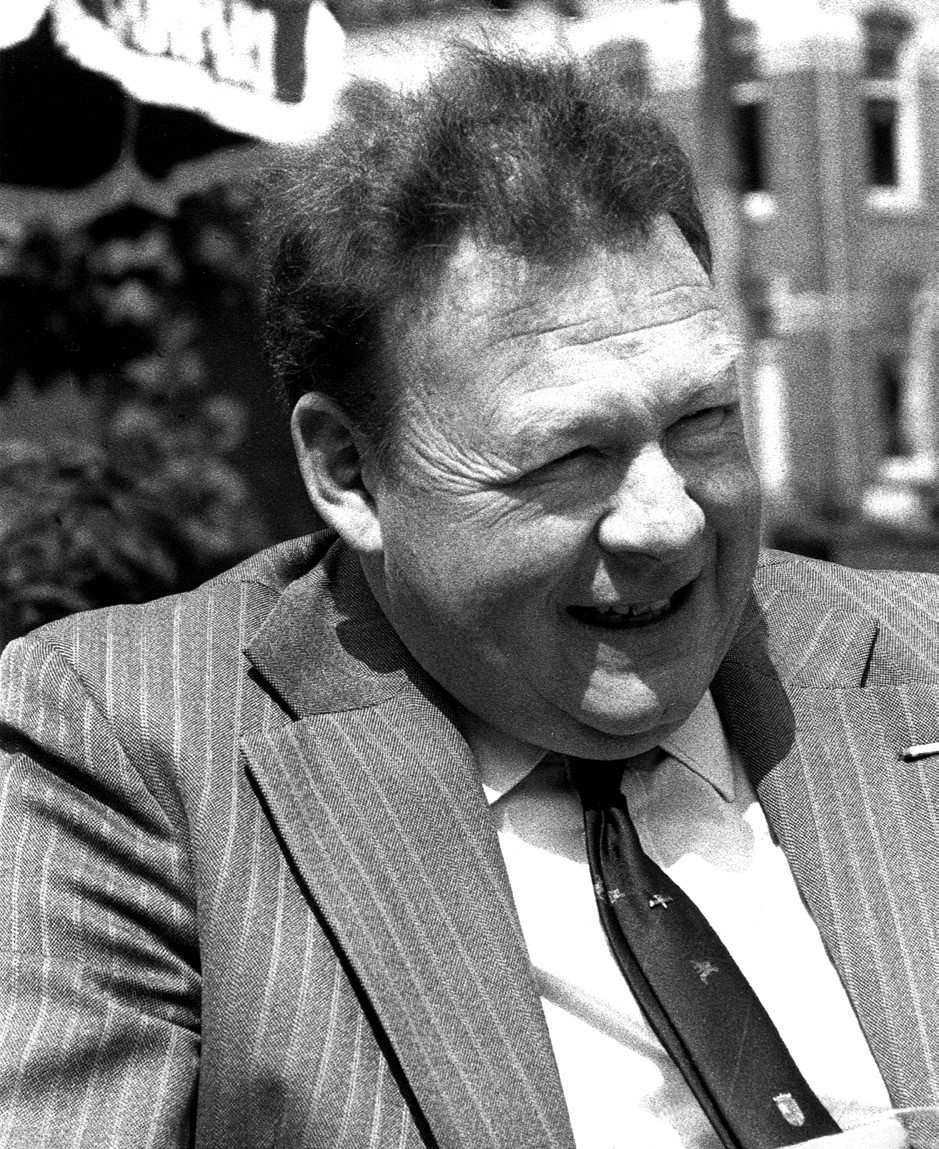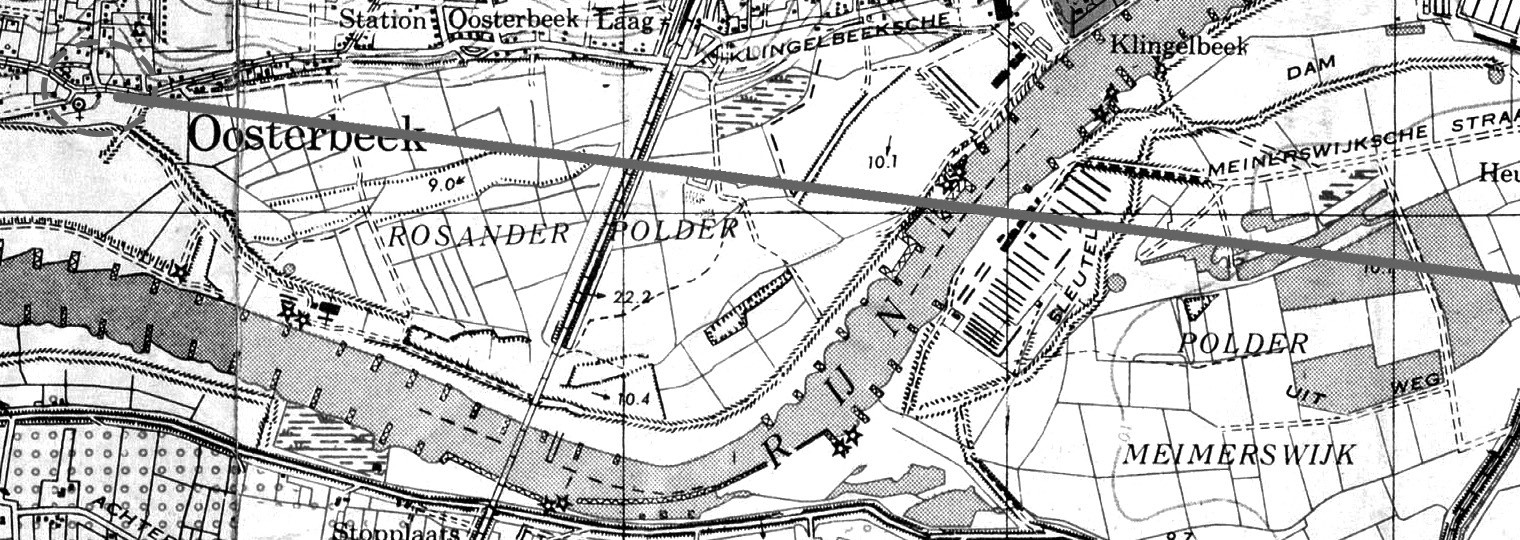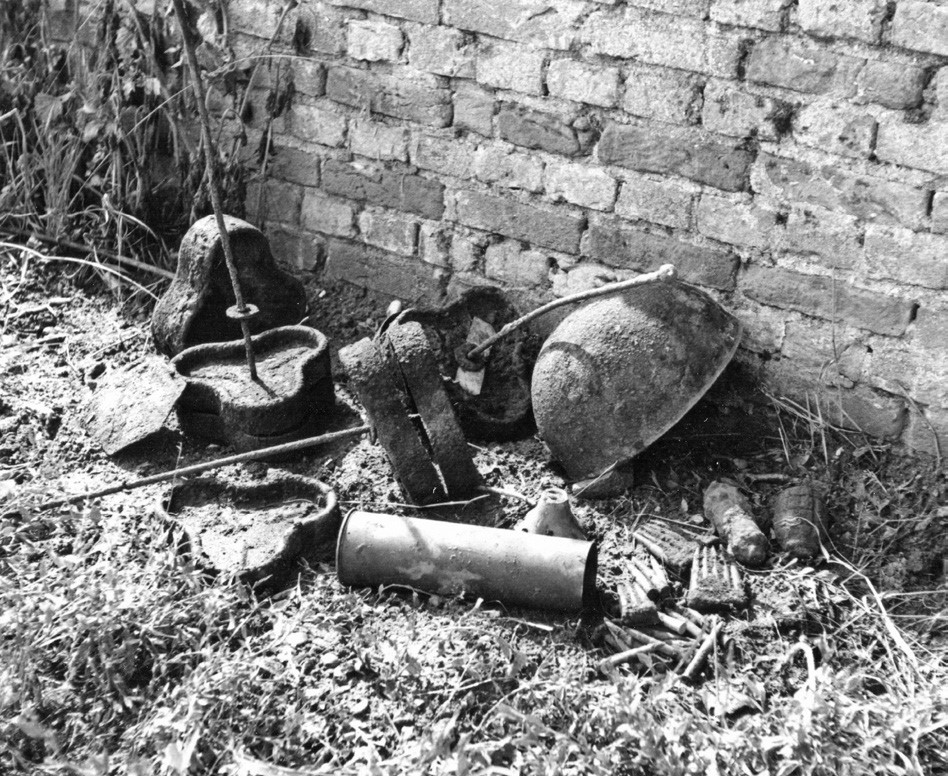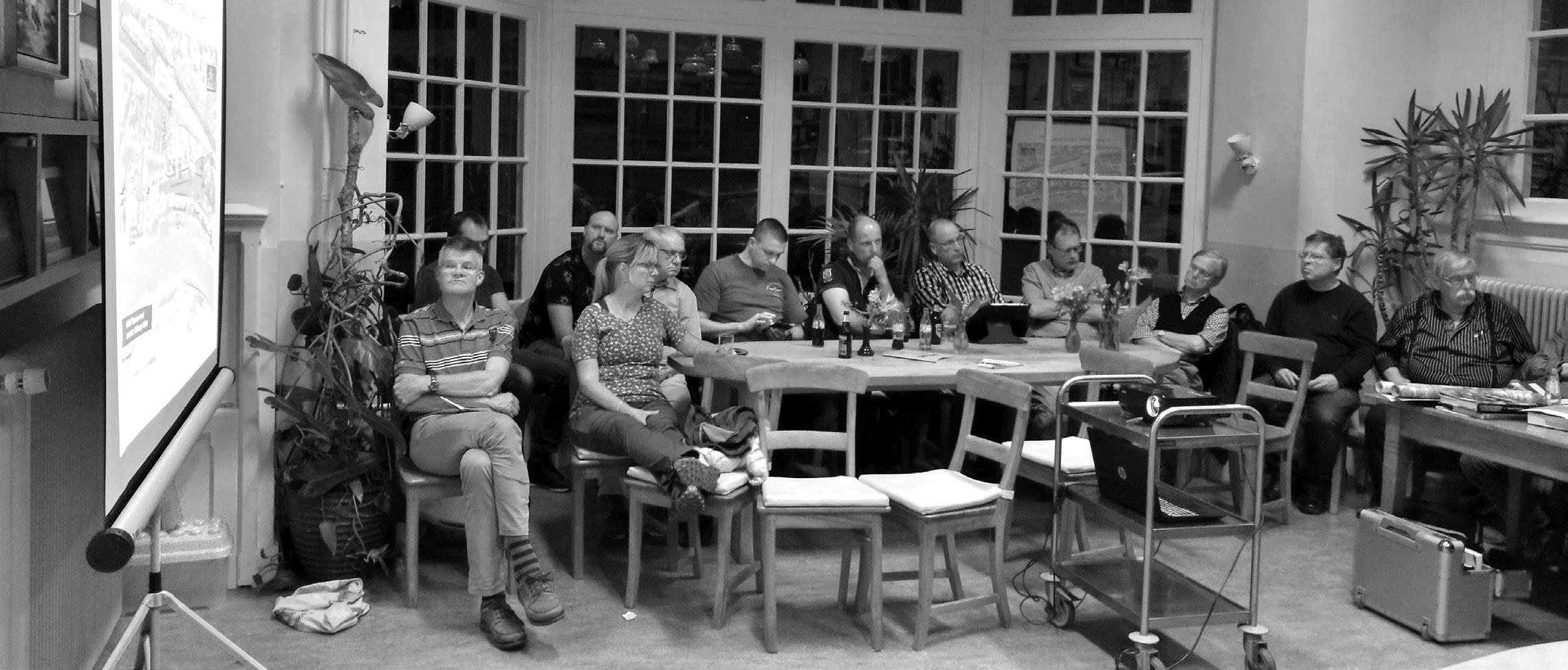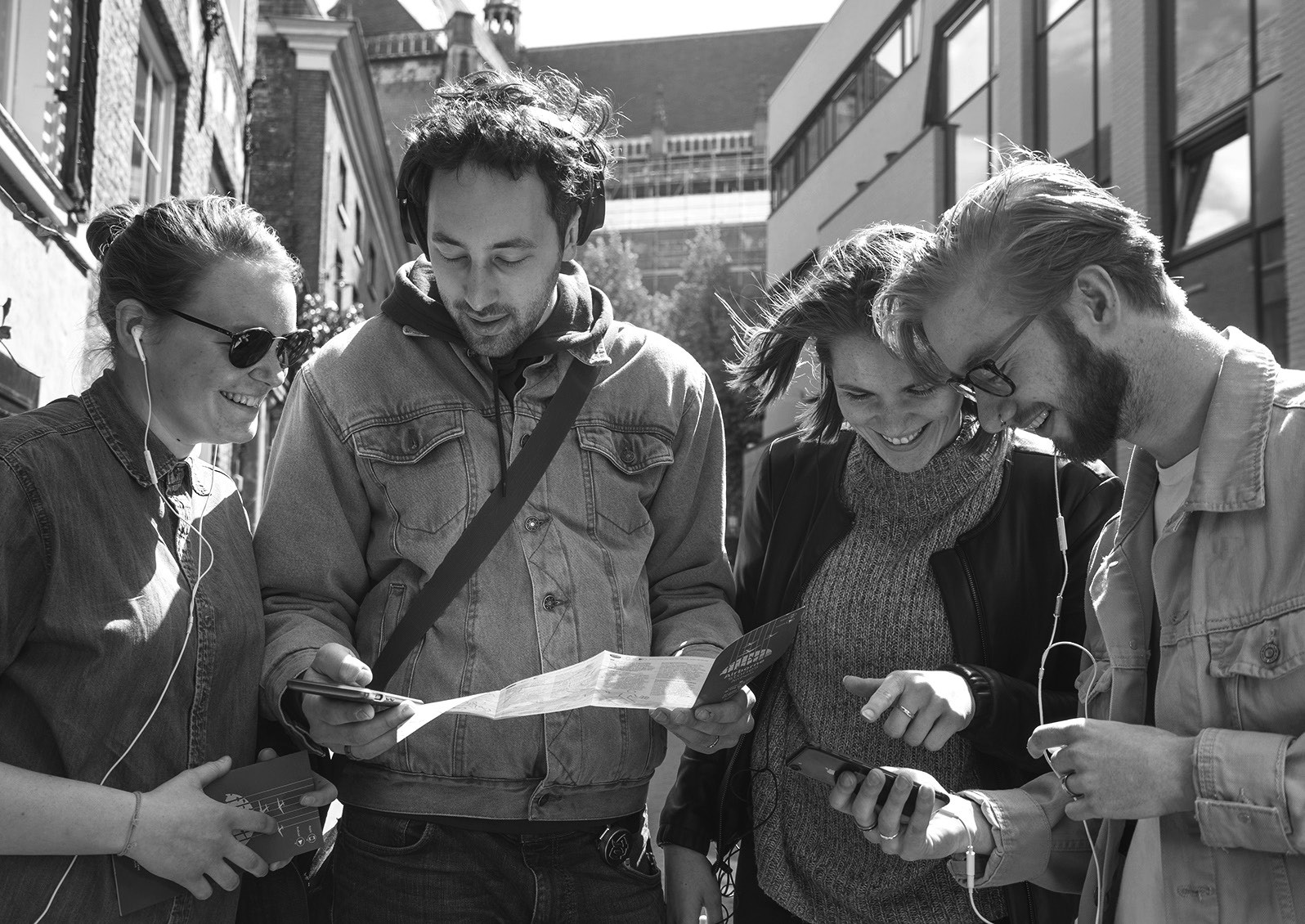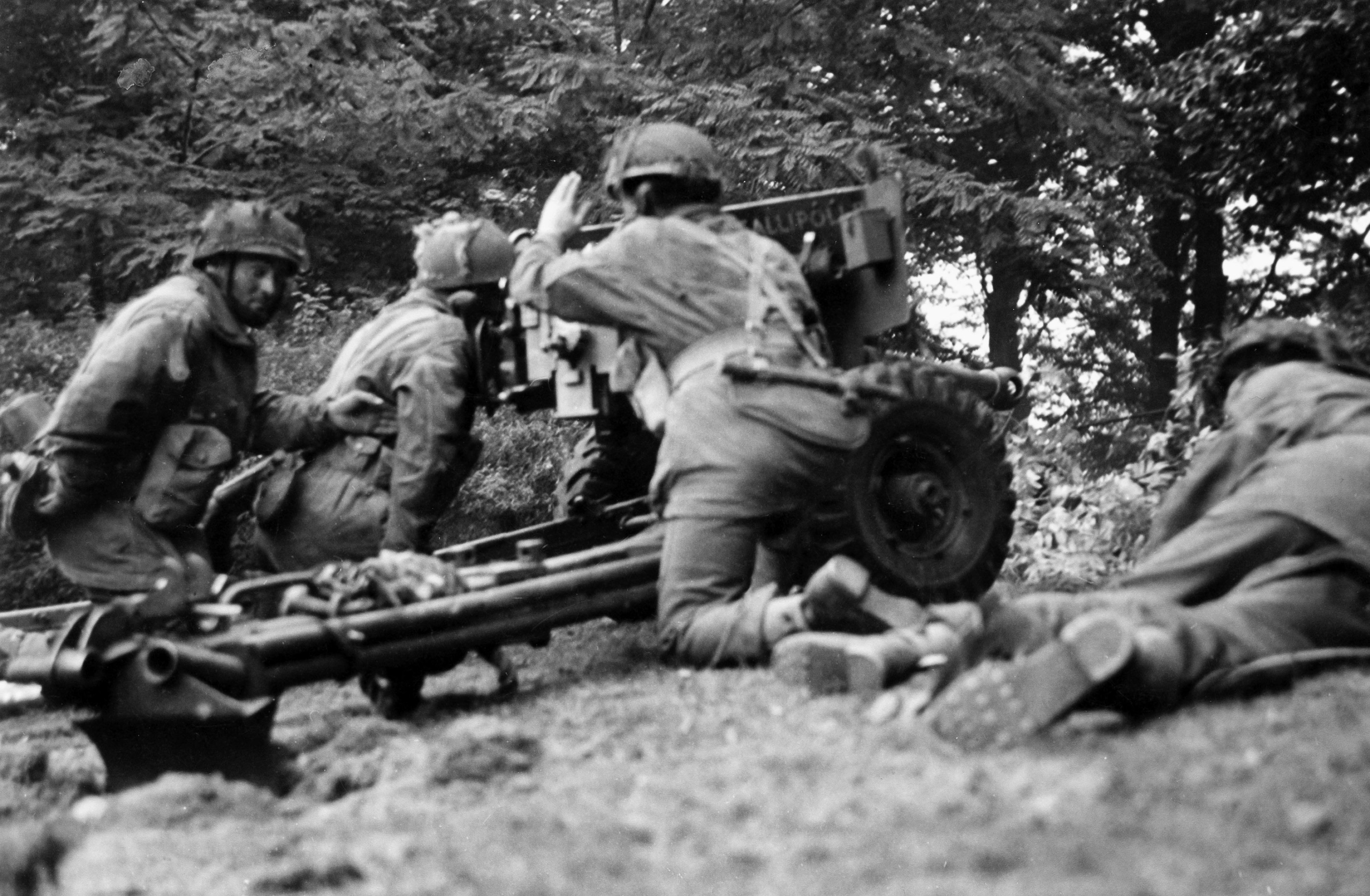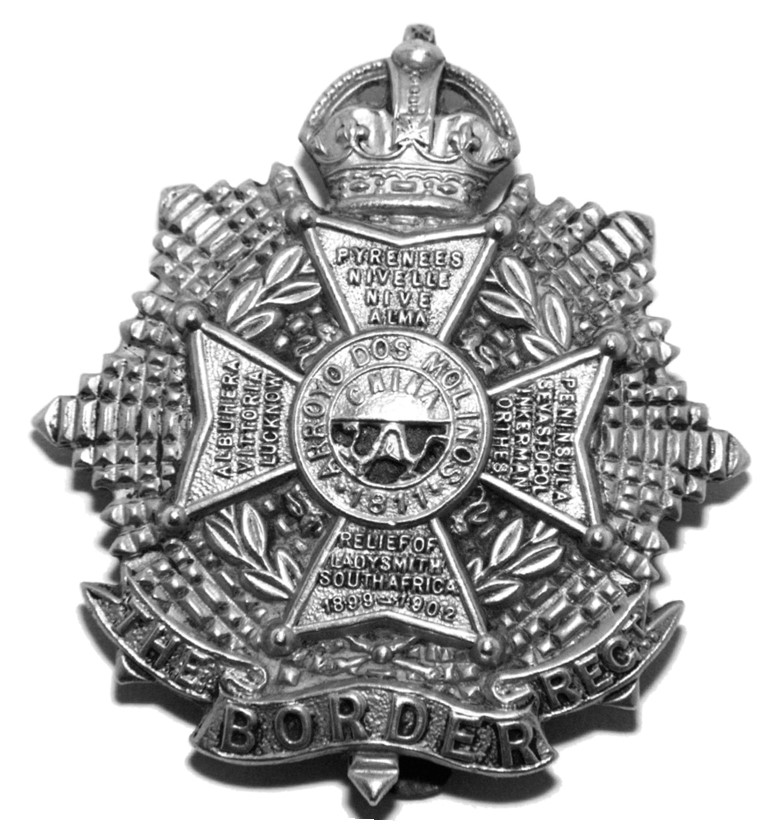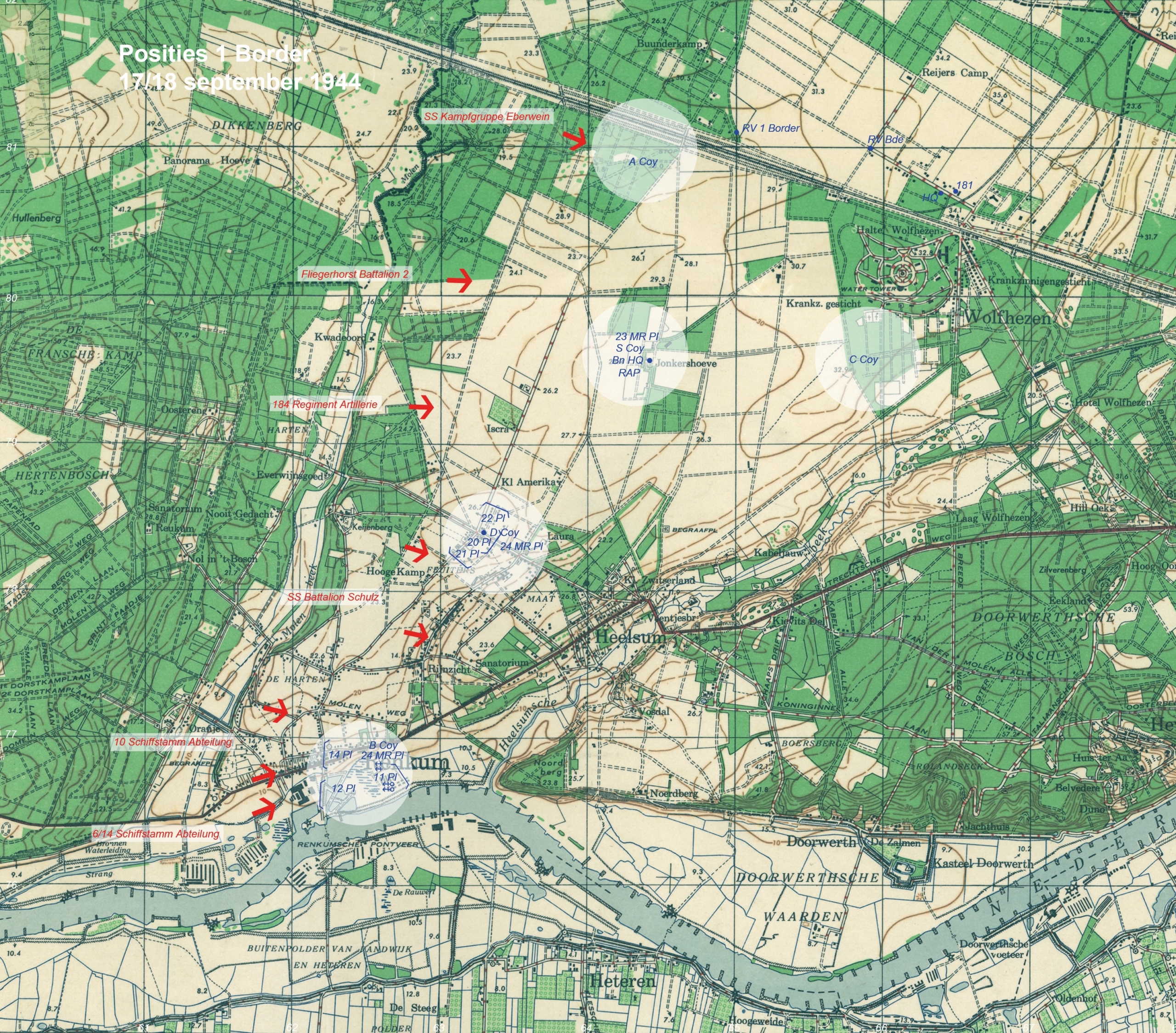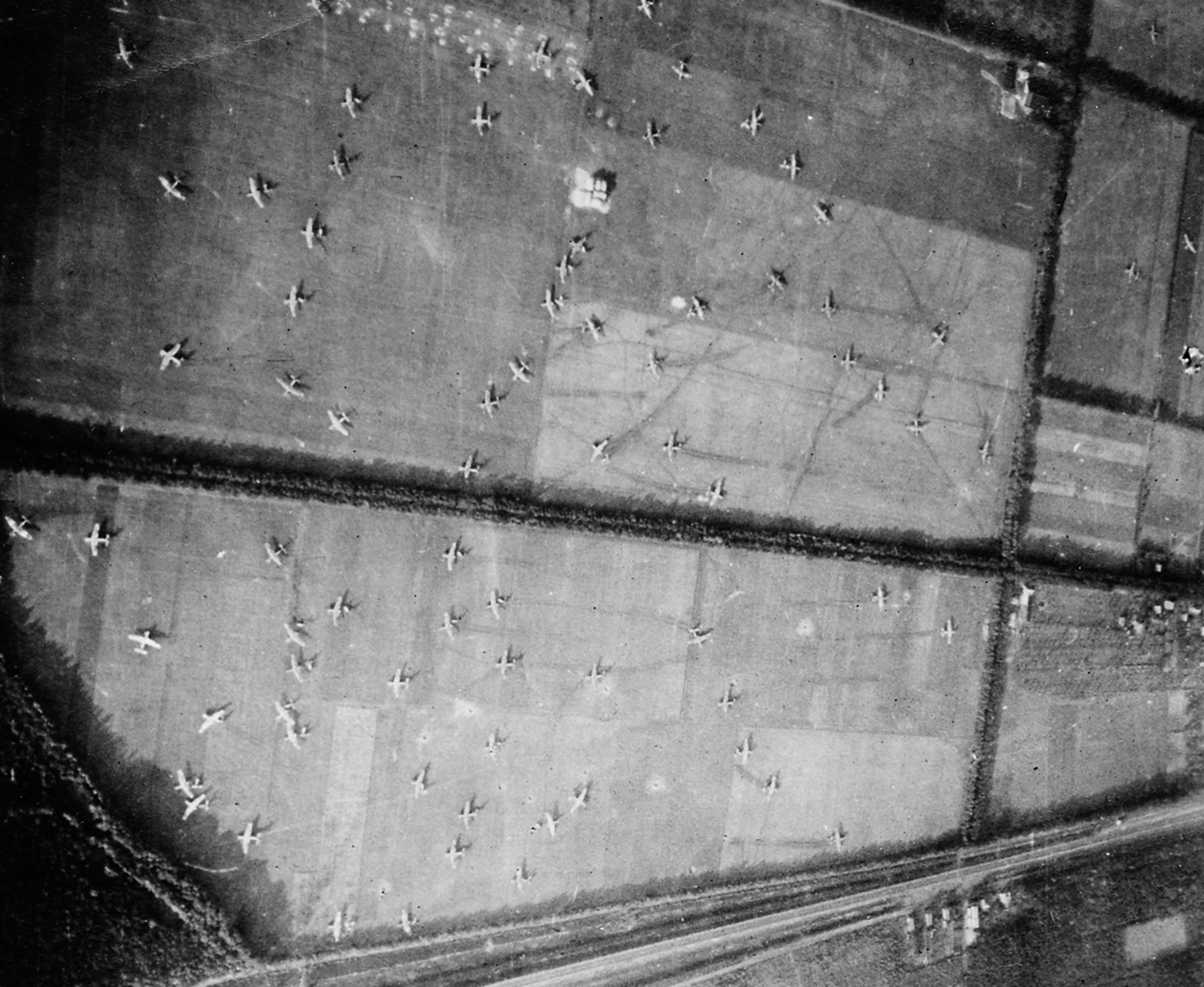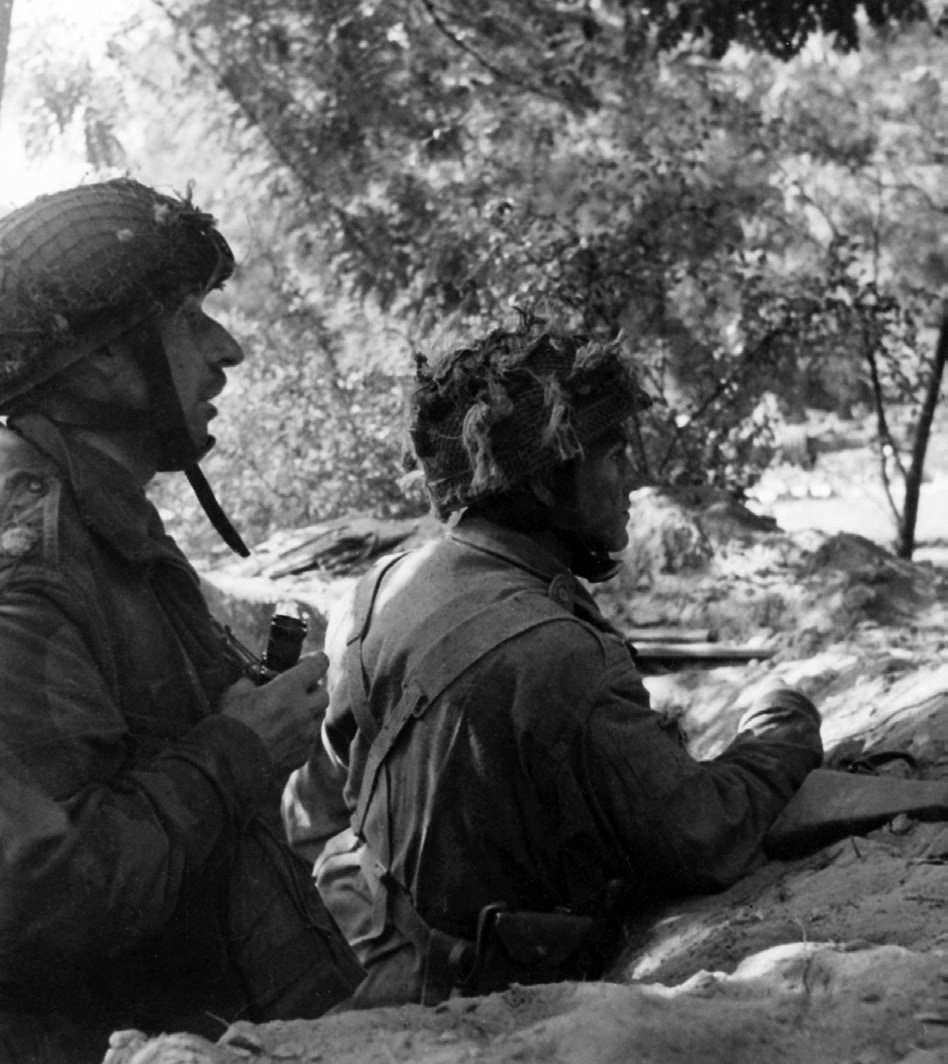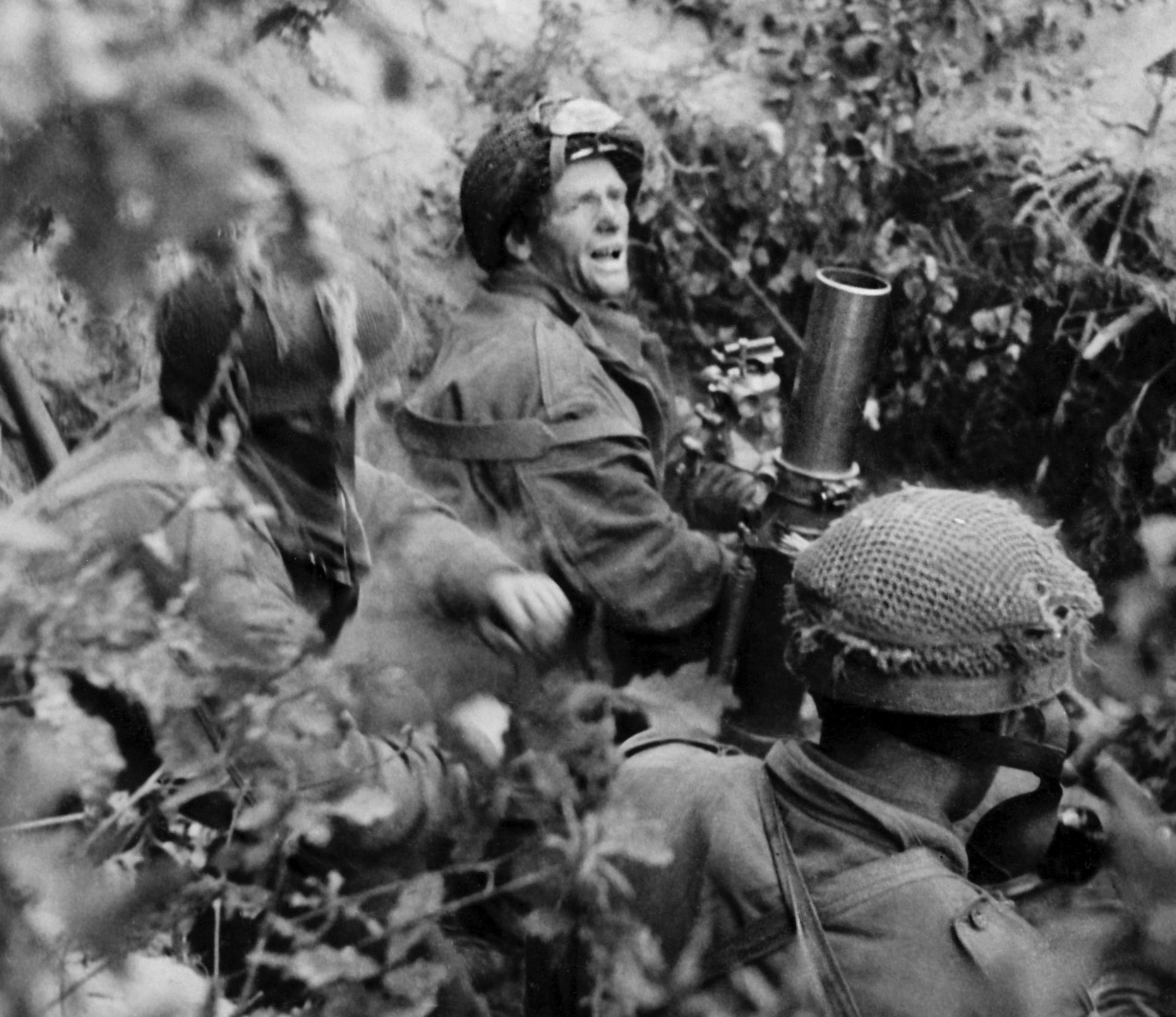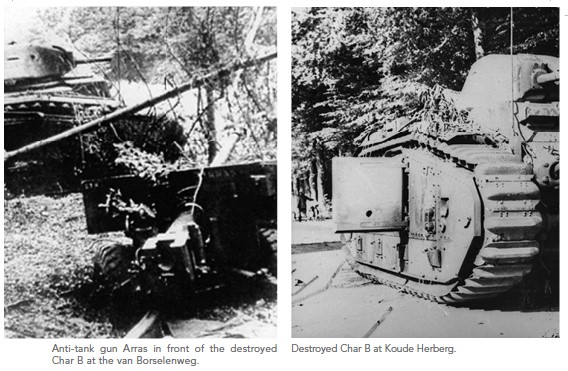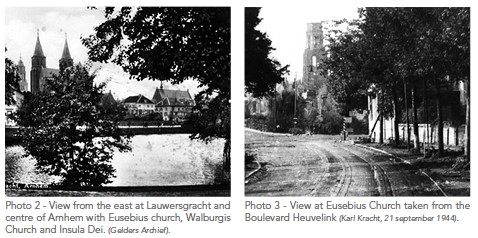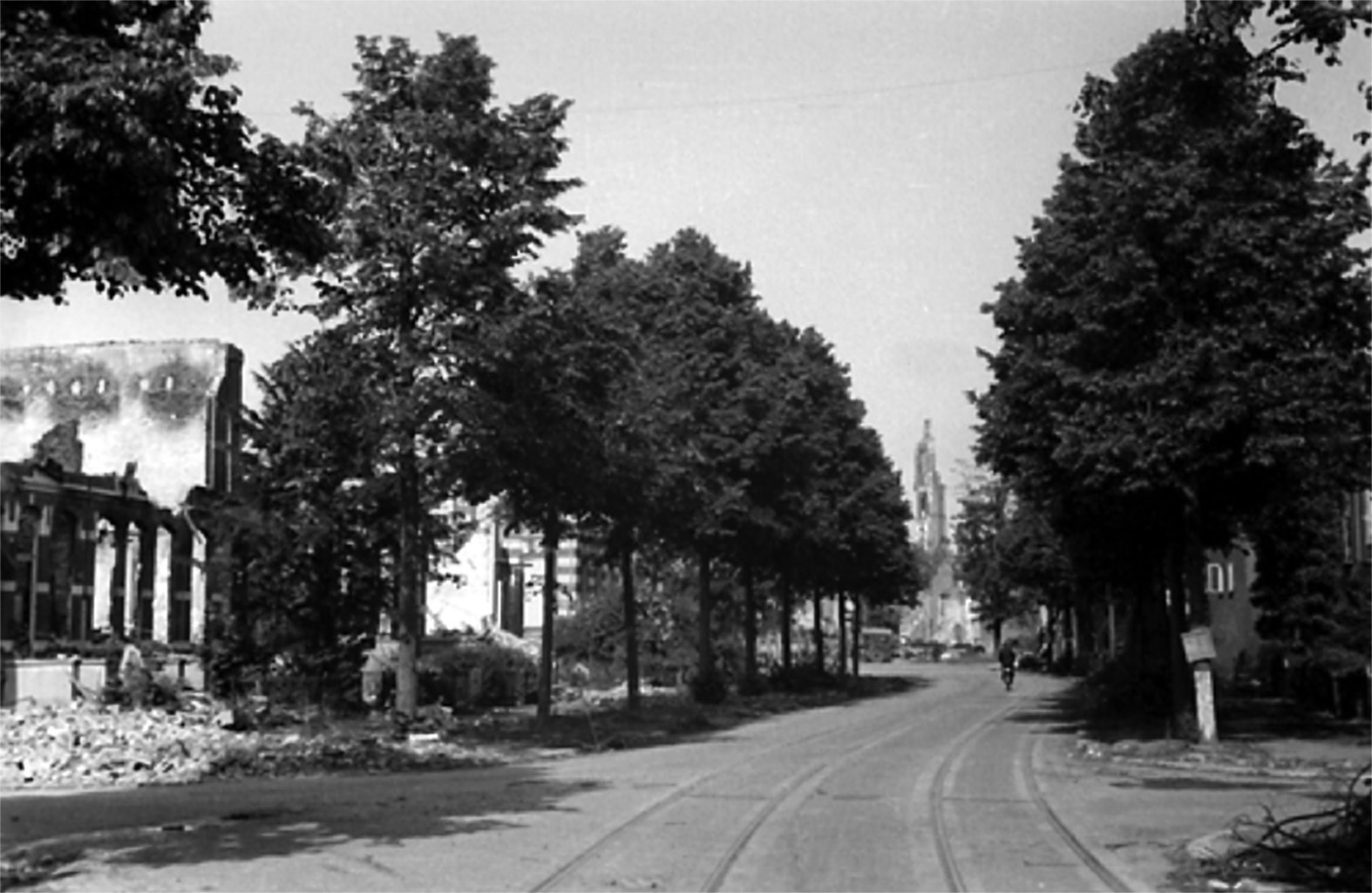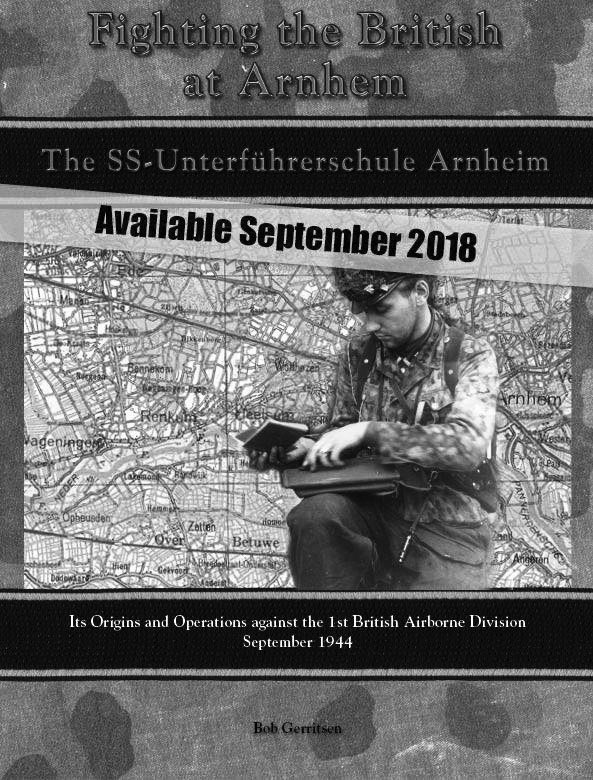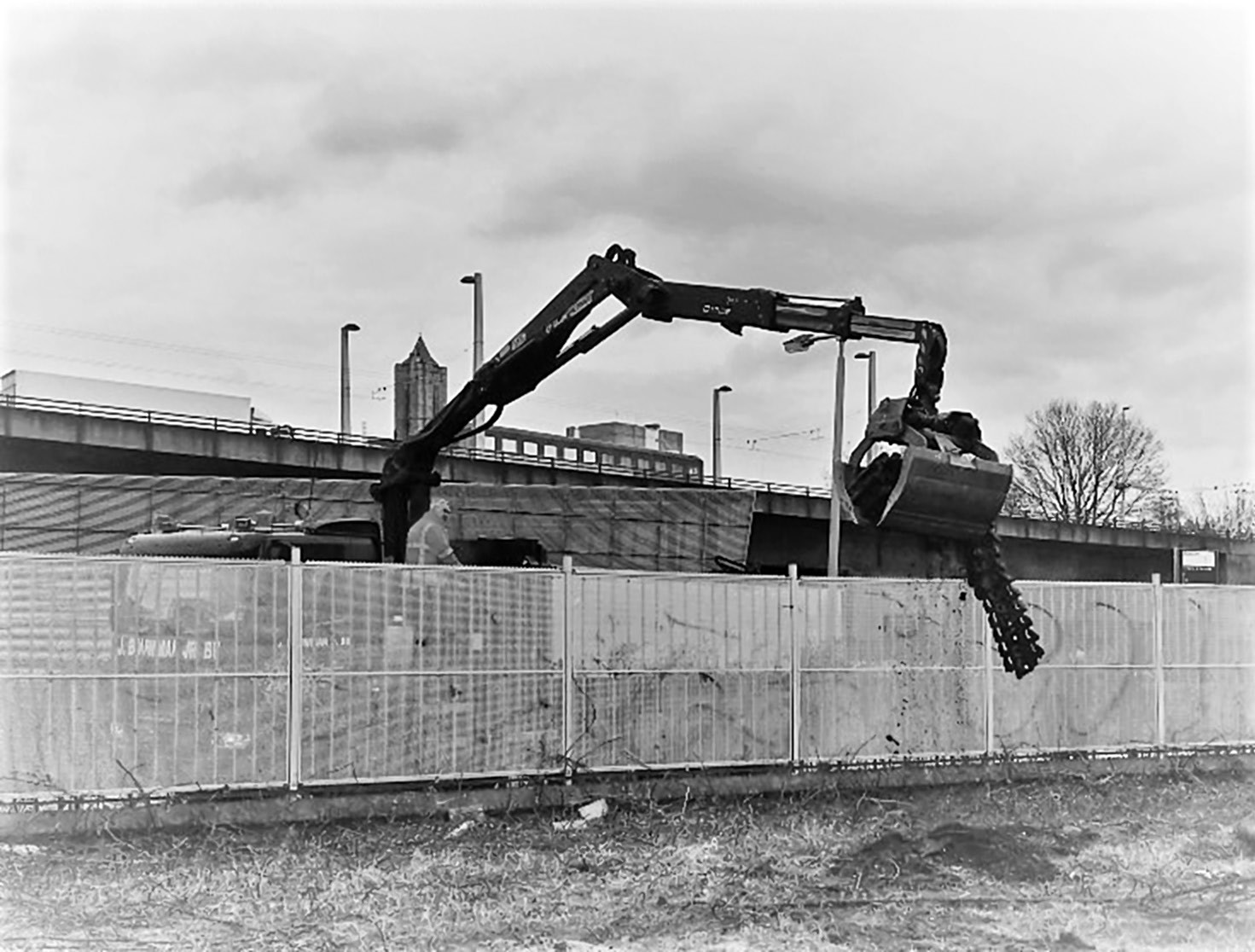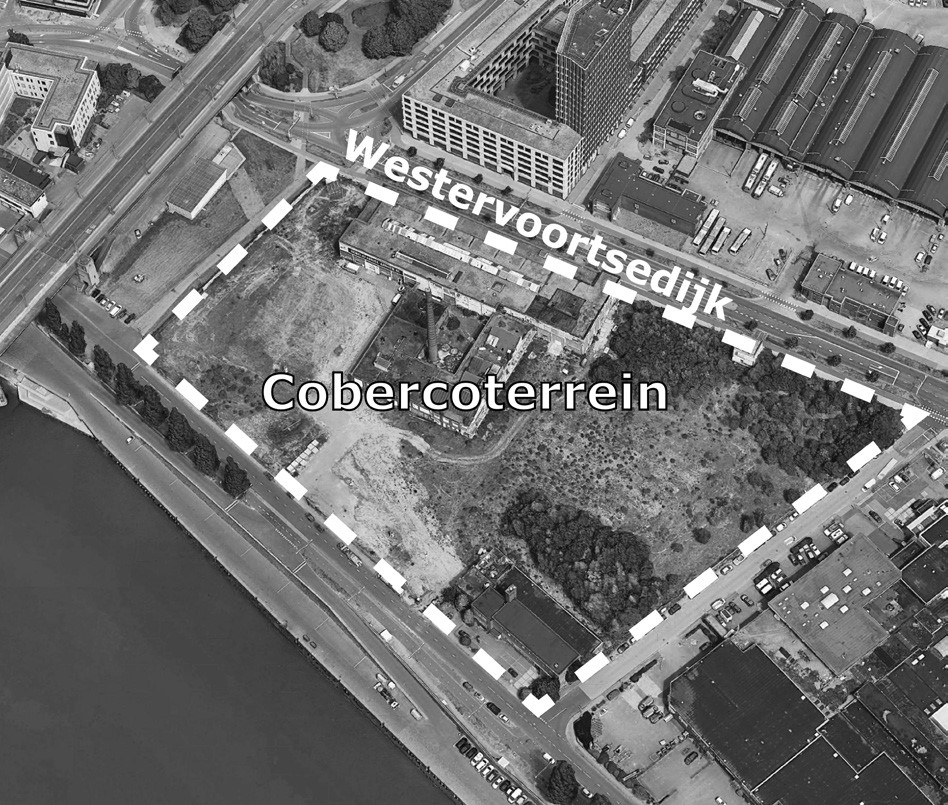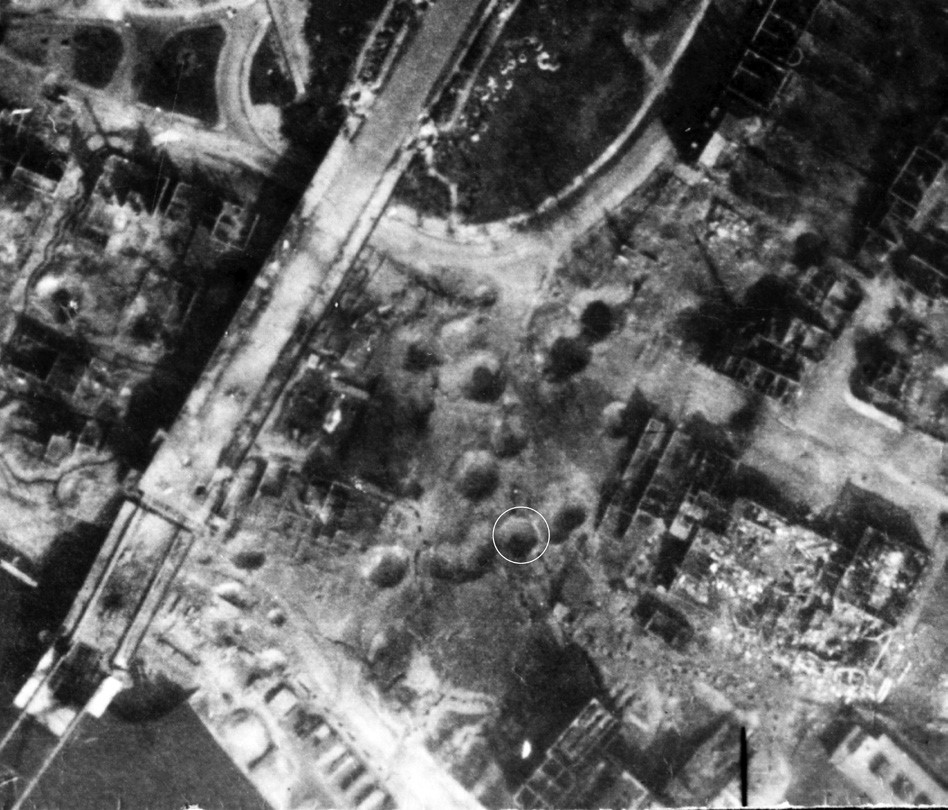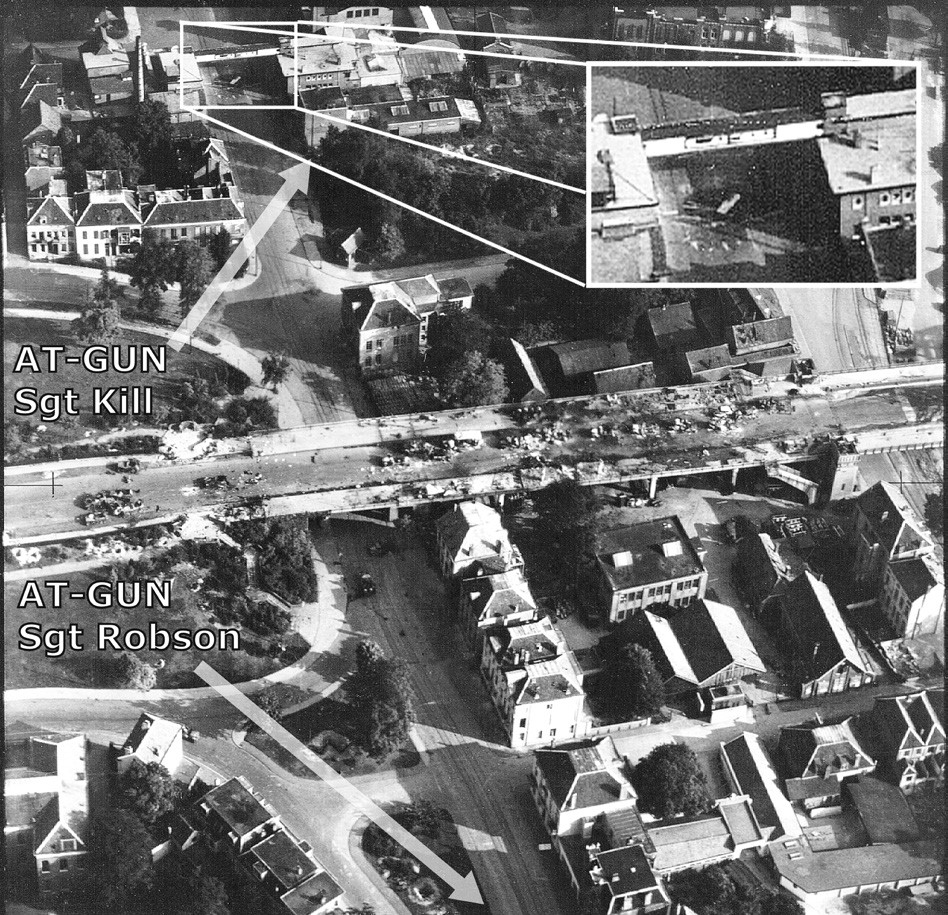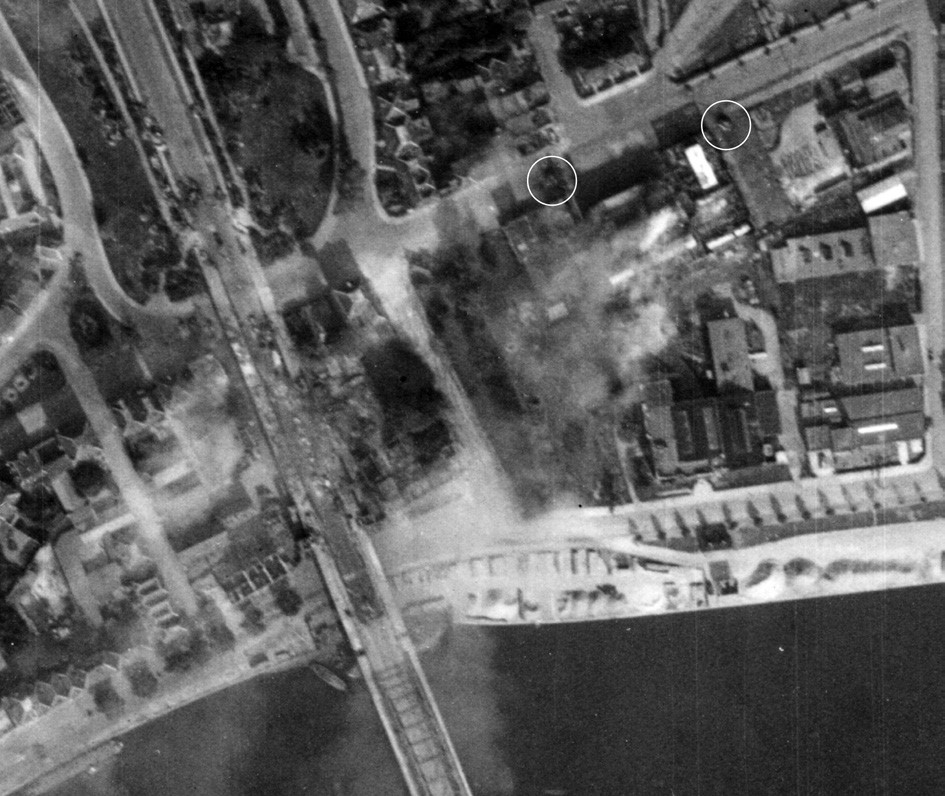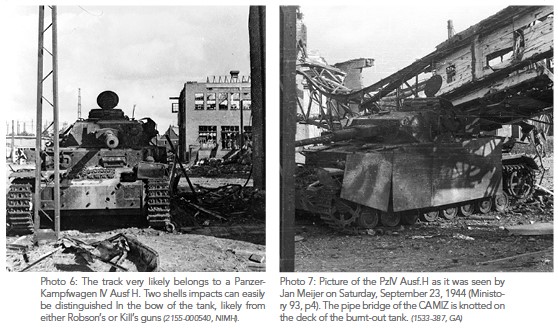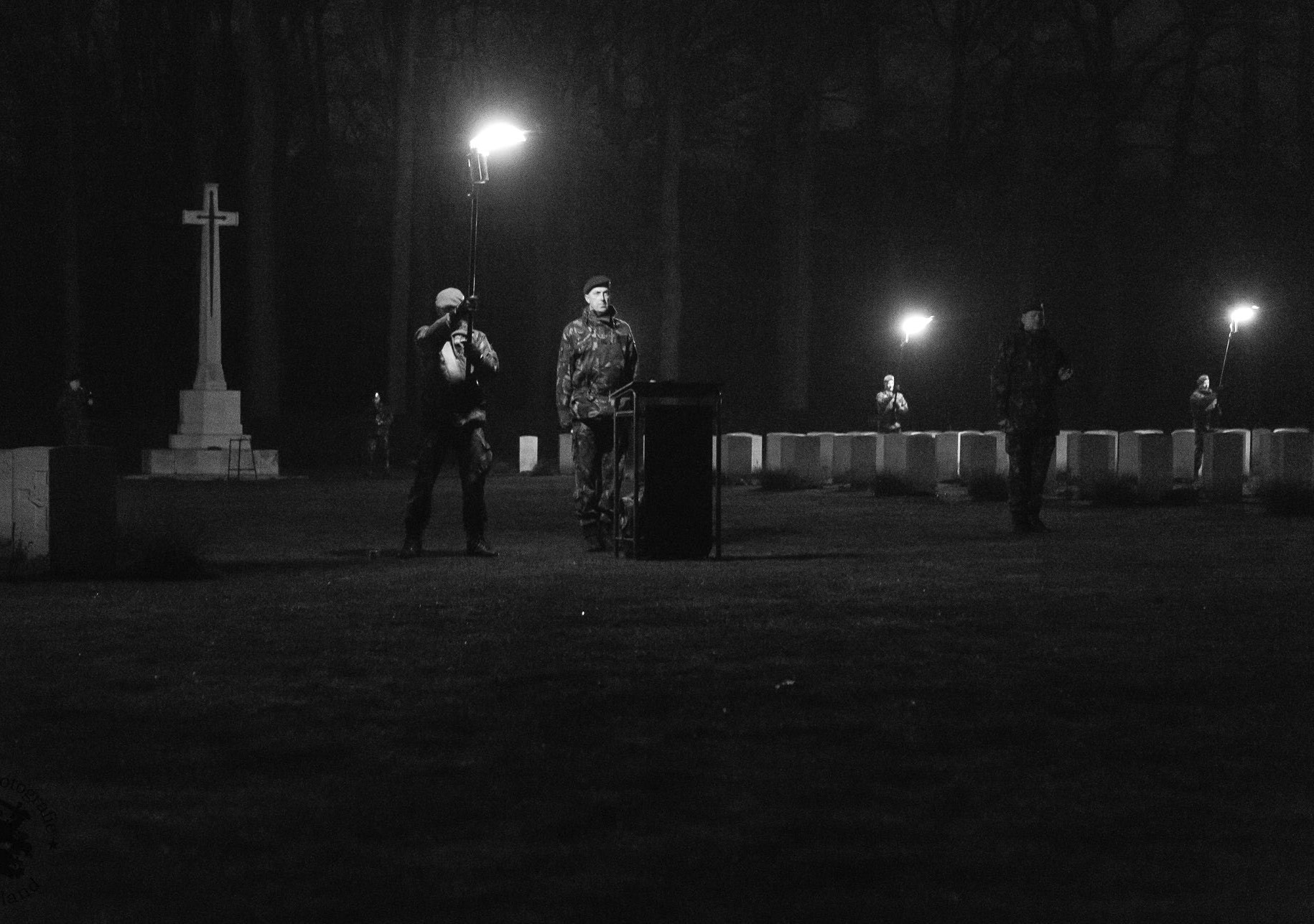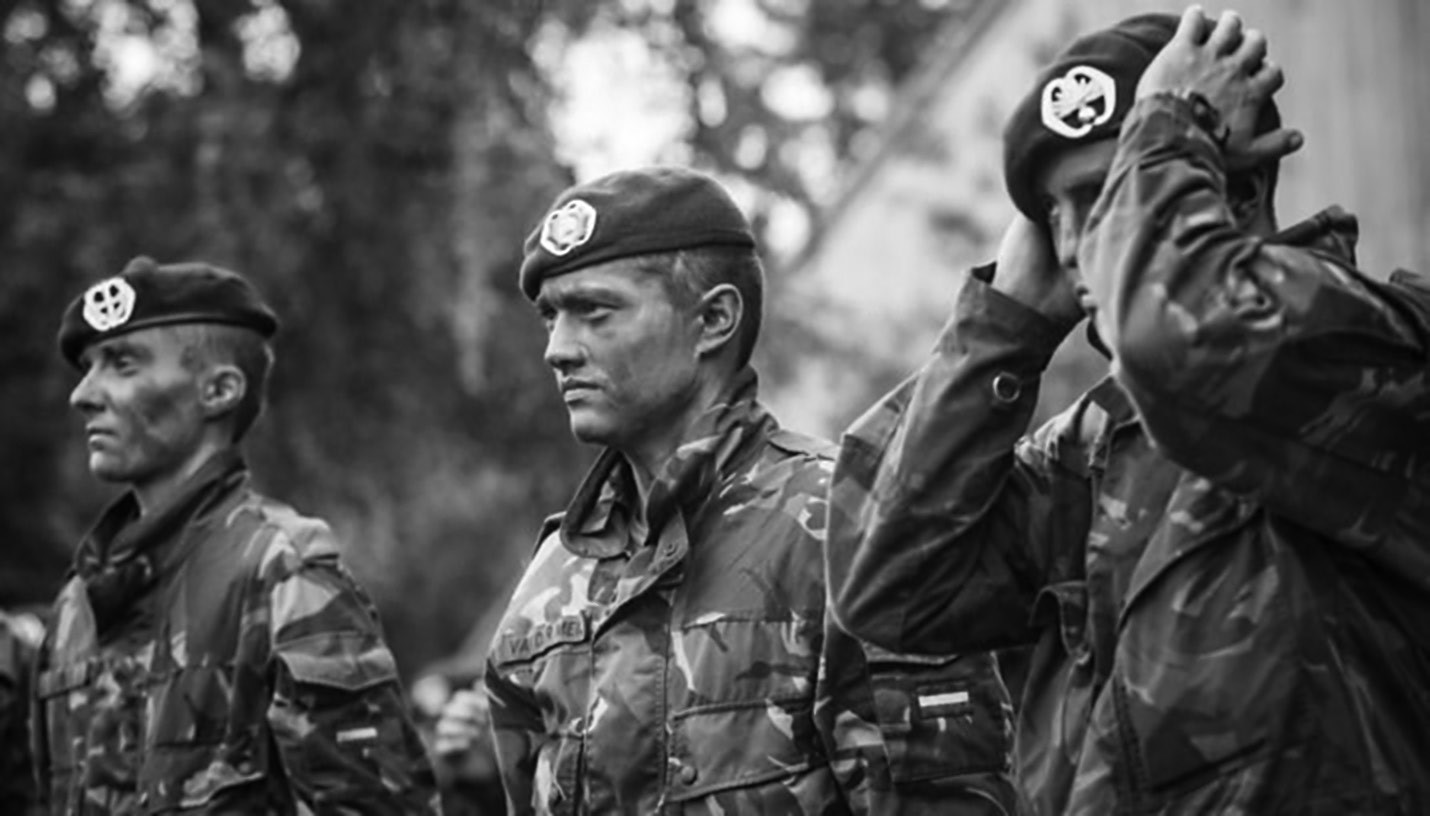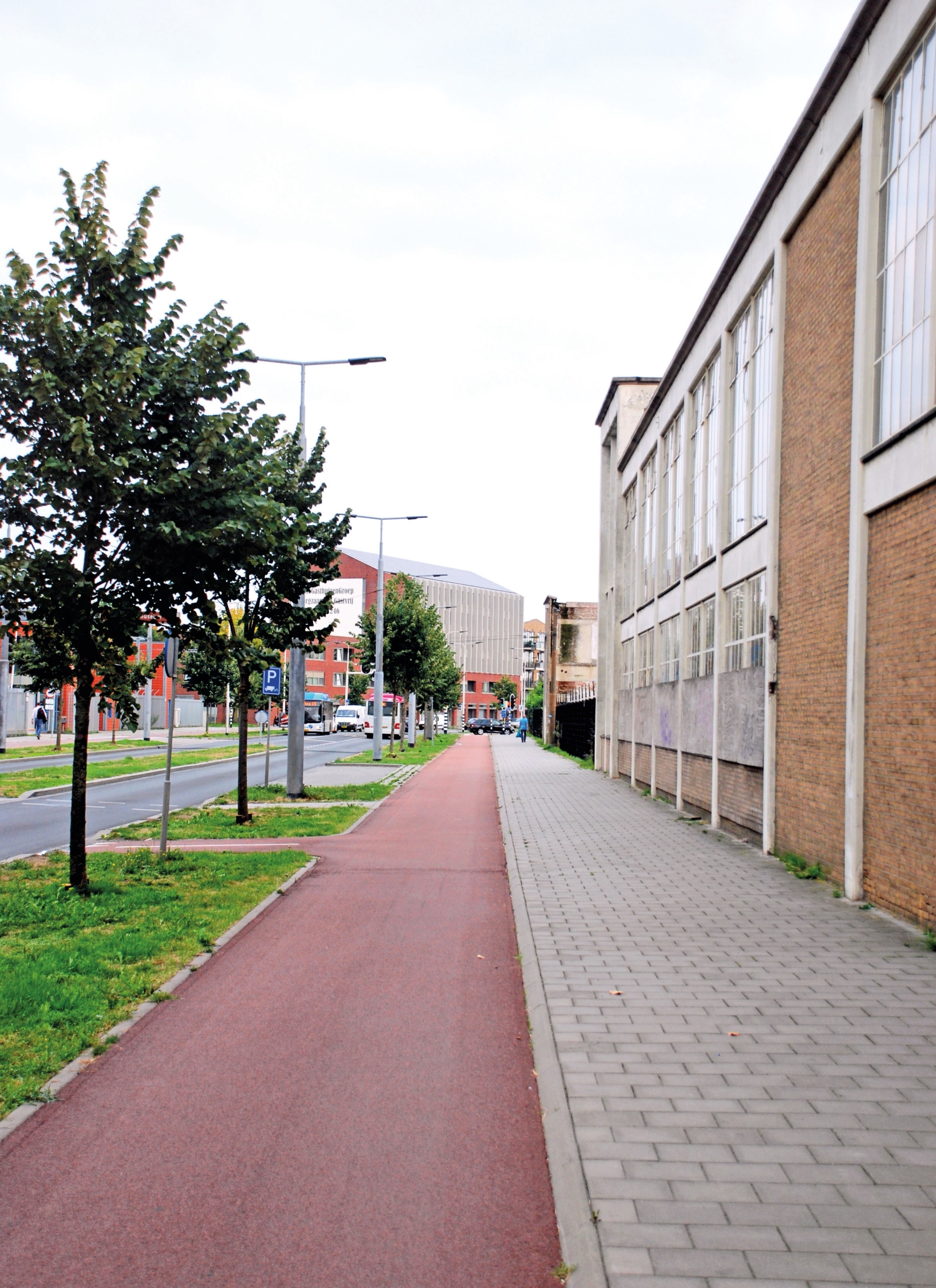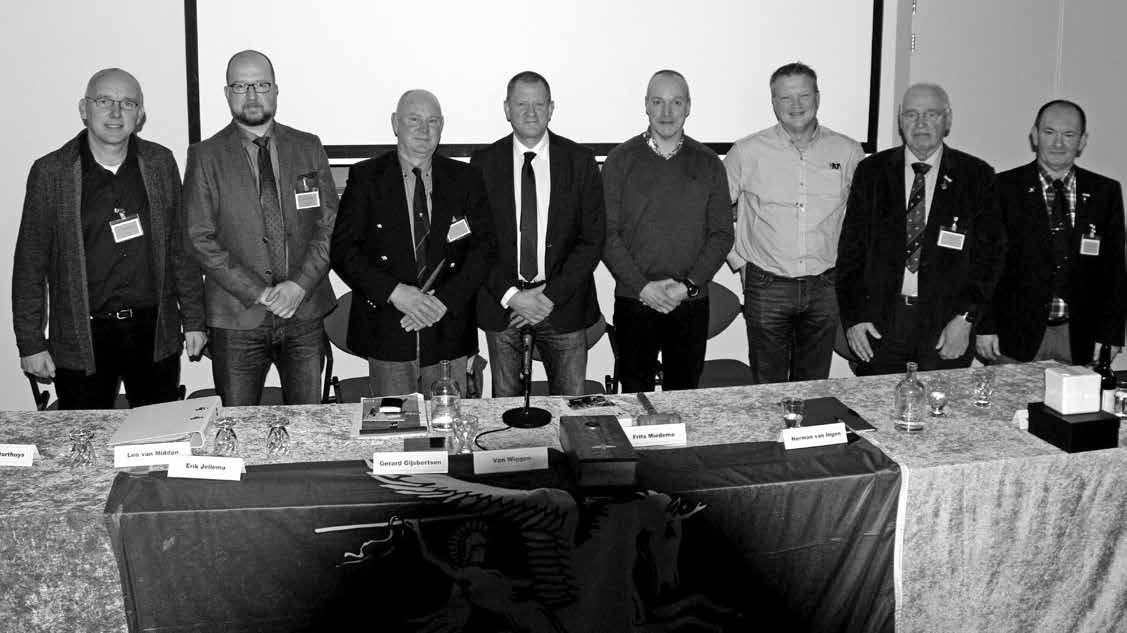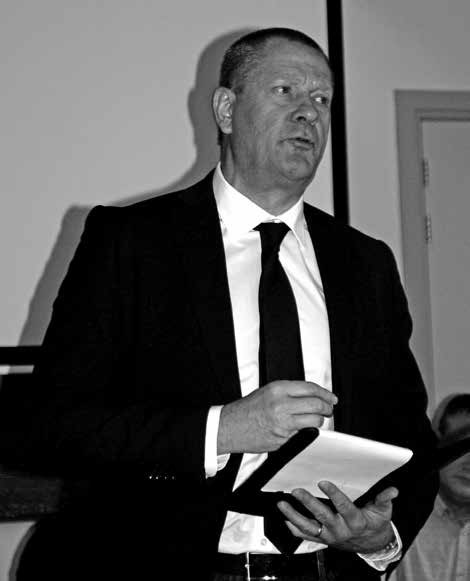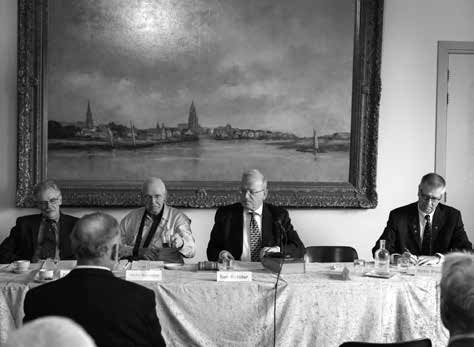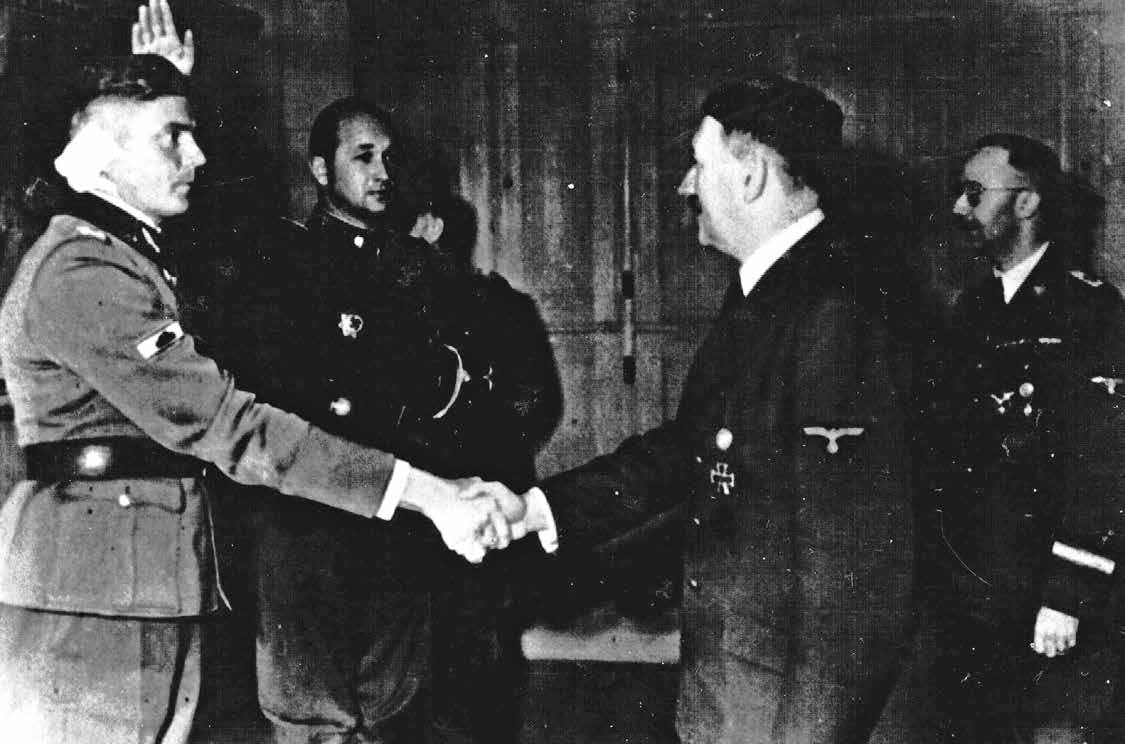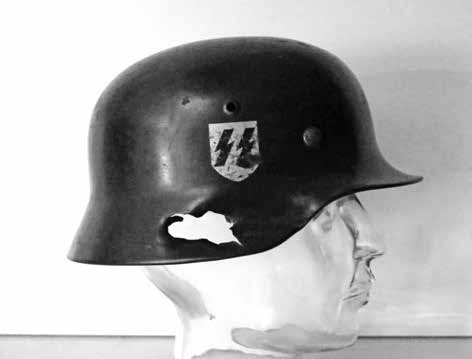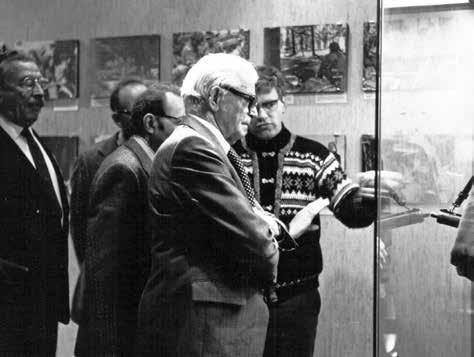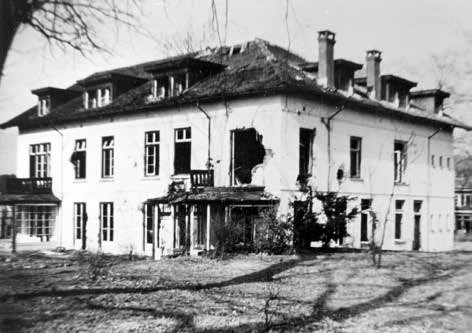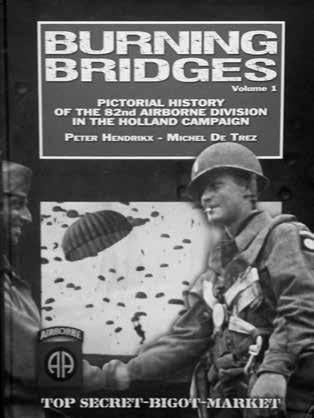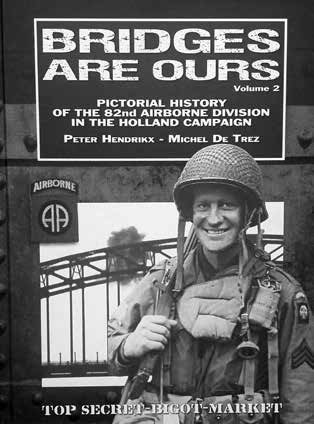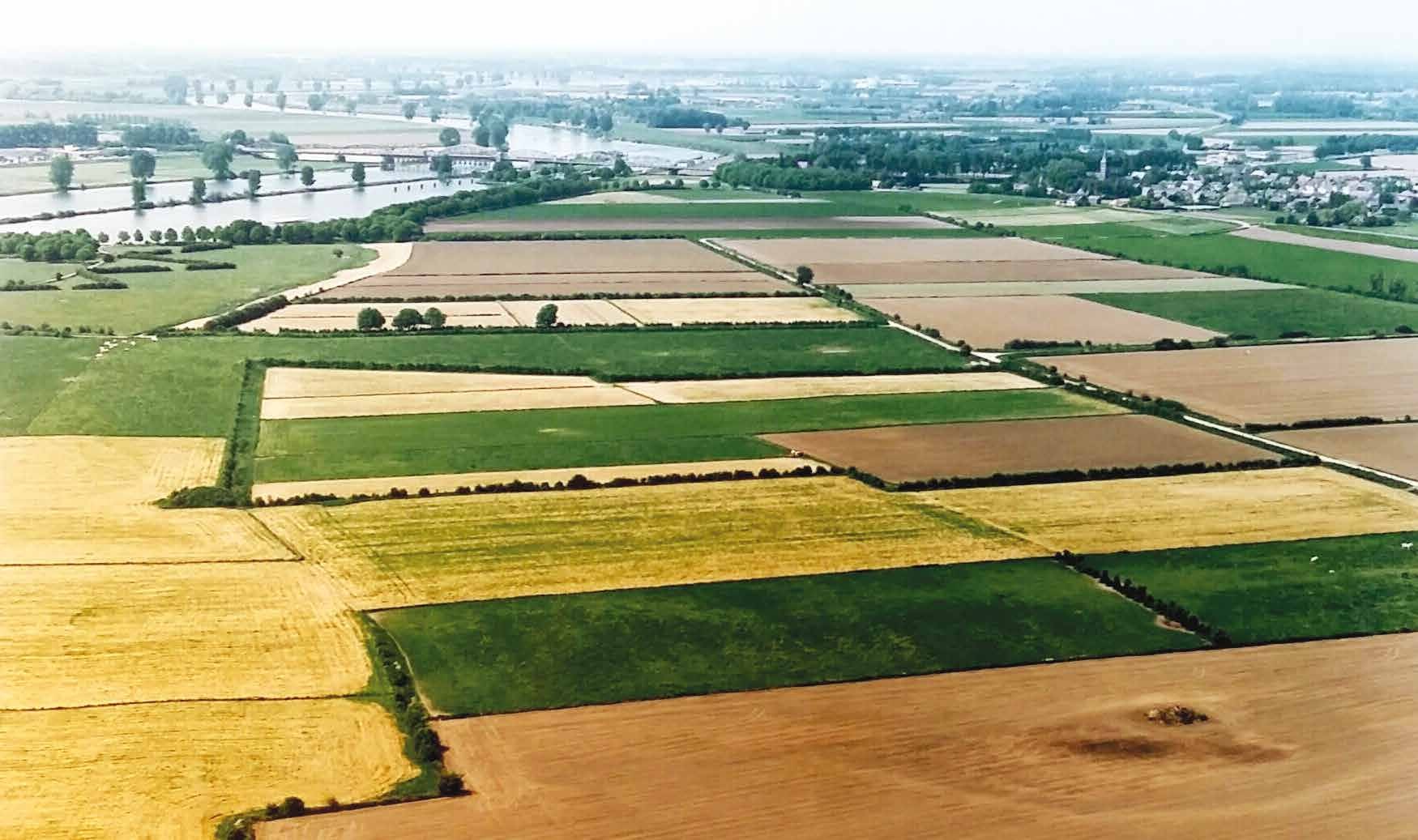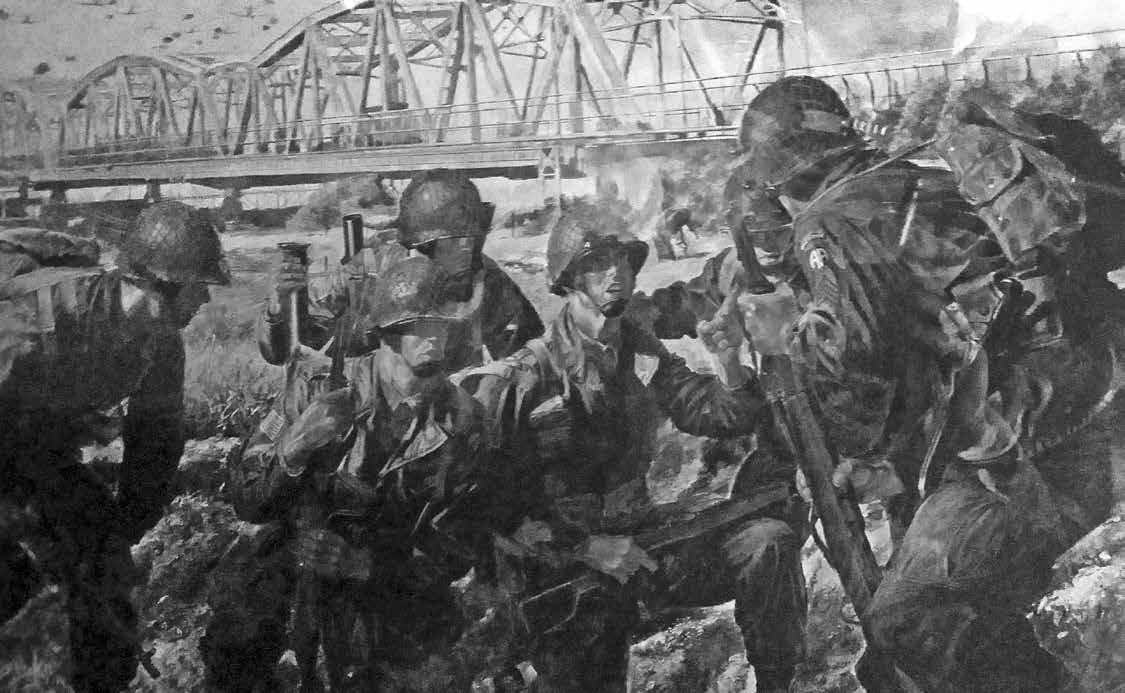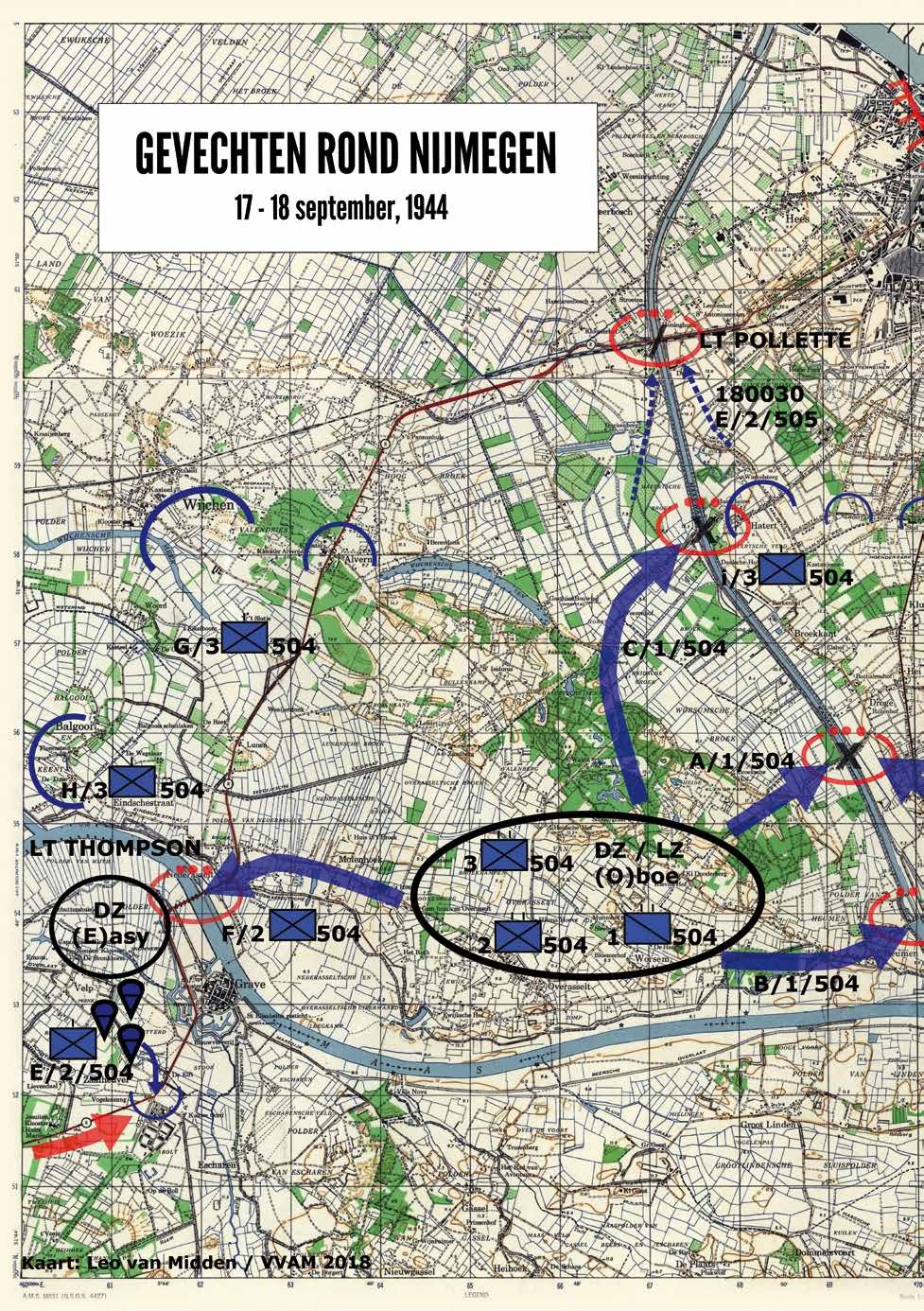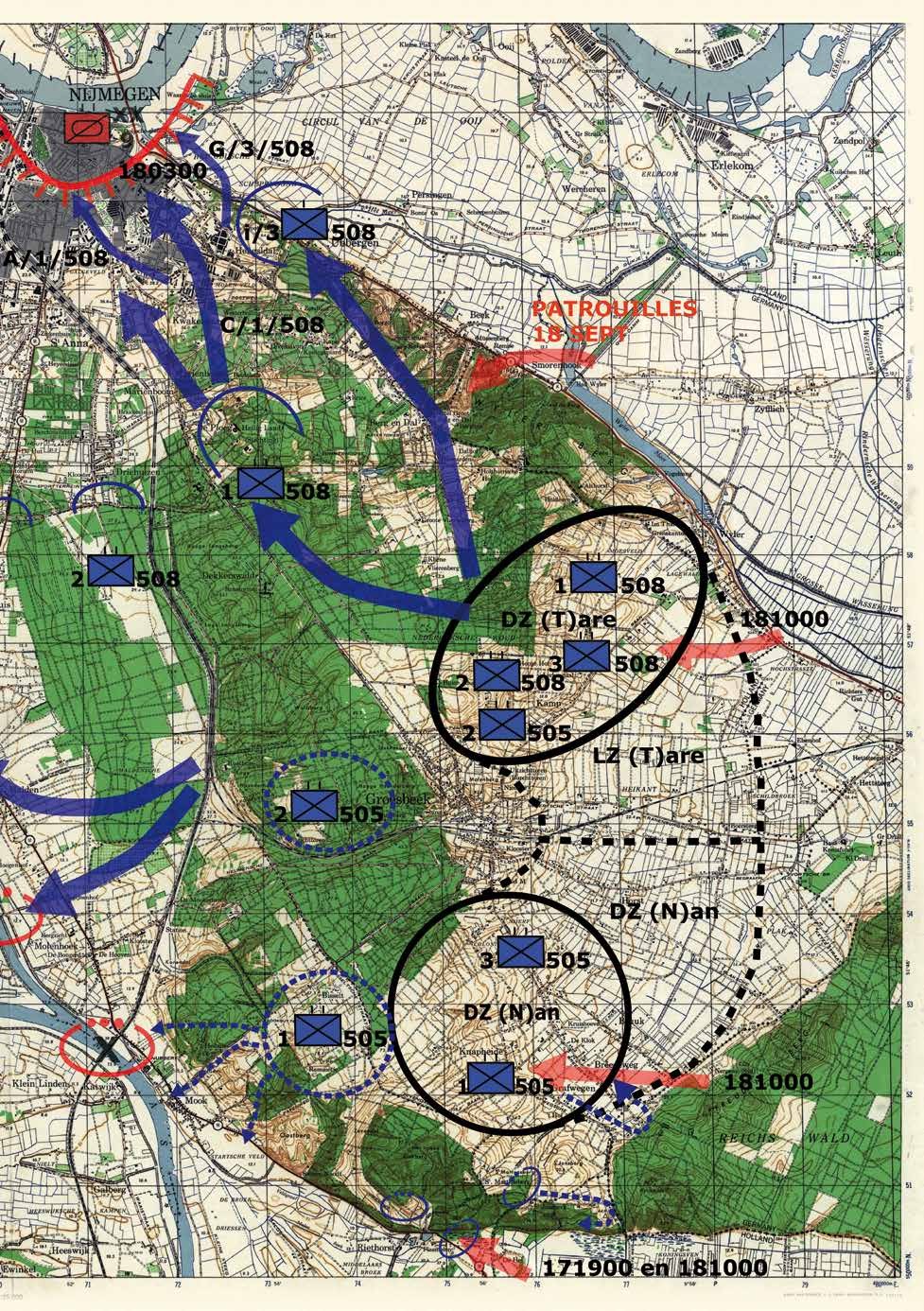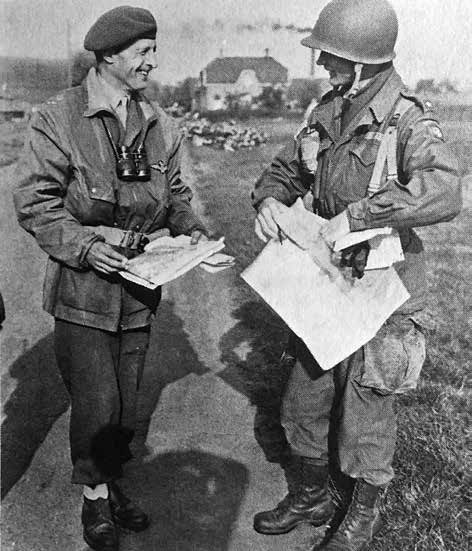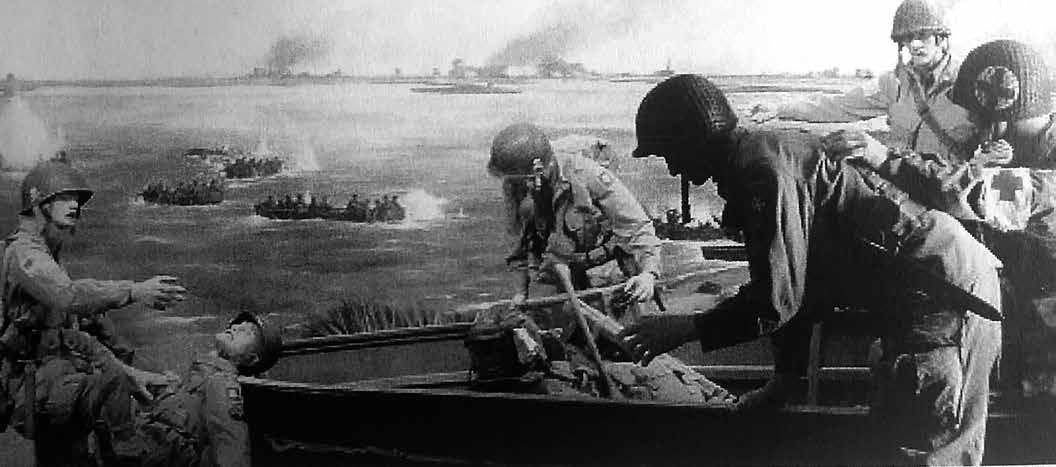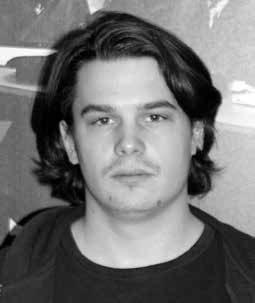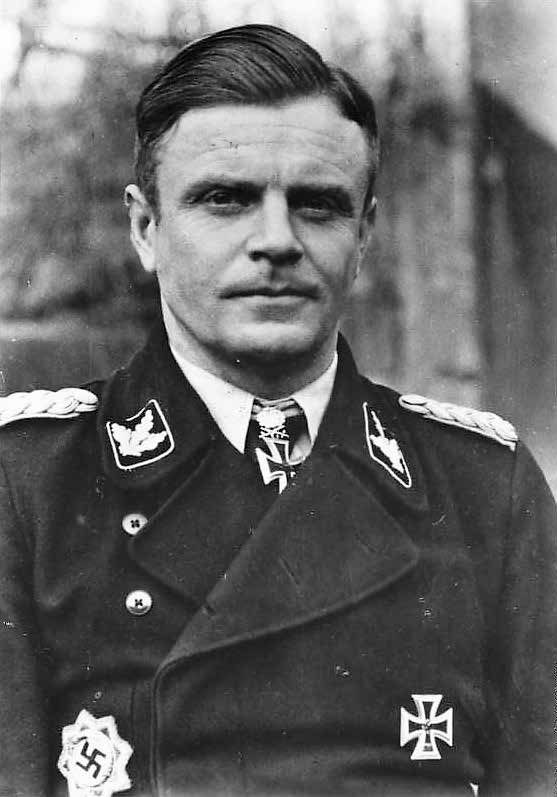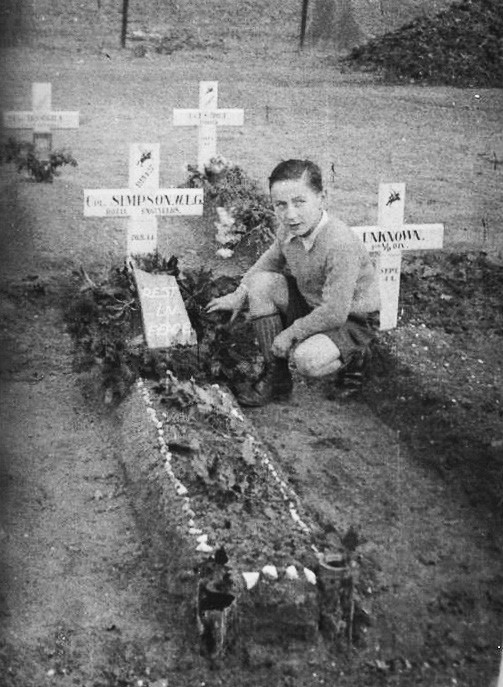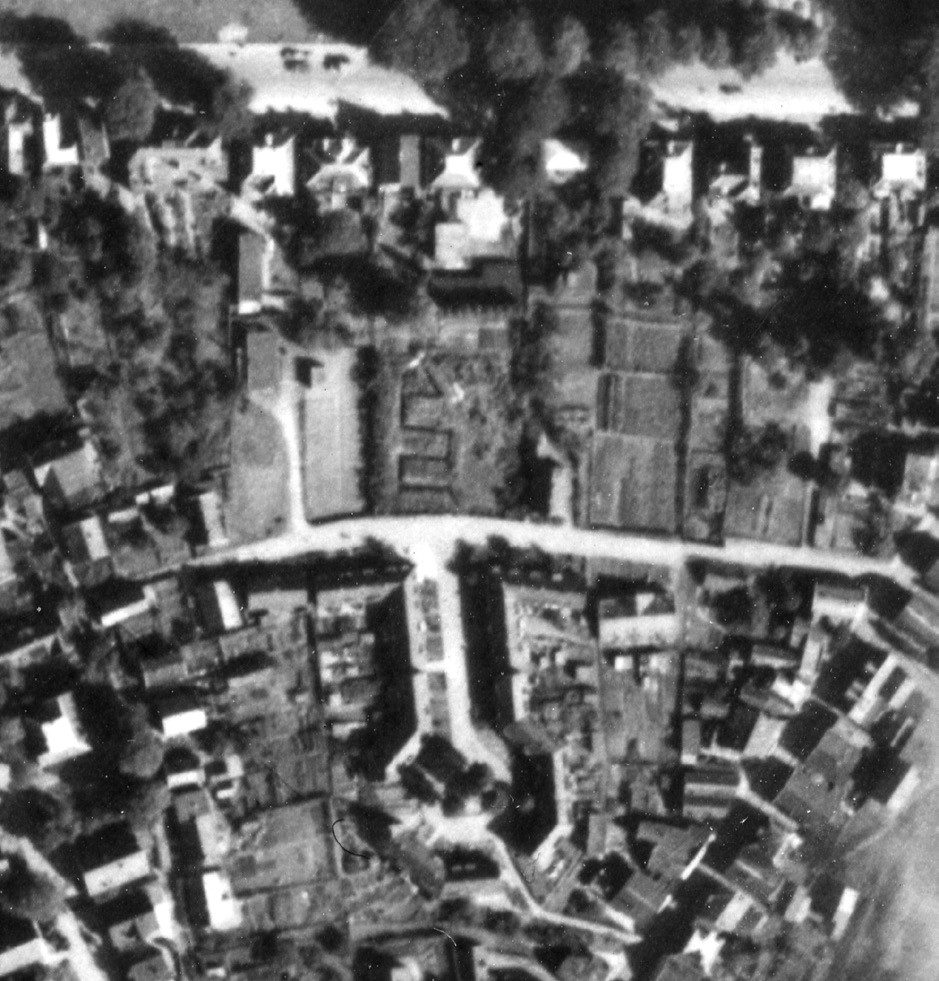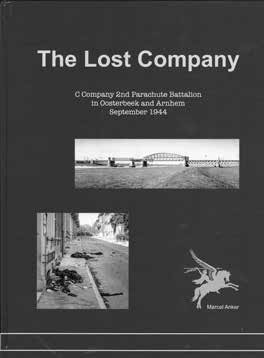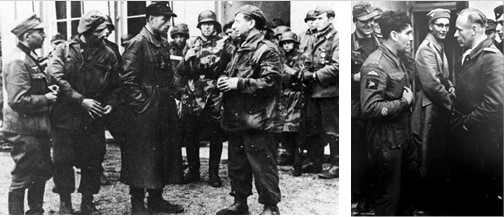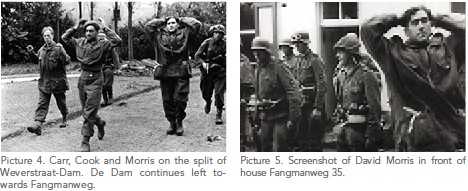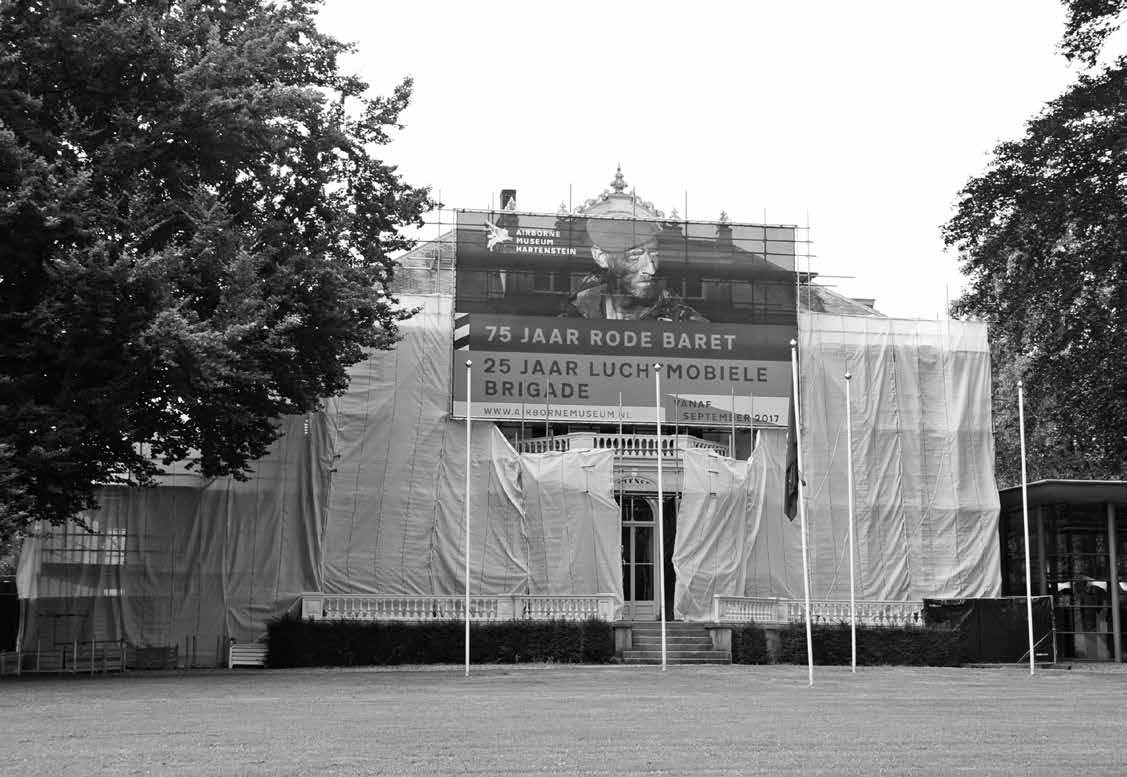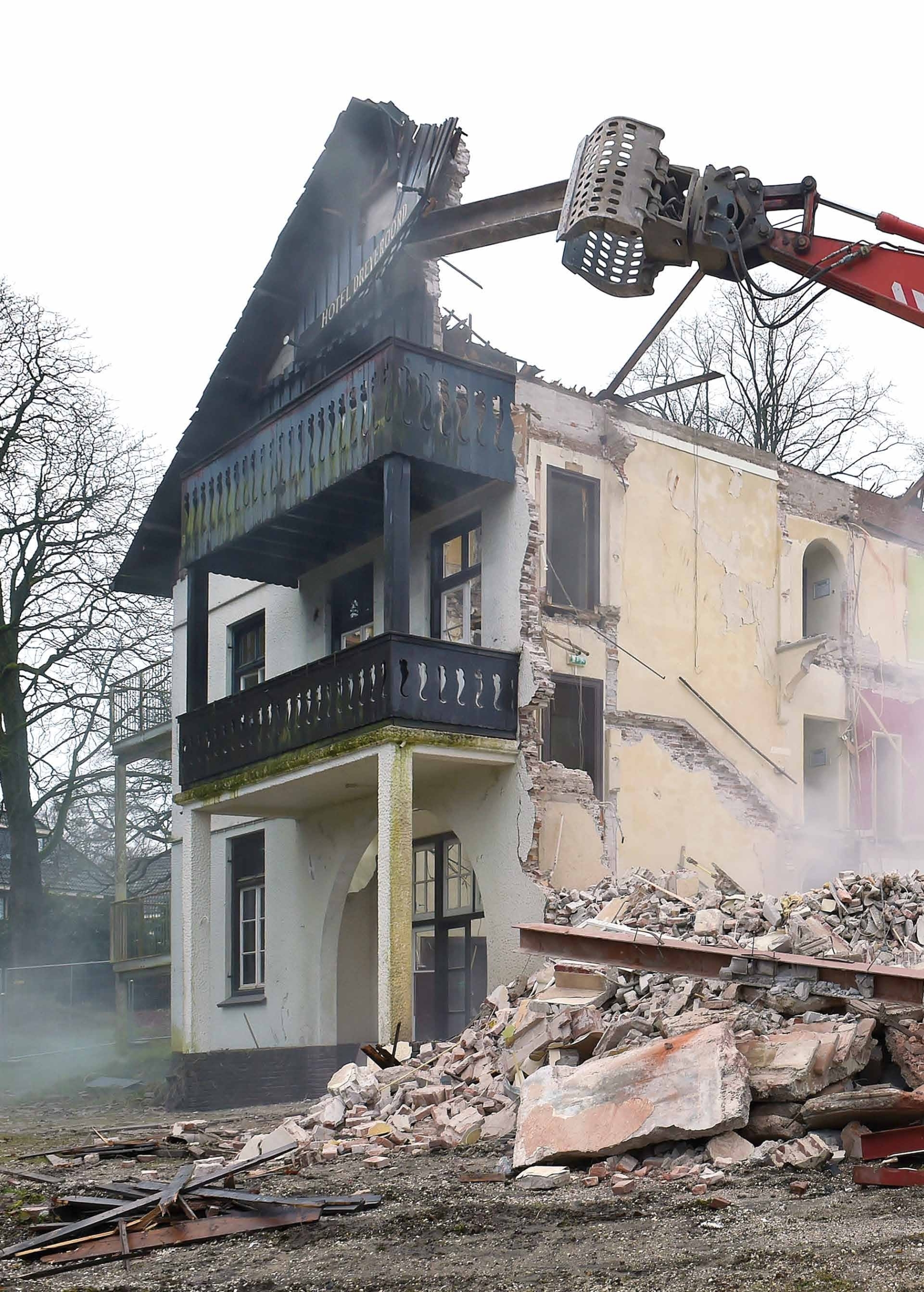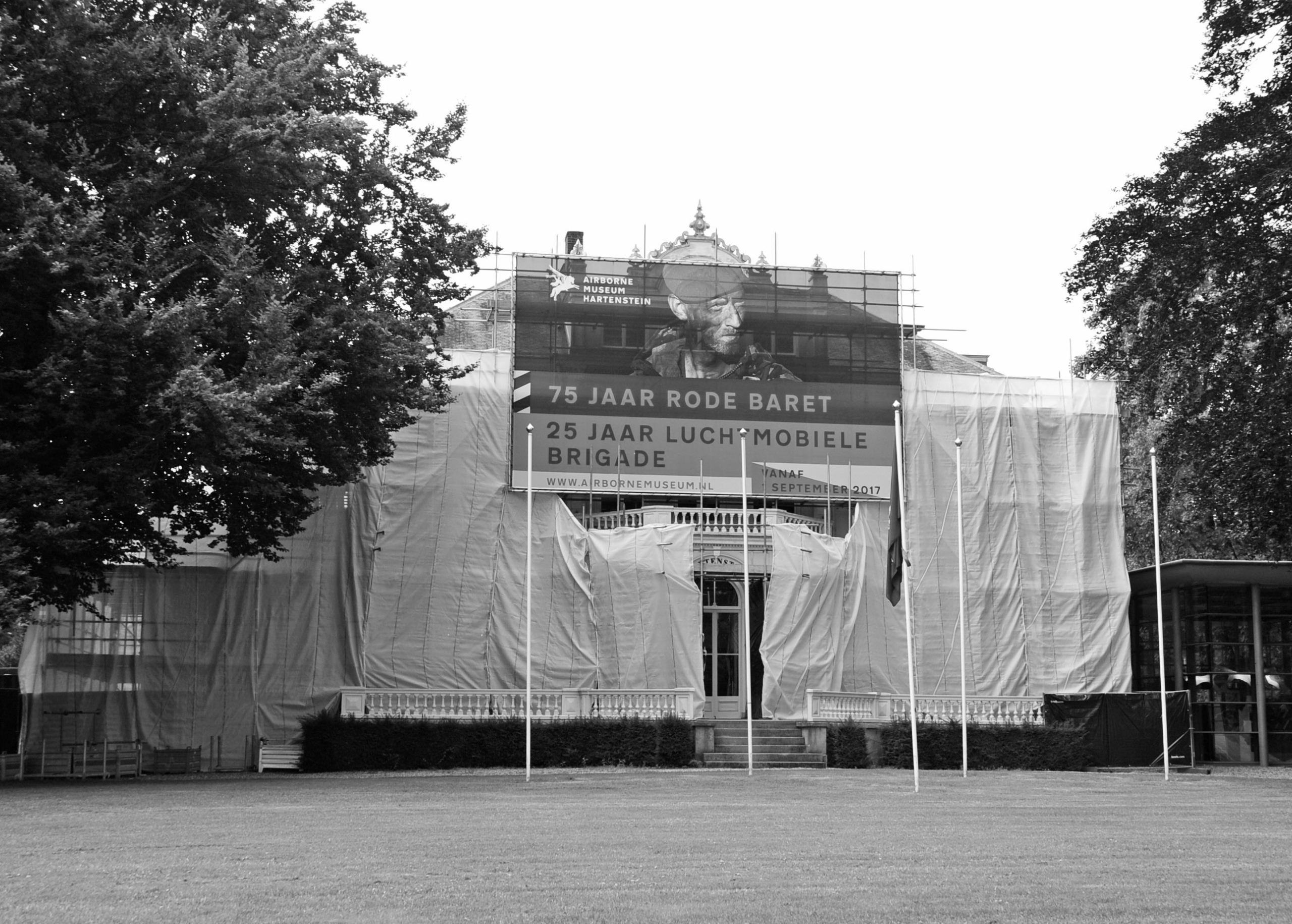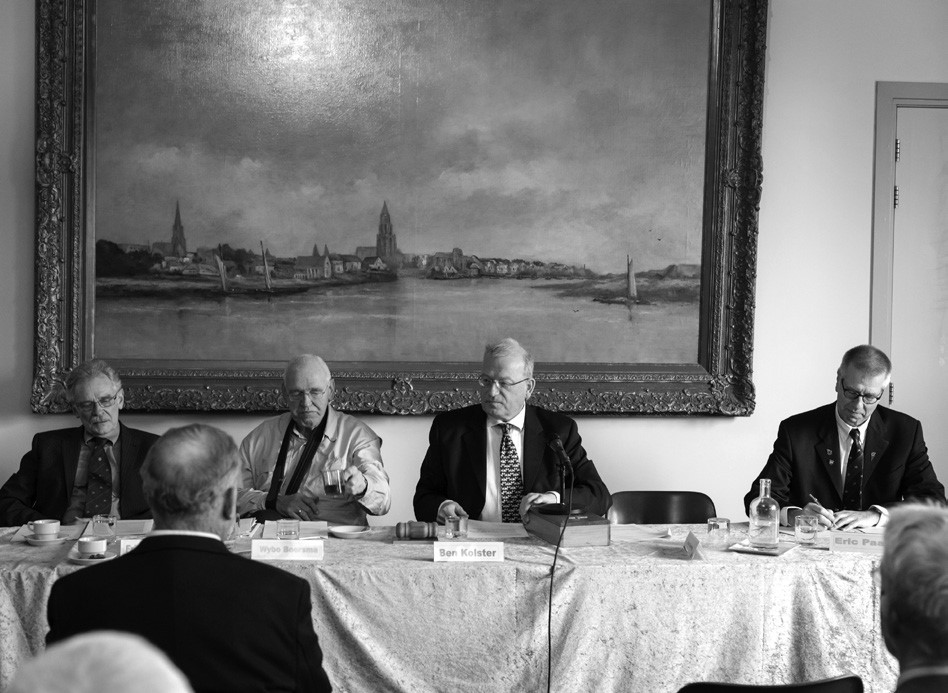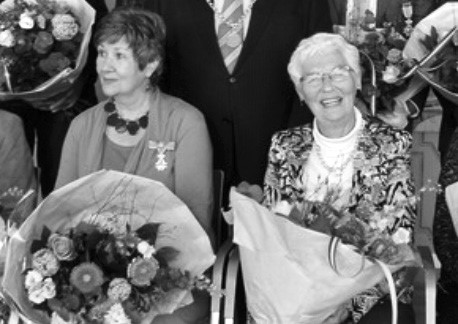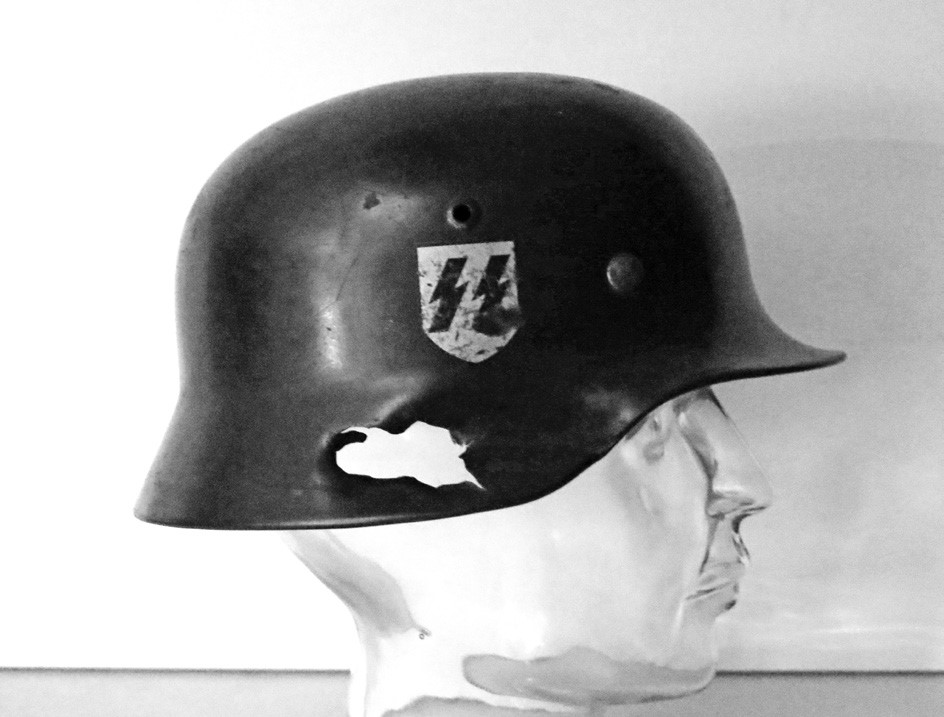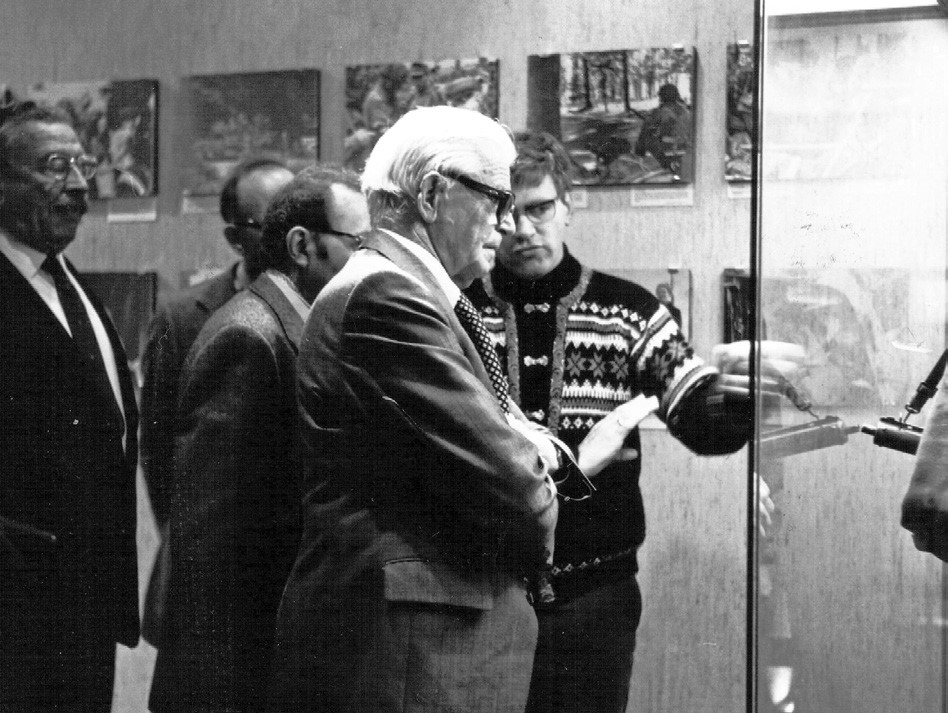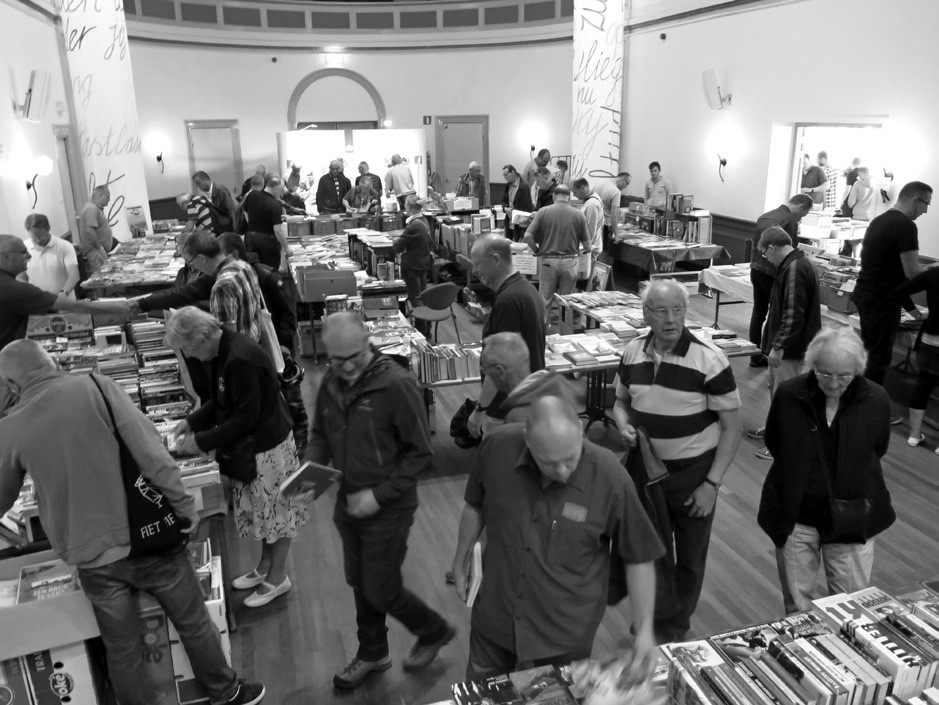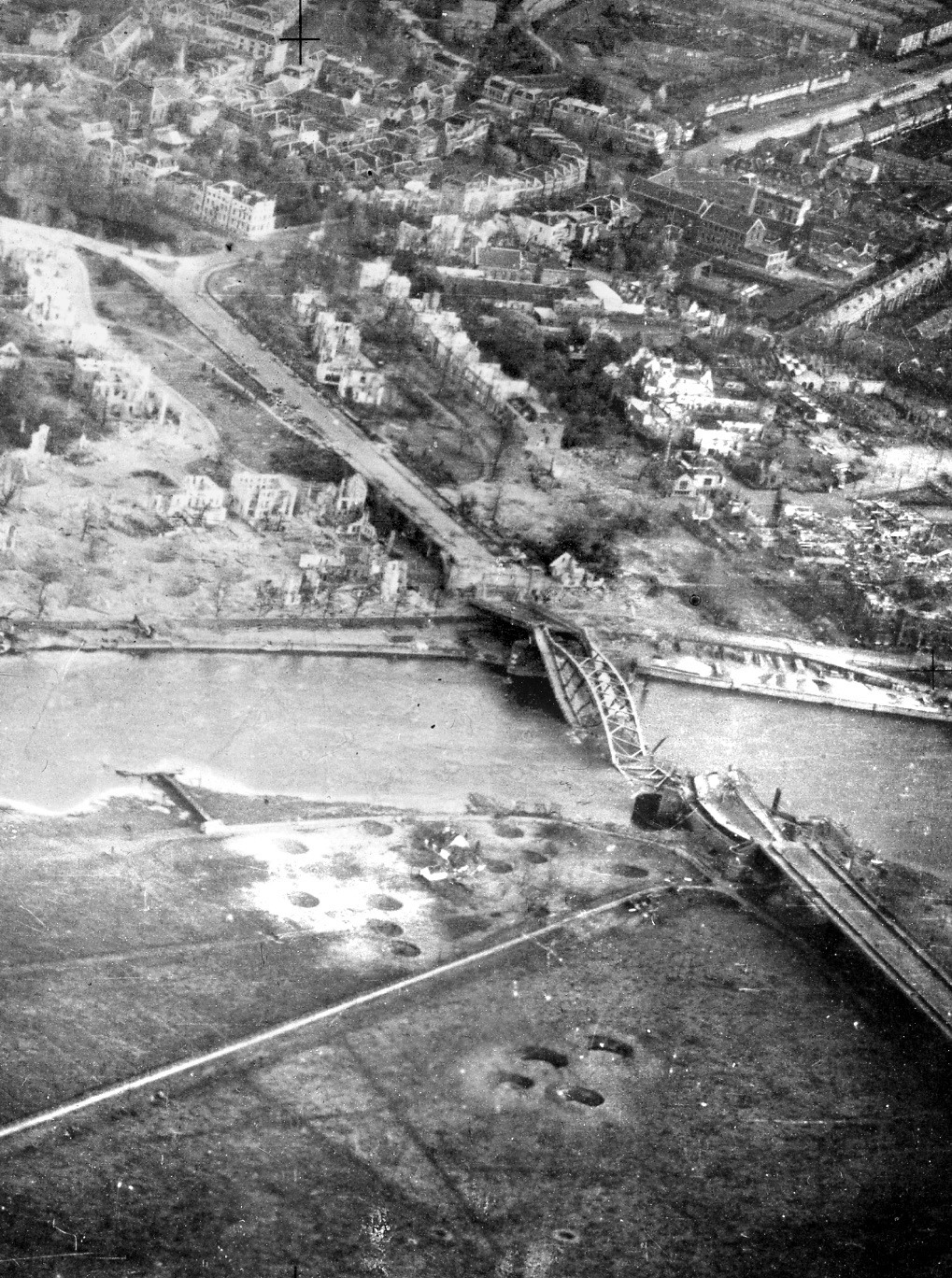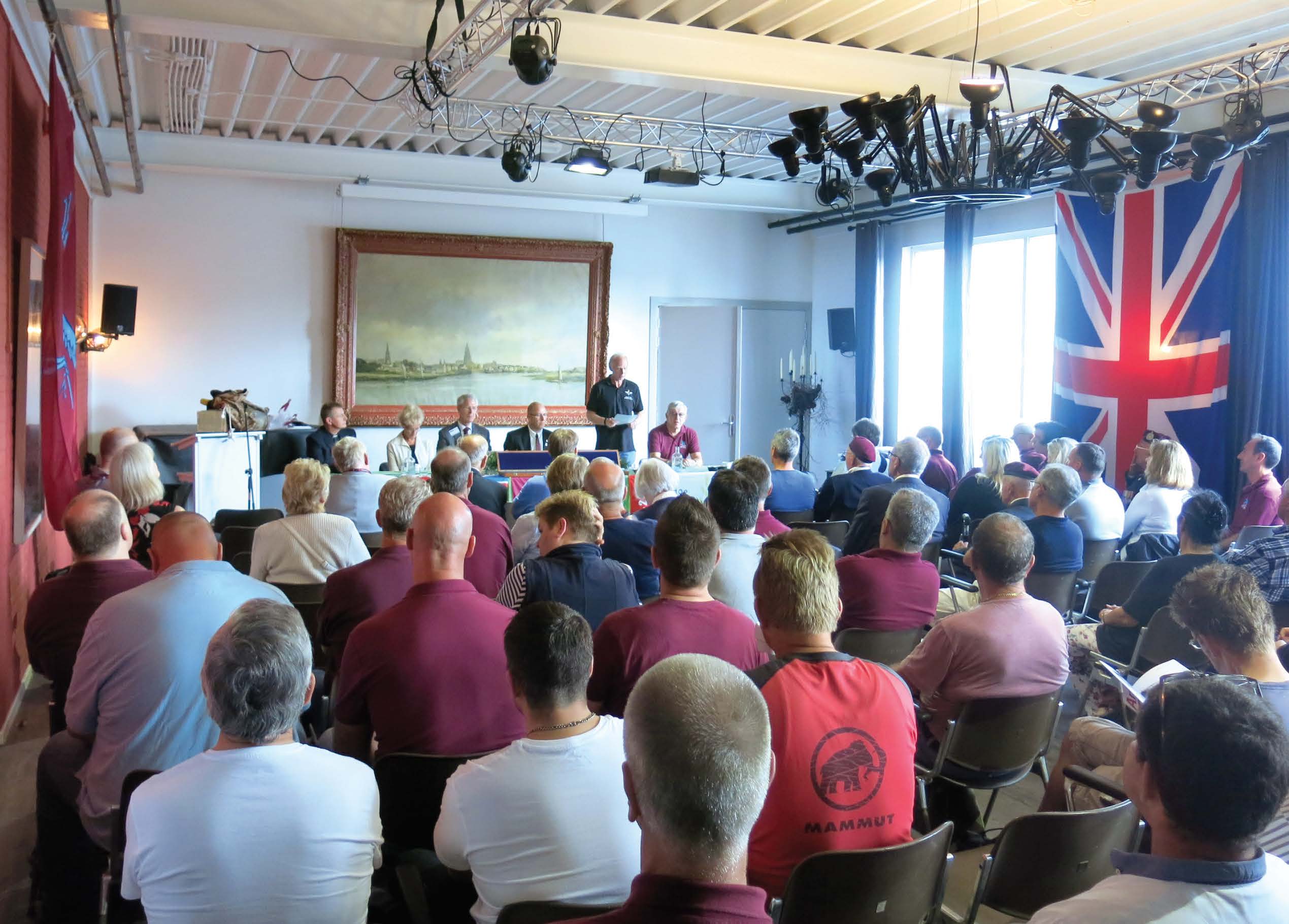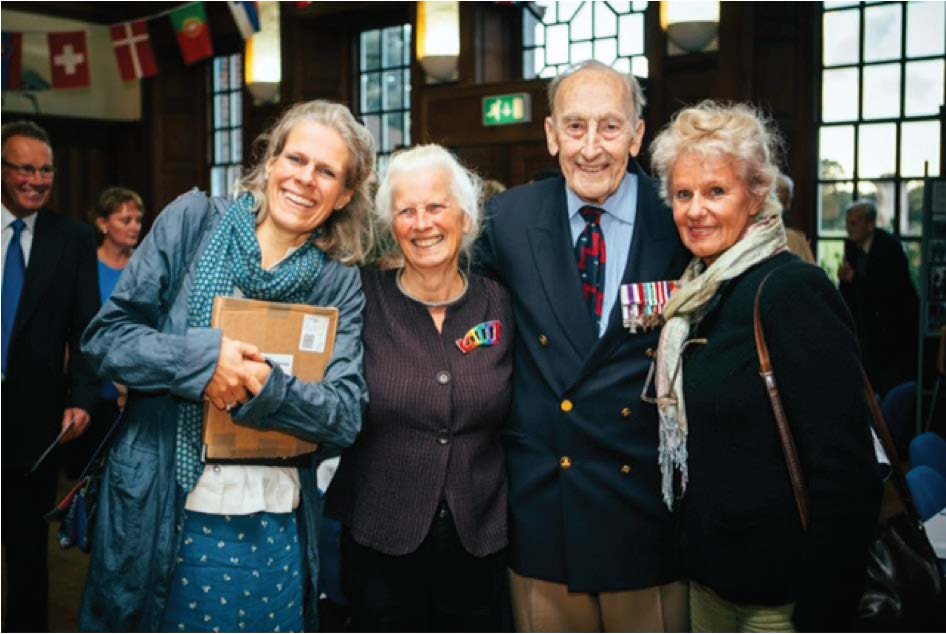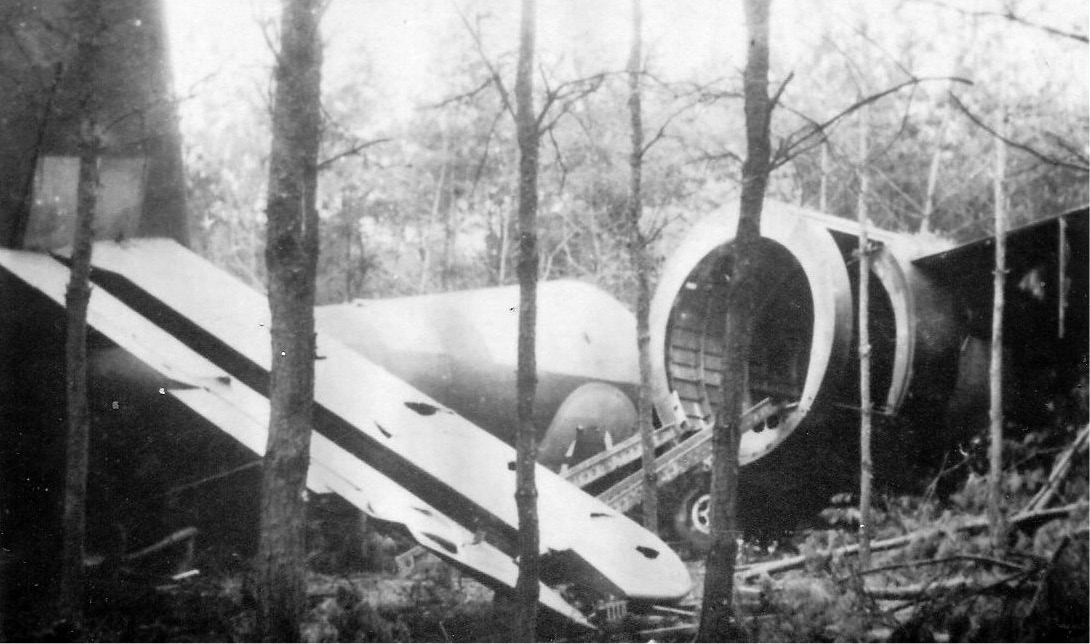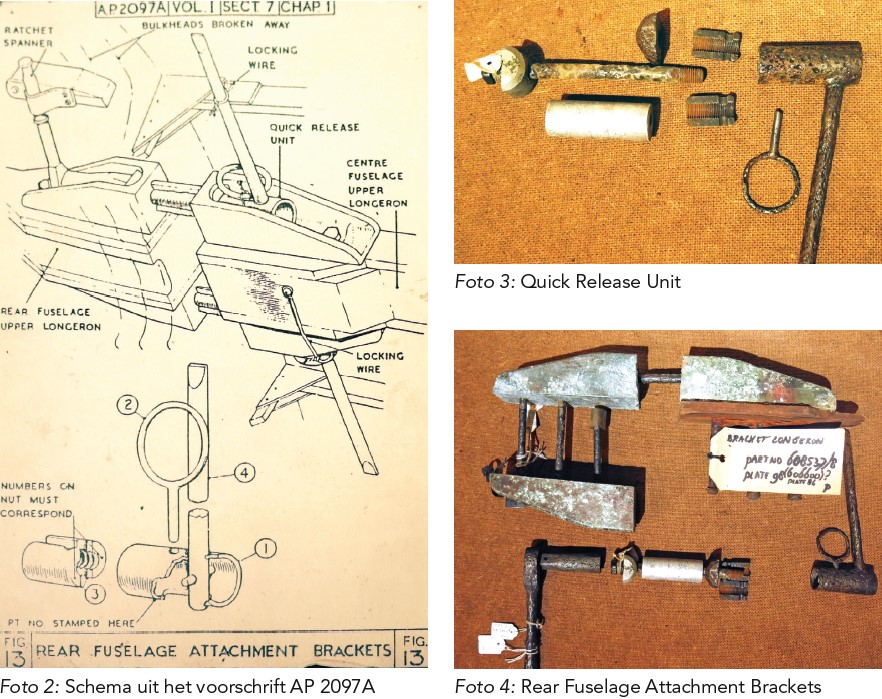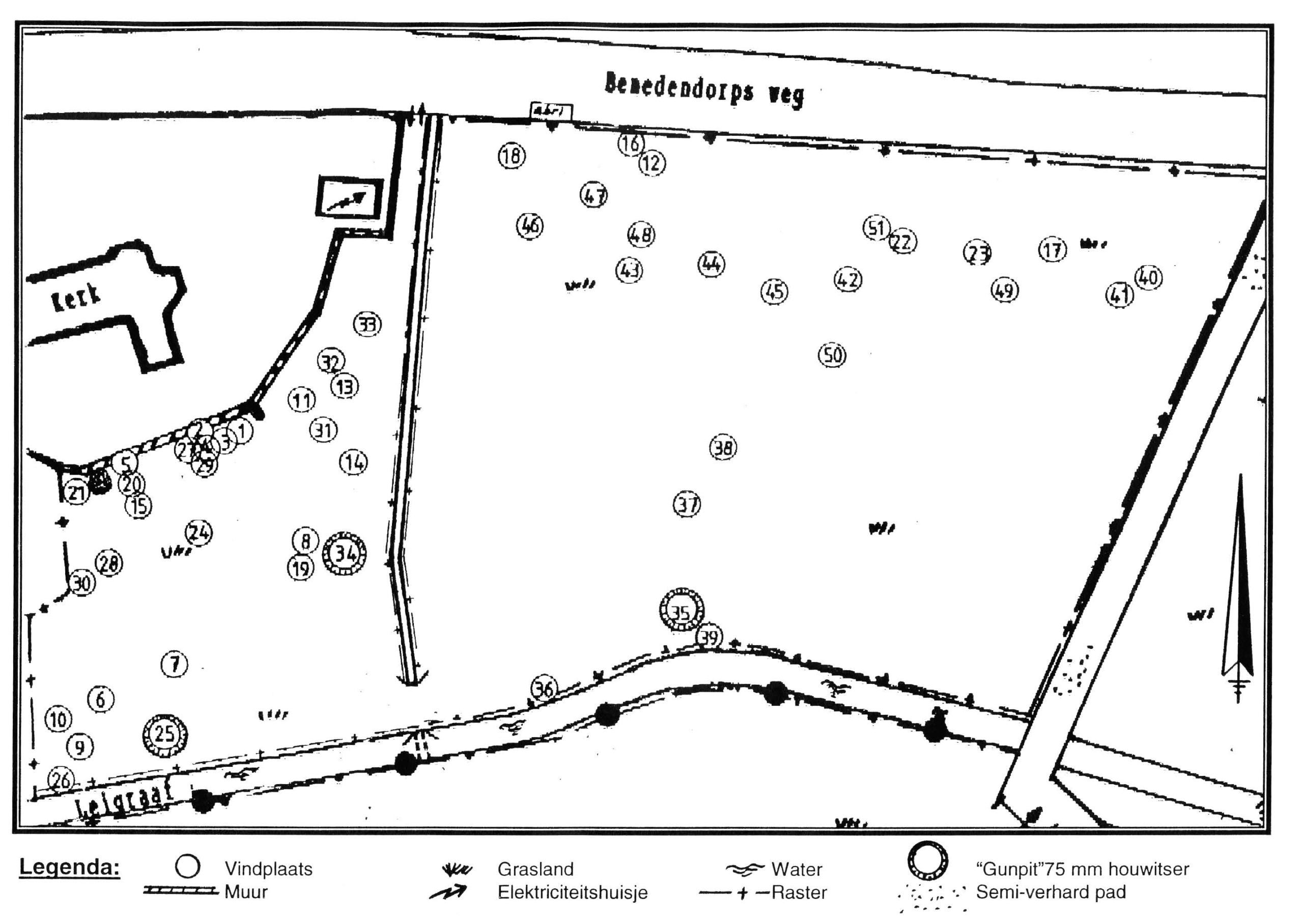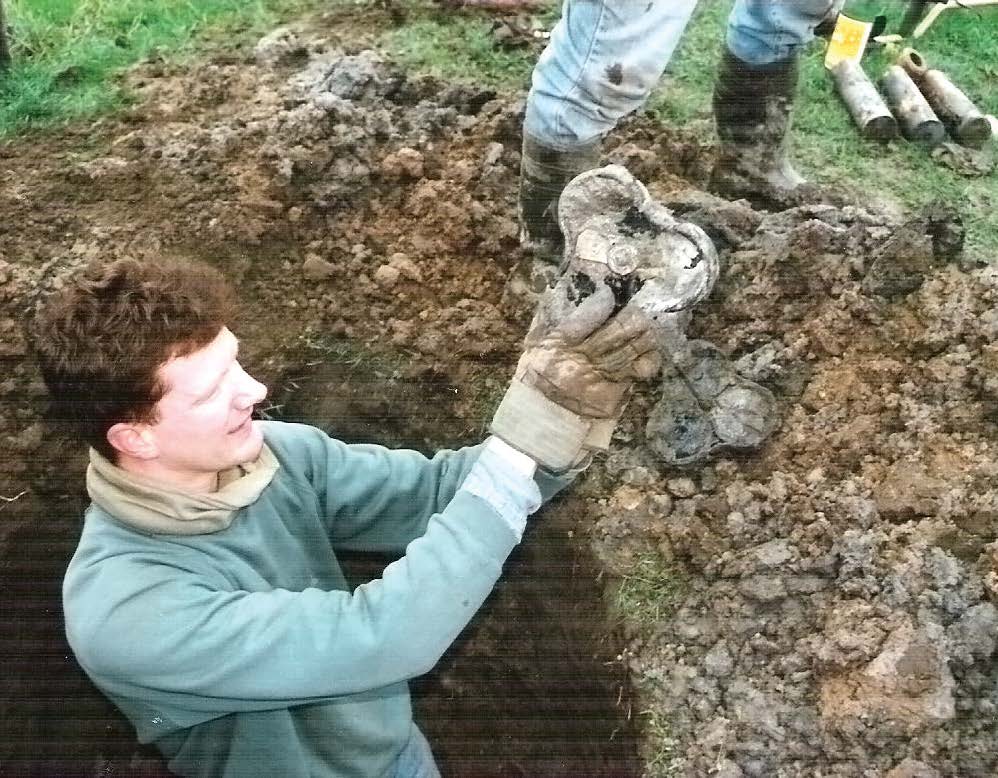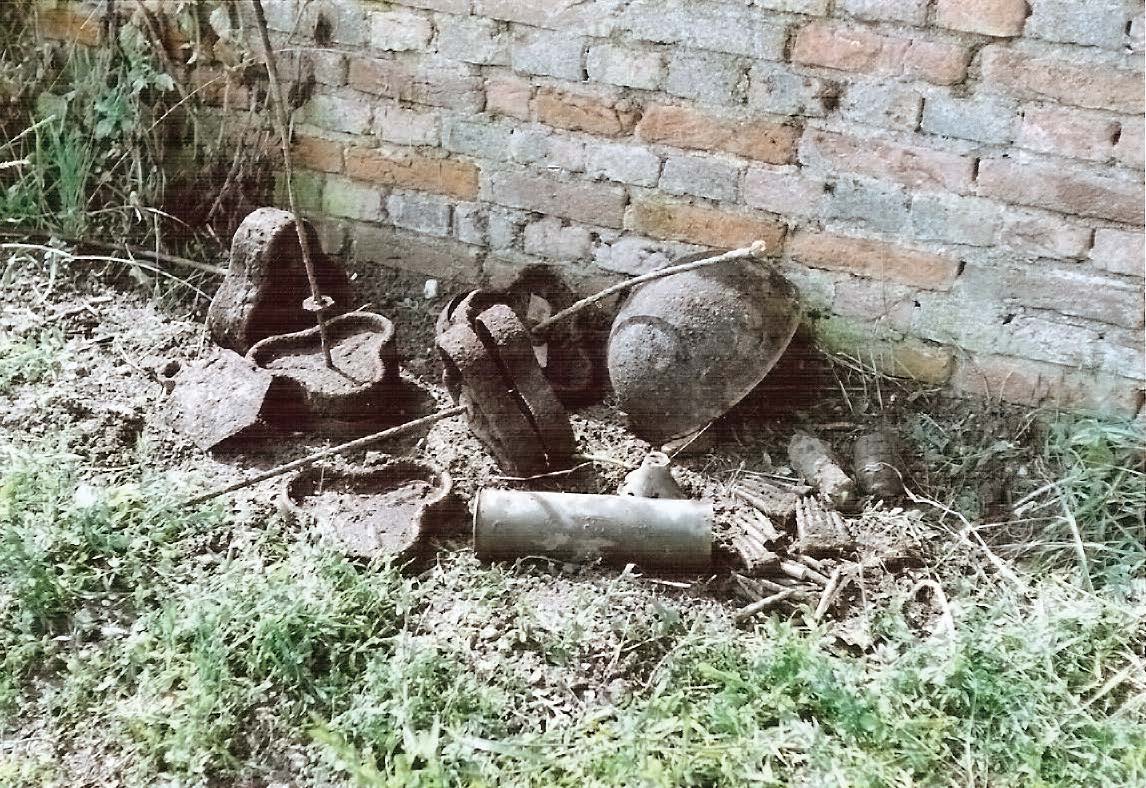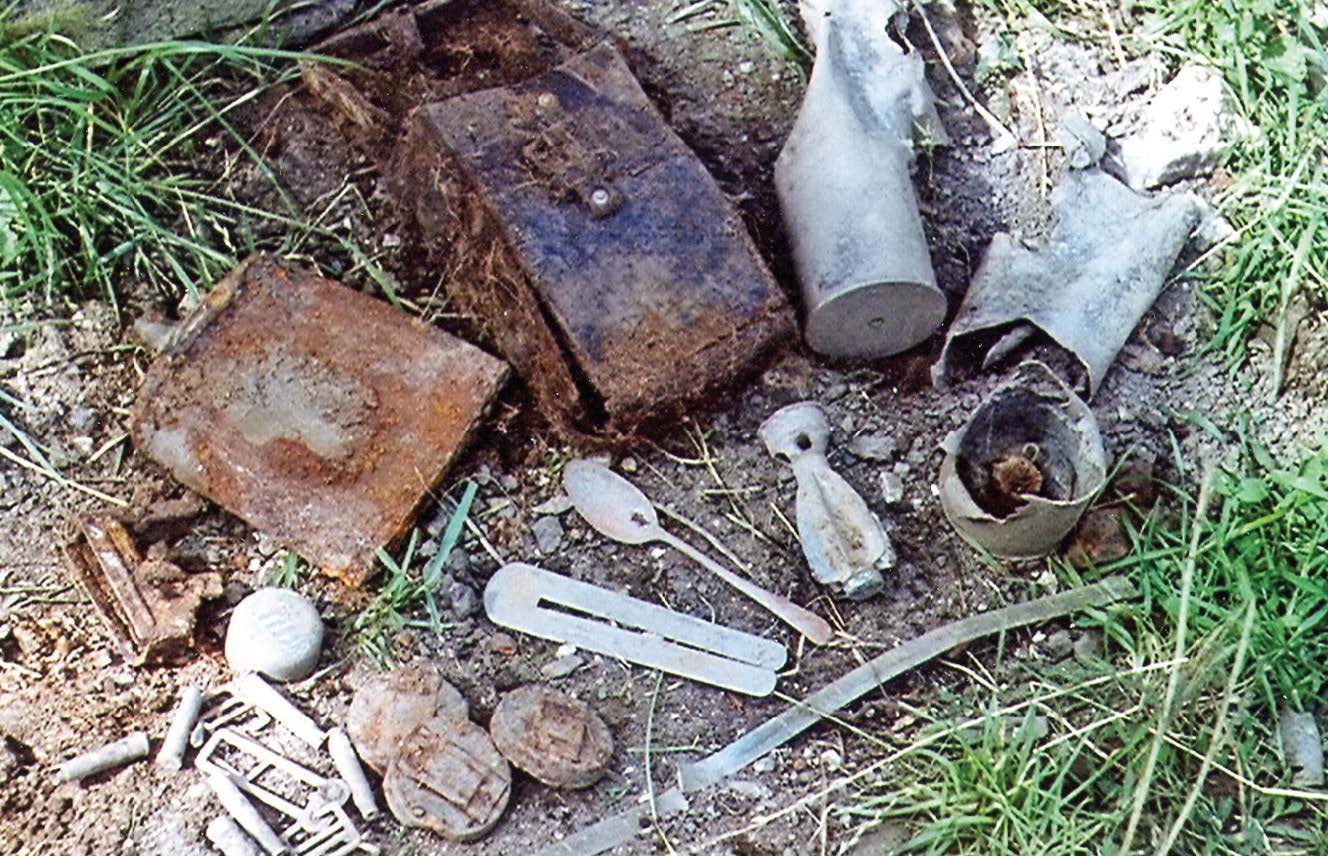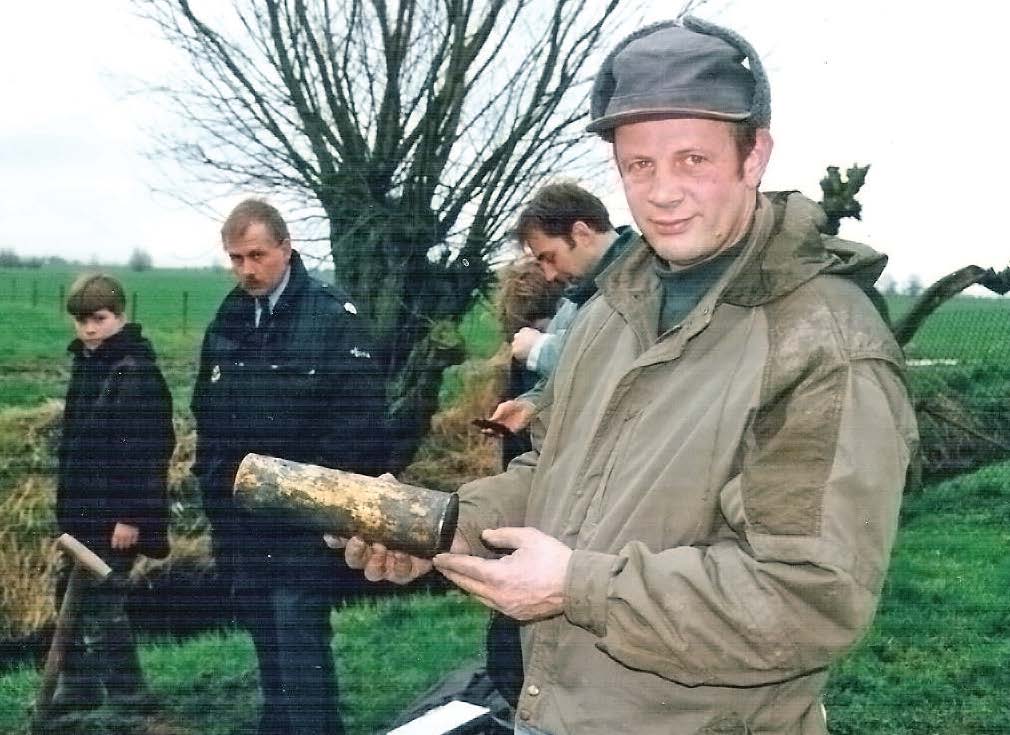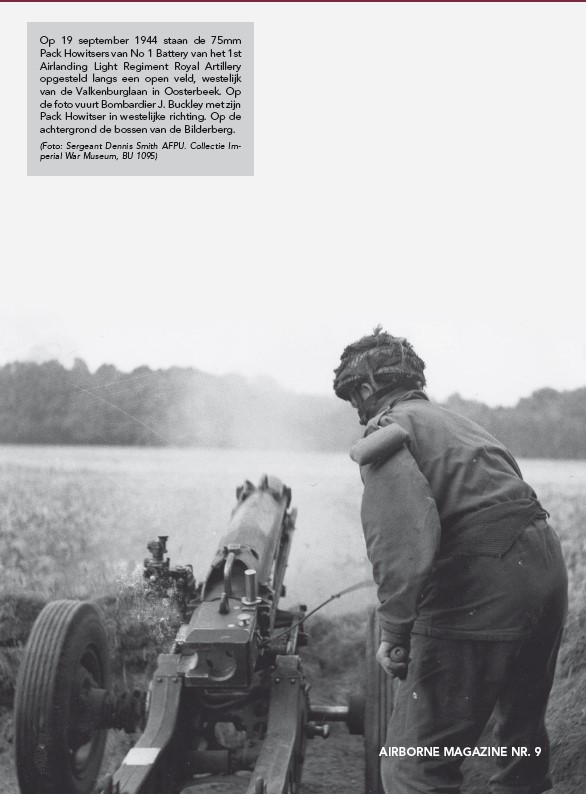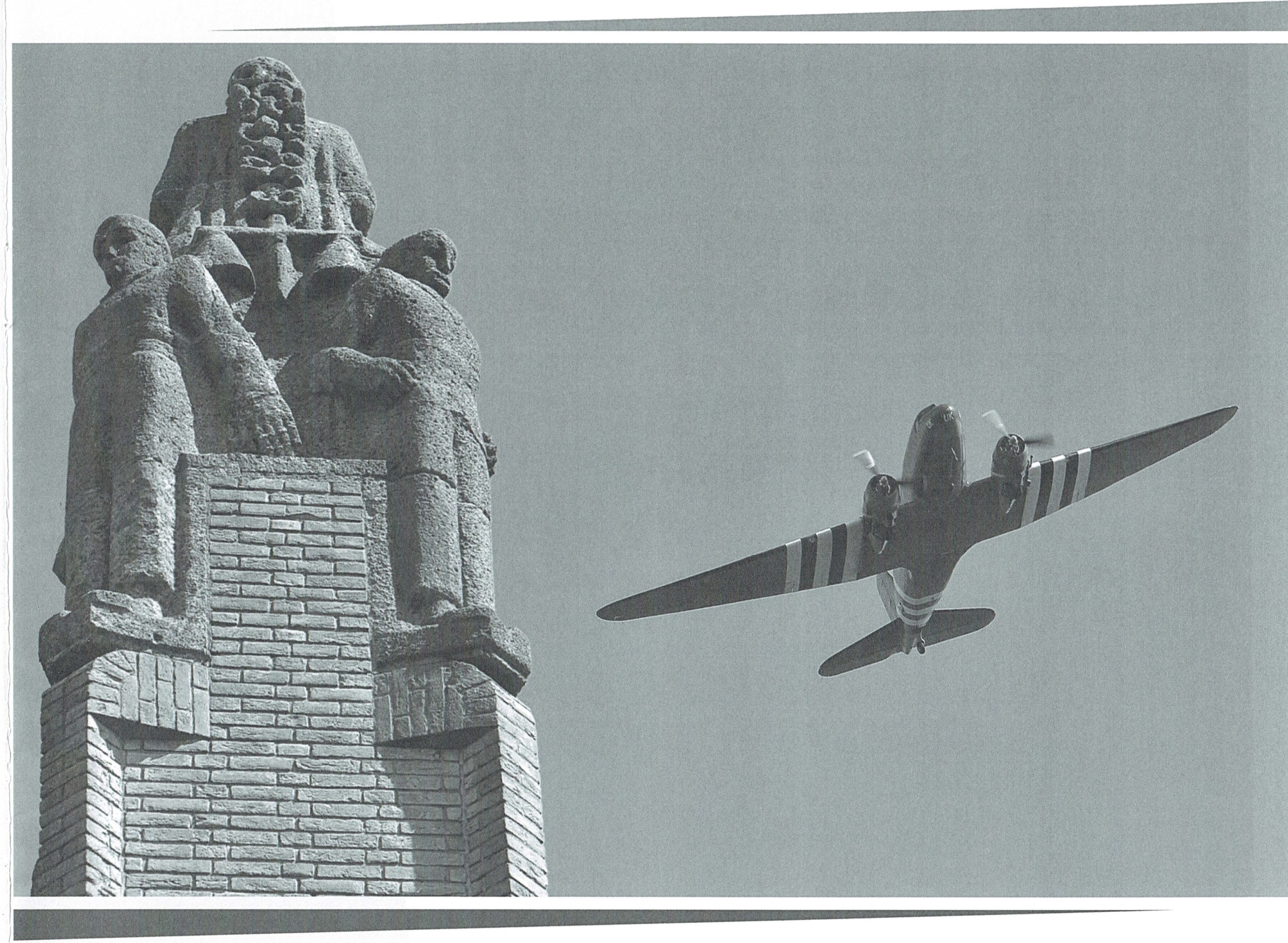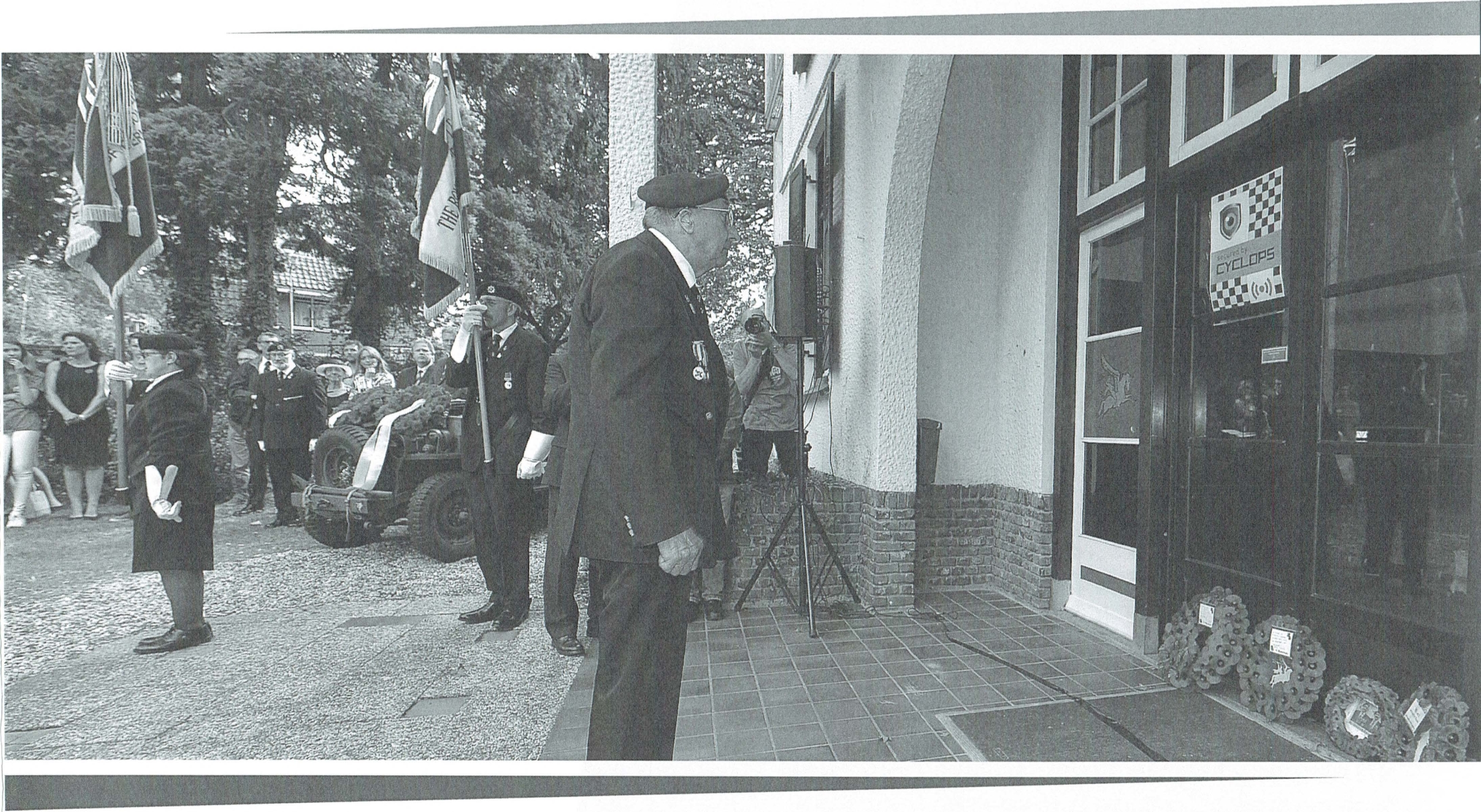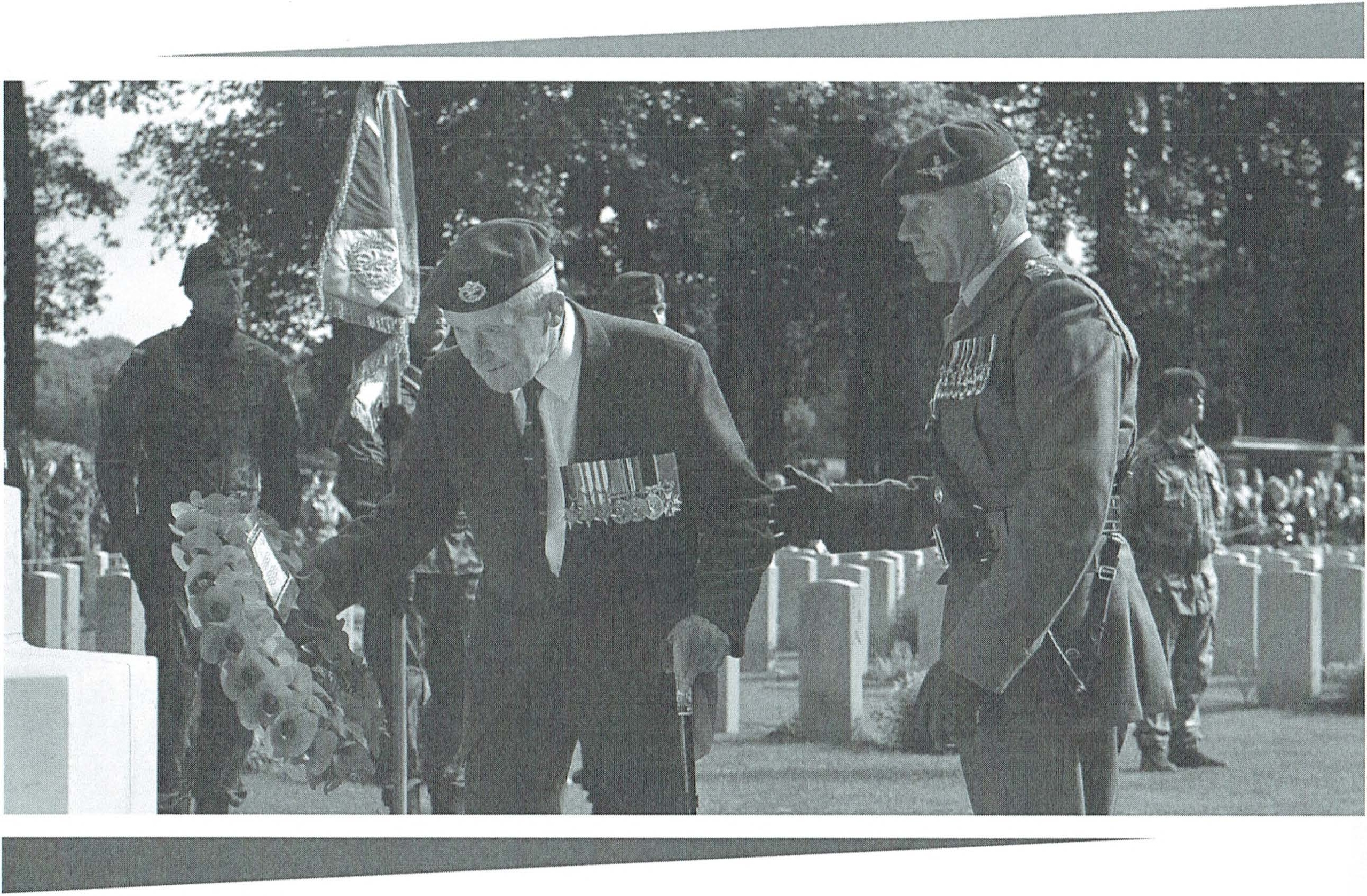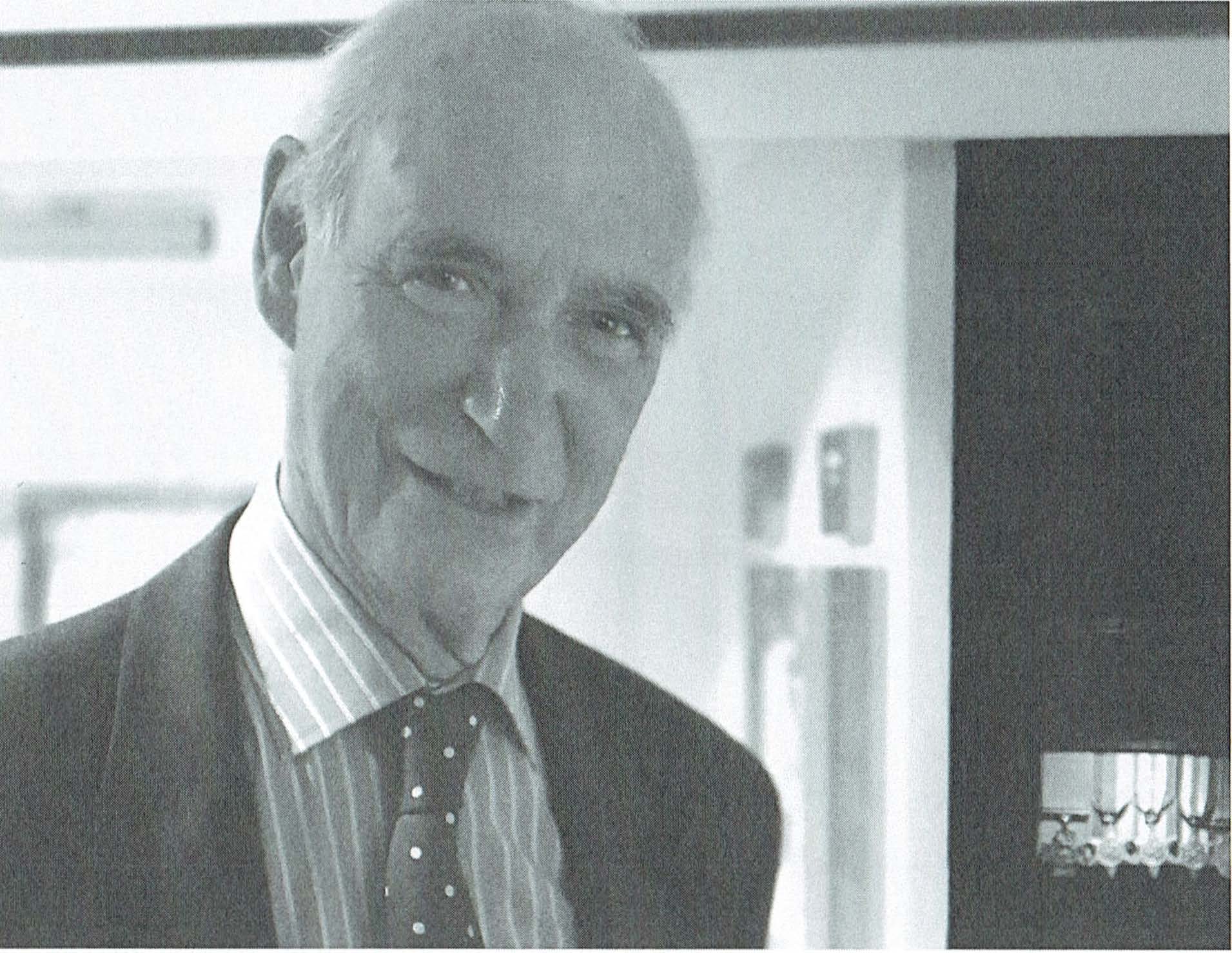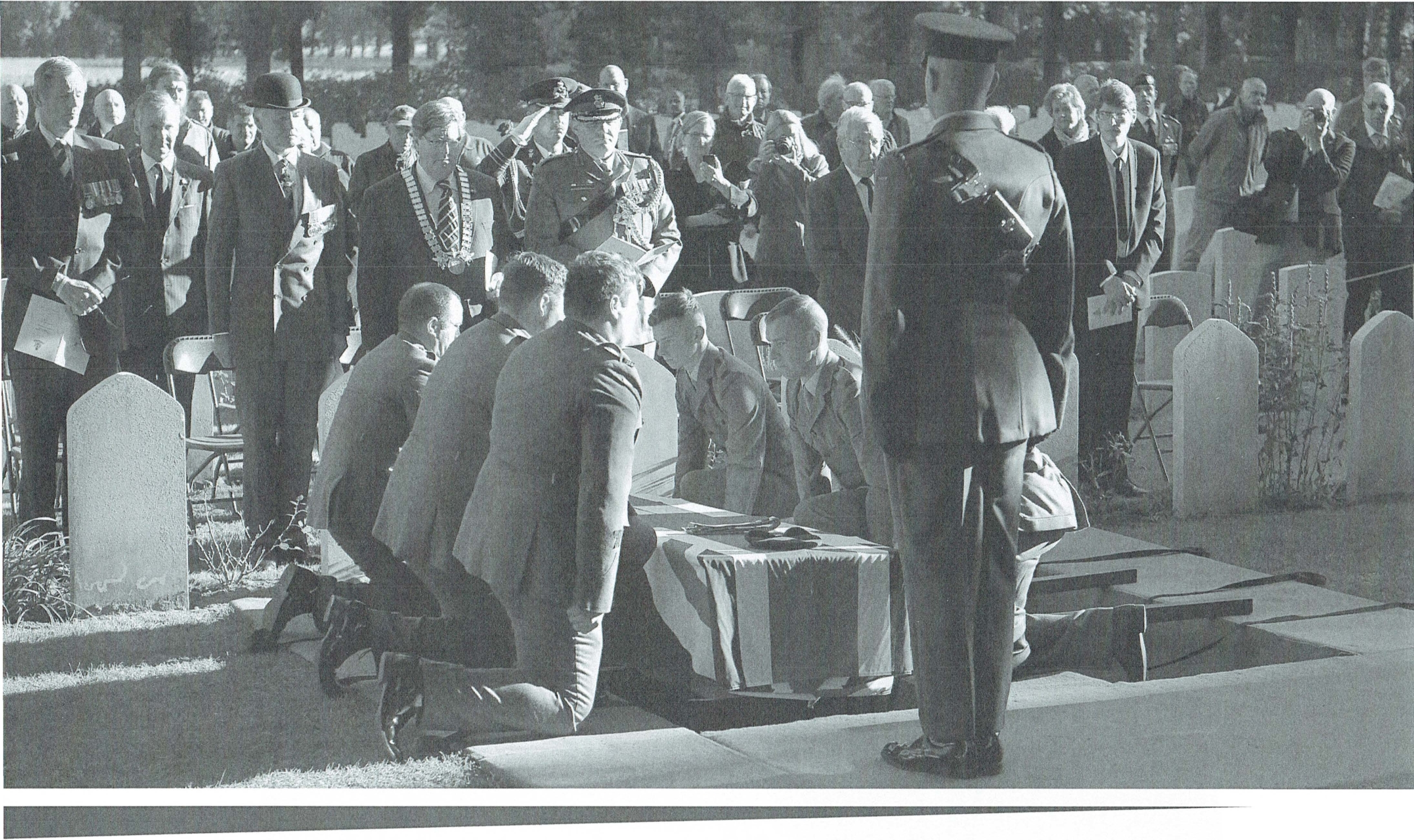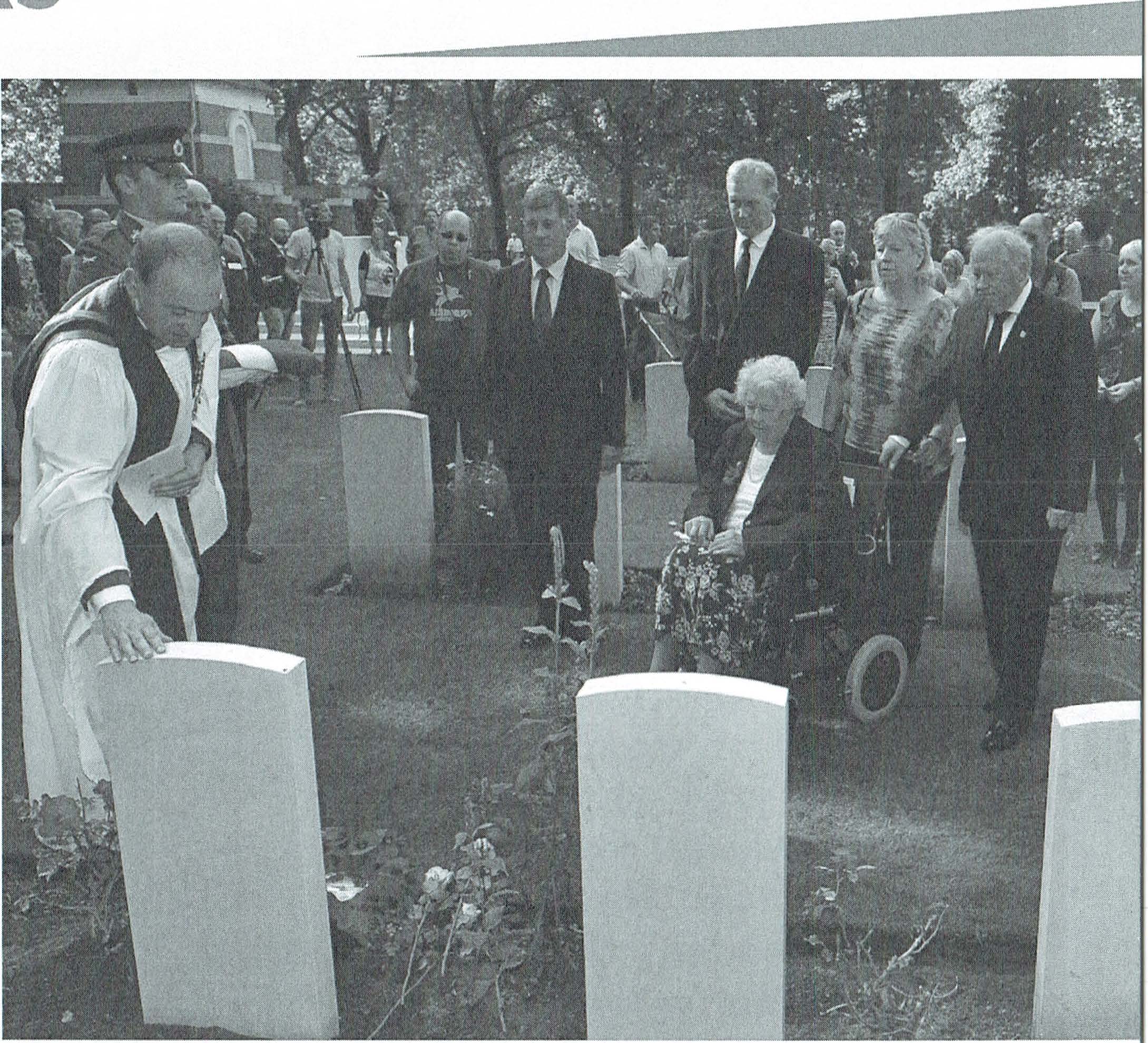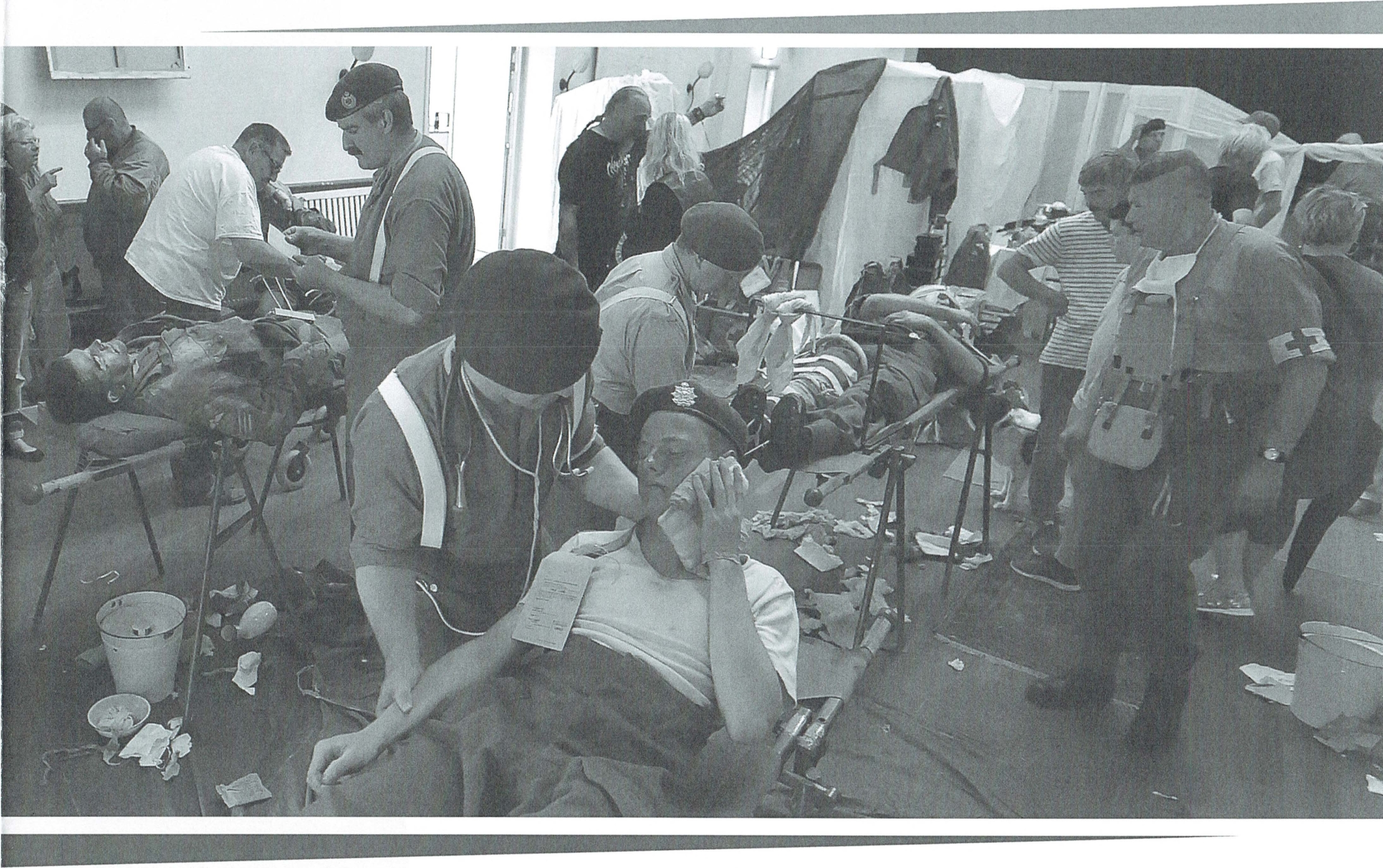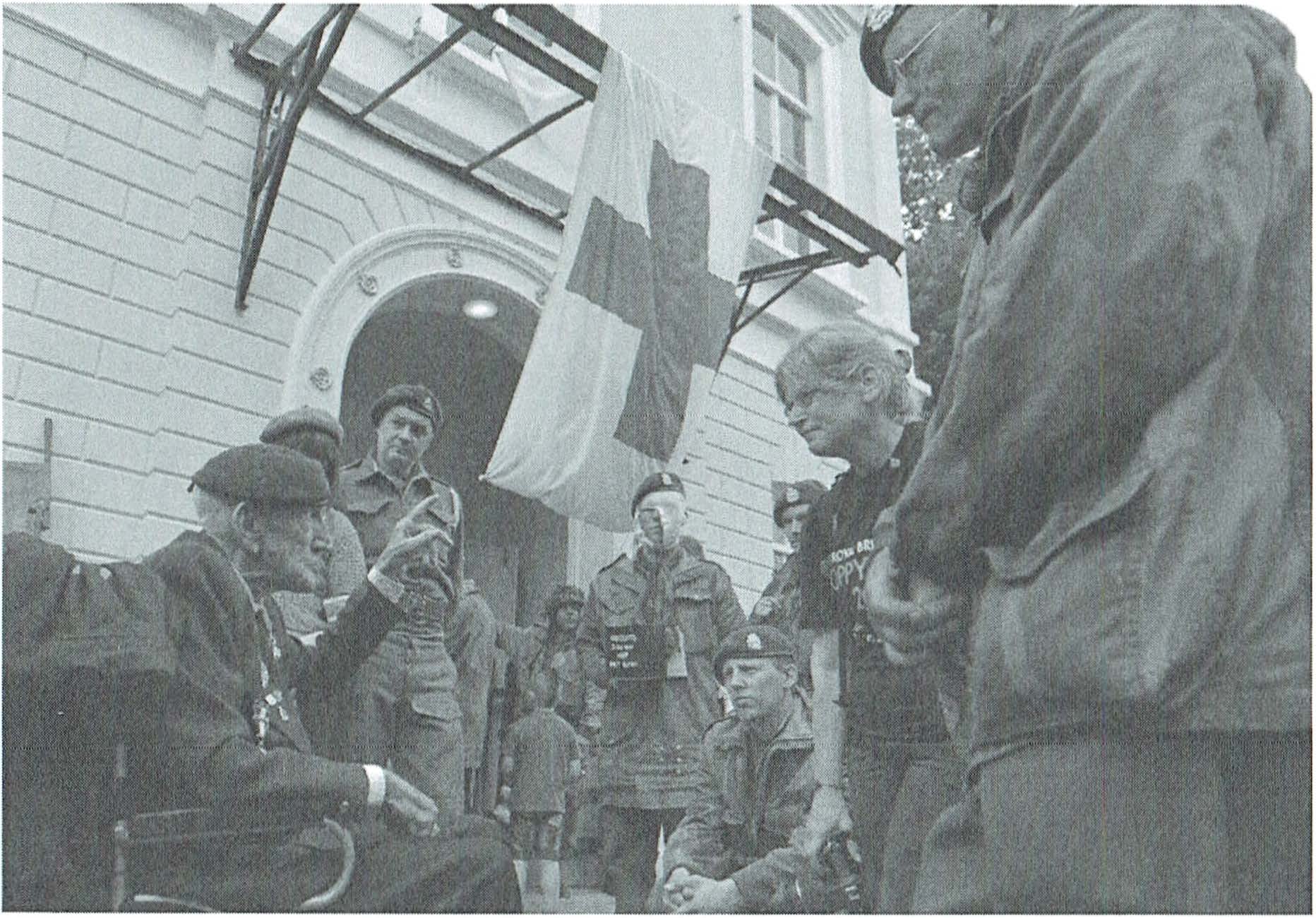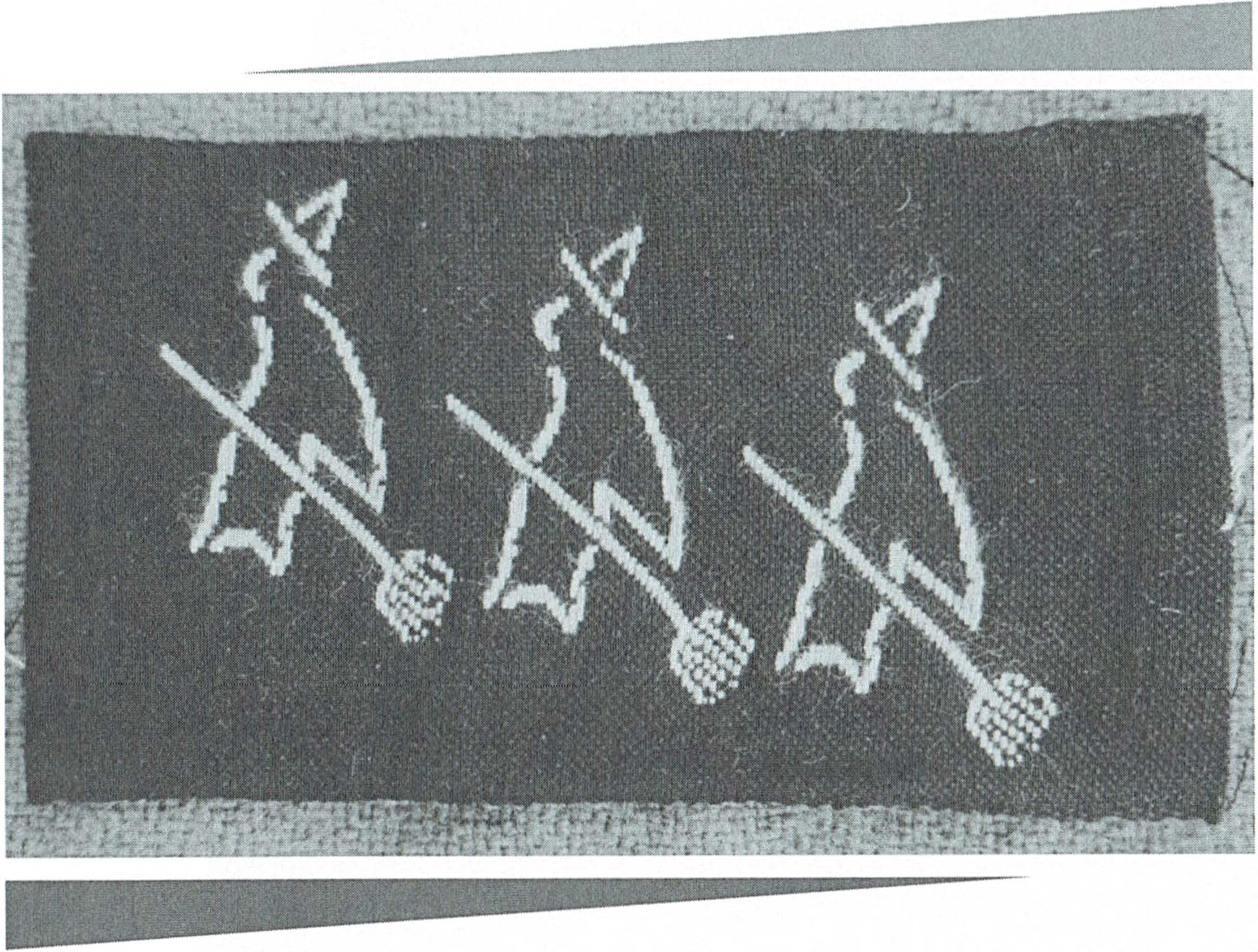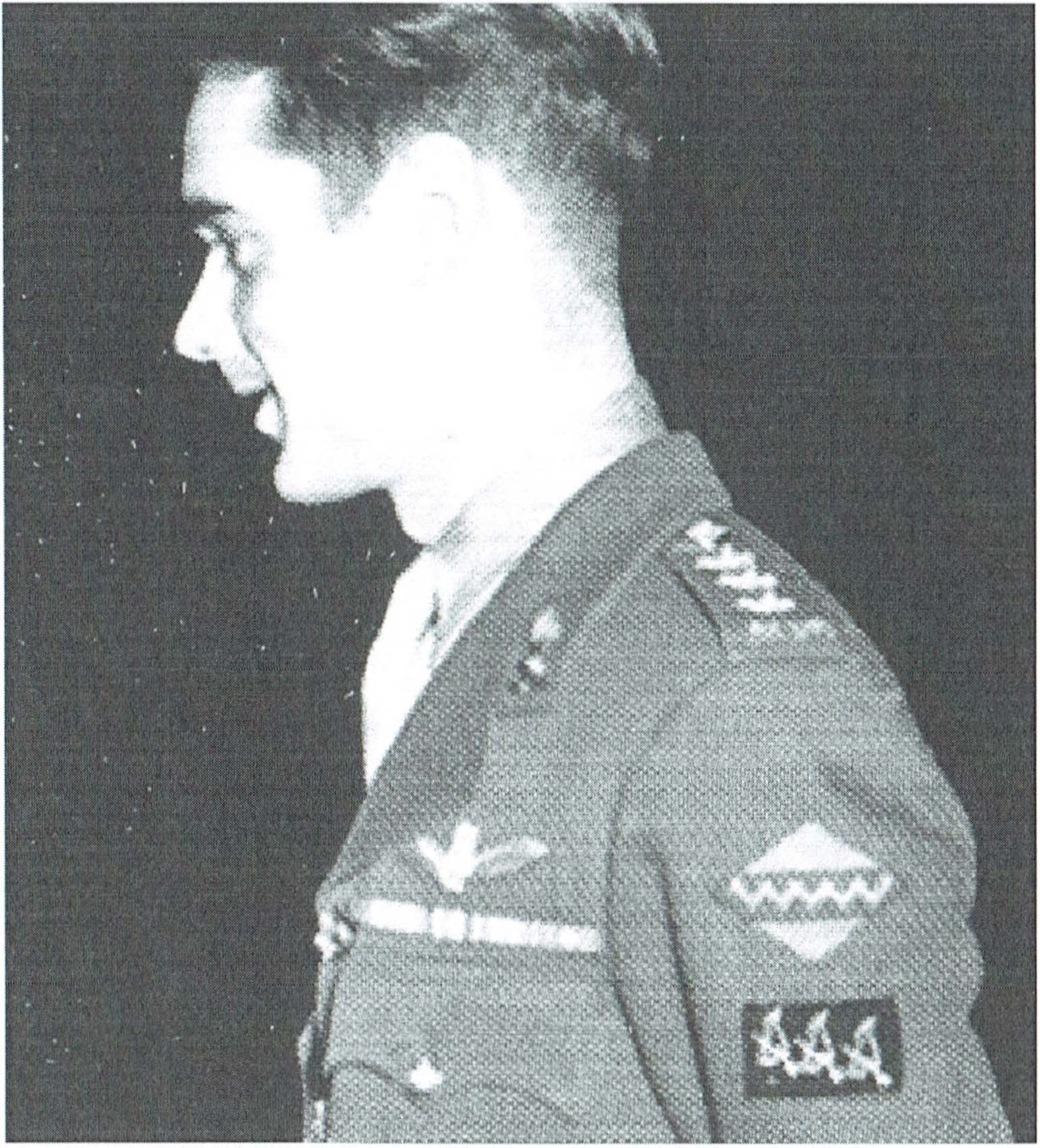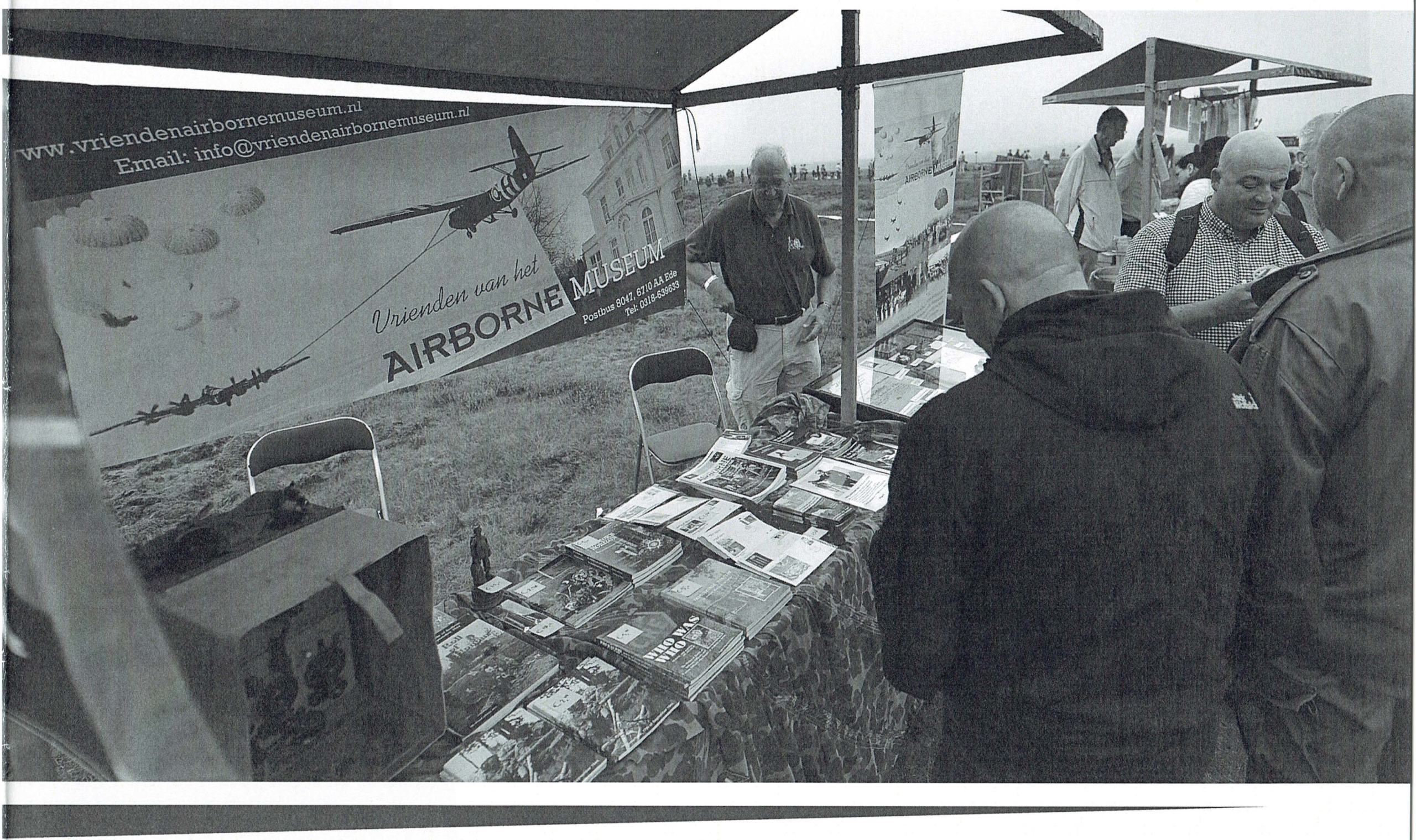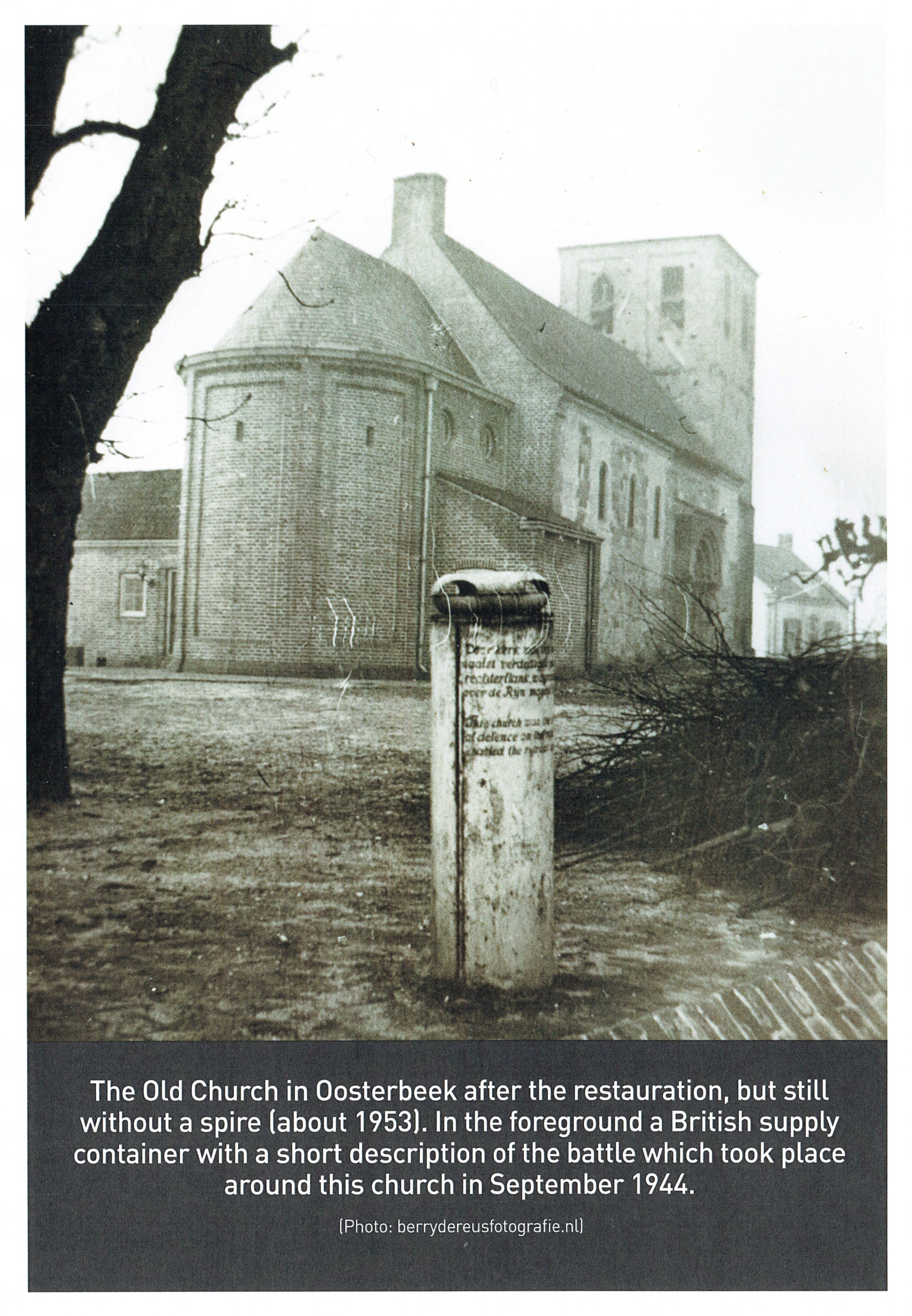NO.13 AIRBORNE MAGAZINE / A publication by the Society Friends of The Airborne Museum 27/11/2018
TABLE OF CONTENTS
3. 2018 in retrospect – The new board’s first year
5. Special find at Arnhem Bridge – II
7. Fighting the British at Arnhem A new book by R.M. Gerritsen
9. “Far more important to me than any top athlete ever”
12. Traces and finds relating to the figh-ting around the Westerbouwing
16. The 1st Independent Parachute Brigade in Operation Market Garden
22. A letter laid aside
24. MINISTORY 129: Location of famous photo discovered (3)
27. Teerosen op de Veluwe – W.H. Tiemens
29. Personal stories at the Oosterbeek Cemetery
32. Albin’s enigma
33. Taxis, T-shirts, and more
34. Reactions – “I probably learned more from the tour than from an entire book”
35. Program
On the cover: Two soldiers from the 1st (Polish) Independent Parachute Brigade practice with radio equipment during training in the United Kingdom. (source: Narodowe Archiwum collection Cyfrowe, Polen)
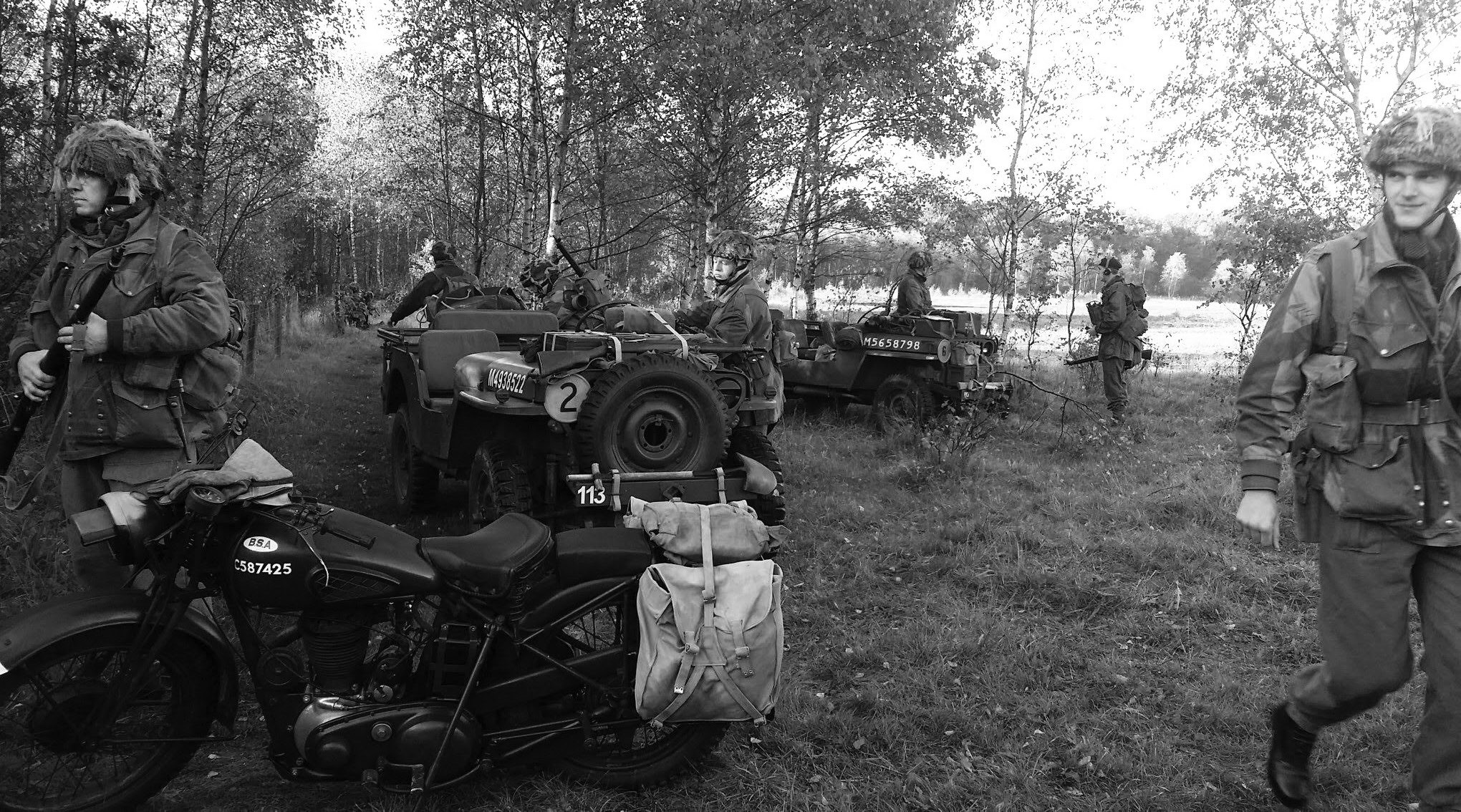
Reenactors during the Border Regiment battlefield tour on October 6th.
2018 IN RETROSPECT – THE NEW BOARD’S FIRST YEAR
It’s common among organisations and companies to look back and evaluate the performance at the end of the year. Partly to focus on celebrating Christmas and New Year’s Eve and partly to make the balance between the set of planned targets and the results. For us as the newly appointed Board even more important since it was our first year that we were in charge.
Let me start with one of the most urgent matters: the relationship between the Society and the Museum. As mentioned in Airborne Magazine 12 we promised to report back on the meeting which was scheduled between the Foundation of the Museum and a representation of the SFAM Board. This meeting took place on the 13th of September. Contact between Museum and SFAM remained limited to a formal correspondence by letter for more than two years. This meeting was the first conversation with sufficient room to explain each other’s point of view. It turned out to be a convenient meeting.
SFAM representatives and Museum agreed that we will respect each other’s different ambitions and chosen directions. The Society’s first mission remains the deepening and sharing of knowledge and understanding of the Battle of Arnhem. If required and requested the Society will assist and support the Museum. To add deed to the word the Society transferred an amount of € 2000 to the Museum, some days after this meeting, to help them to facilitate the construction of a silent room in the Museum. This gesture was appreciated and resulted indirectly in the restart of a structural contact between representatives of Museum and Society.
The second topic the board is concerned about is the issue of the English membership. As mentioned in Airborne Magazine 12 the number of English members has decreased substantially since the beginning of this year. We assume that this is the result of a lack of communication due to the inward focus of the SFAM and the long delay between the publication of the English version of the Airborne Magazine. In the hope of regaining some goodwill it was decided to carry all English members over to 2018 for free. Together with the promise to publish three editions of the Magazine in English, this measure was communicated with an accompanying letter, signed by me personally. Although we have realised three editions this year we must conclude that the desired effect didn’t occur. At this time just 29 English members remain. Apart from honorary and life members, who pay no dues, only six English paying members remain. The production, translation and distribution of the English version of the Airborne Magazine costs the Society between €2000 and 3000 per year. The board feels the effort and costs are disproportional and will present a solution at the General Members Meeting in March of 2019.
Besides these challenges, some positive developments should be mentioned as well. We expected a decrease in our membership as a consequence of the chilled relationship with the Museum. This has not come to pass. Over the course of last year a net 28 members joined the Society. Additionally we searched our membership file to rule out a significant number of nonpaying members. With some justified pride we can now report that the Society has 636 paying members. Financially the Society is healthy.
With regard to our ambition and primary mission the announced intensification of our Battlefield Tours and the qualitative investment of the Airborne Magazine has been widely appreciated. The Battlefield Tours attract many participants. As a result, the Society has money to spare for new initiatives.
Separate to the planned Battlefield Tours, we have responded proactively to adhoc requests to organise tours for specific audiences. We accommodated a large group of UK military personnel, participating in the Nijmegen 4Days Marches, and guided them along the Arnhem battlefields. An activity which was followed by a group of German officers and NCOs originating from the German Rapid Reaction Division. Finally, the Airborne Themeevenings turned out to be successful and demonstrated an increasing amount of visitors. Reason why we decided to proceed with these events for next year.
In 2019 we now have planned four.
Since we now have stabilised relations with the Museum, and hope to solve the issue of the UK members, we are in a position to focus our energy towards 2019. An important and remarkable year because it marks ’75 Years Battle of Arnhem’ which will bring a widely carried increase in activities. A perfect opportunity to demonstrate our relevance as a knowledgebased Society. With regard to the 2019 activities I’m proud to announce that our Board will be augmented by a professional Public Relations official. We hope to report more on how we plan to contribute to ’75 Years Battle of Arnhem’ in Airborne Magazine 14.
This finally brings me to wish you and all of your loved ones a Merry Christmas and a Happy New Year.
– Otto van Wiggen
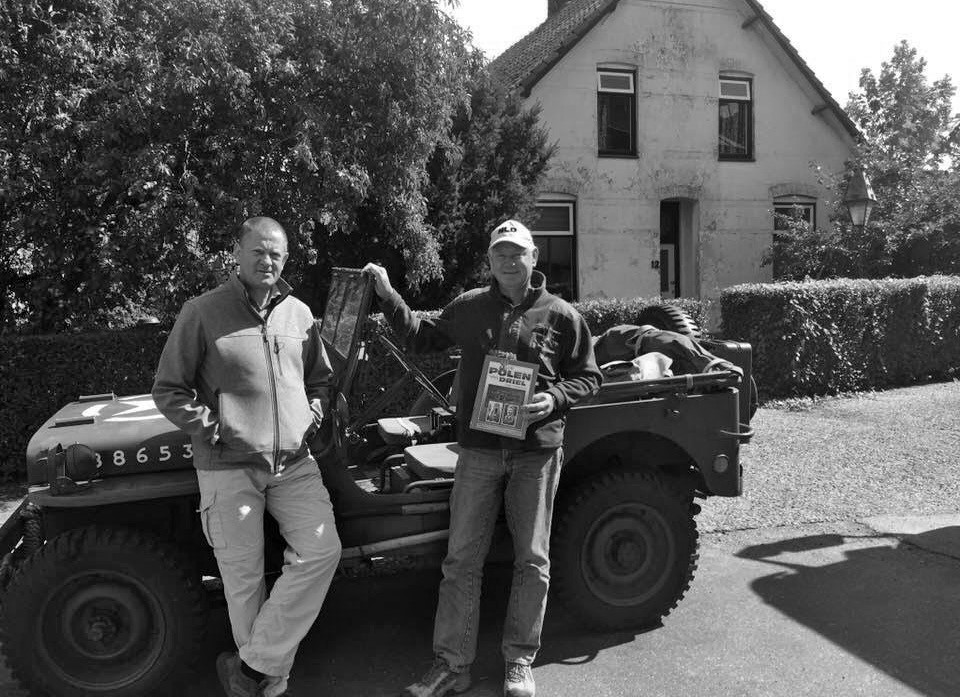
SFAM board members Otto van Wiggen and Erik Jellema in front of Sosabowksi’s headquarters on Molenstraat in Driel.
SPECIAL FIND AT ARNHEM BRIDGE – II
In Airborne Magazine nr.12 we reported a special find next to the Arnhem Rhine bridge. The editors received a number of responses upon publication that shed more light on the role of the British antitank guns when the Panzer IV was knocked out.
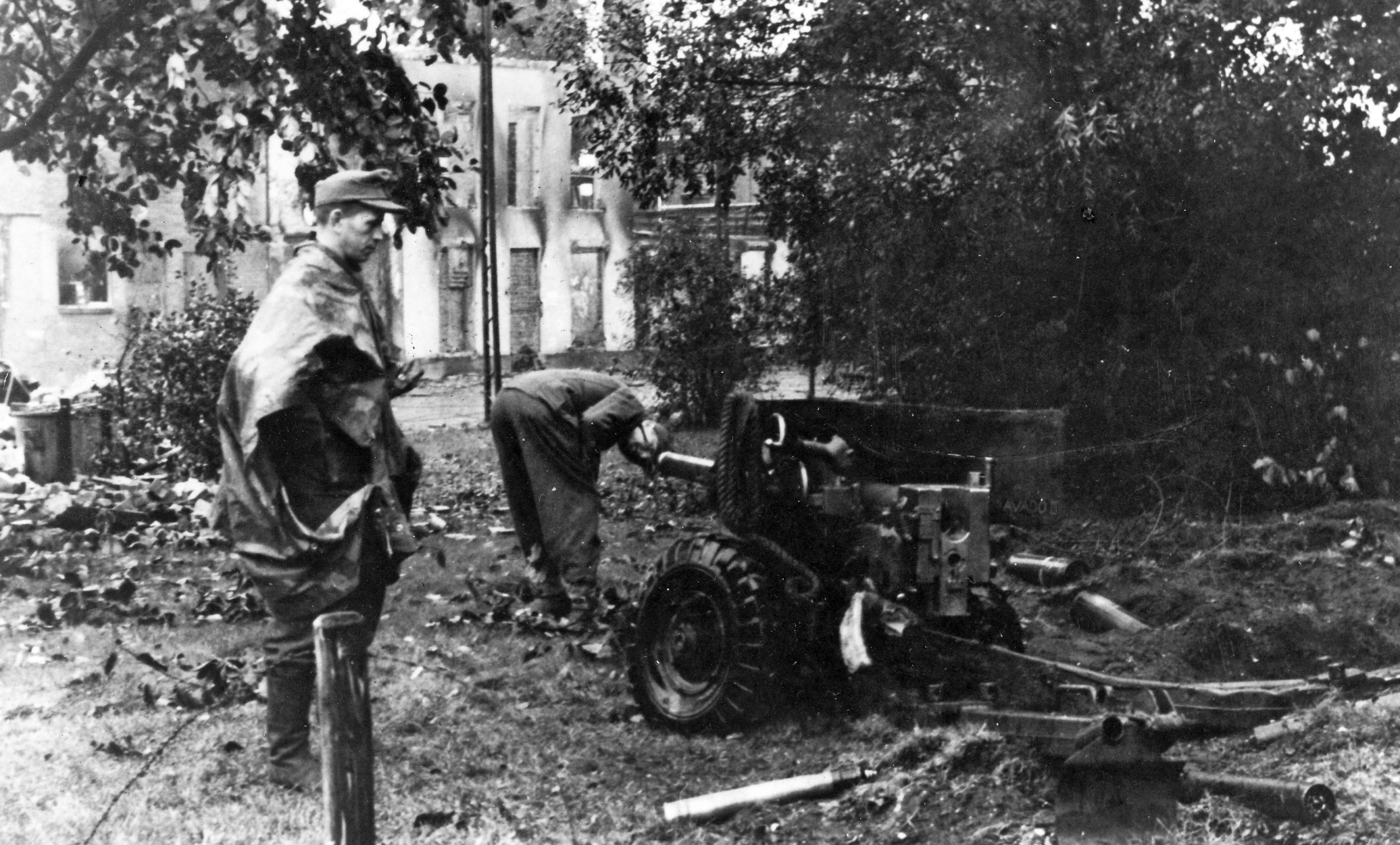
Grenadiere at Bravado II. Kriegsberichter Adendorf photographed the Bravado II by Sgt. Kill on the corner of Ooststraat and Westervoortsedijk. (source: IWM MH3955)
LOCATION AND SHOT DIRECTION
In the previous article, the location of the 6pounder antitank gun, based on Wilkinson’s Gunners at Arnhem, was located next to the factory. This No.3 gun from Btroop, together with the gun from Sgt. Robson covered the access to the bridge from the east (via the Westervoortsedijk). However, on a photo after the battle, the gun can be seen on the corner of the Eusebiusbuitensingel and Westervoortsedijk. This is the piece by Sgt. Kill. It was set up in such a way that it could bring fire to the main road in the northerly direction and not to the Westervoortsedijk.
WHO STOPPED THE PANZER IV?
Based on the photo with the location, and shot direction of both British pieces, it is very likely that the gun from Sgt. Robson took out the Panzer IV ausf. H. It was the only antitank gun that could fire onto Westervoortsedijk on Monday morning 18 September.

Oblique. The position and shot direction of the pieces of Sgt. Robson and Sgt. Kill displayed on an aerial photograph of September 18, 1944. (source: B. Gerritsen)
NAME OF THE PIECE
The antitank guns had names. Eugène Wijnhoud let us know that the piece by Sgt. Kill was named ‘Bravado II’. Shortly after Wijnhouds reaction, the editors received a photo showing the devastation on the northern side of the Westervoortsedijk, with an antitank gun among the rubble. It’s missing a wheel and the gun is on its side. The debris has been moved away to make way for the Foulkes and Simonds Bailey bridges that were laid next to the destroyed bridge. Is this the last evidence of Bravado II?
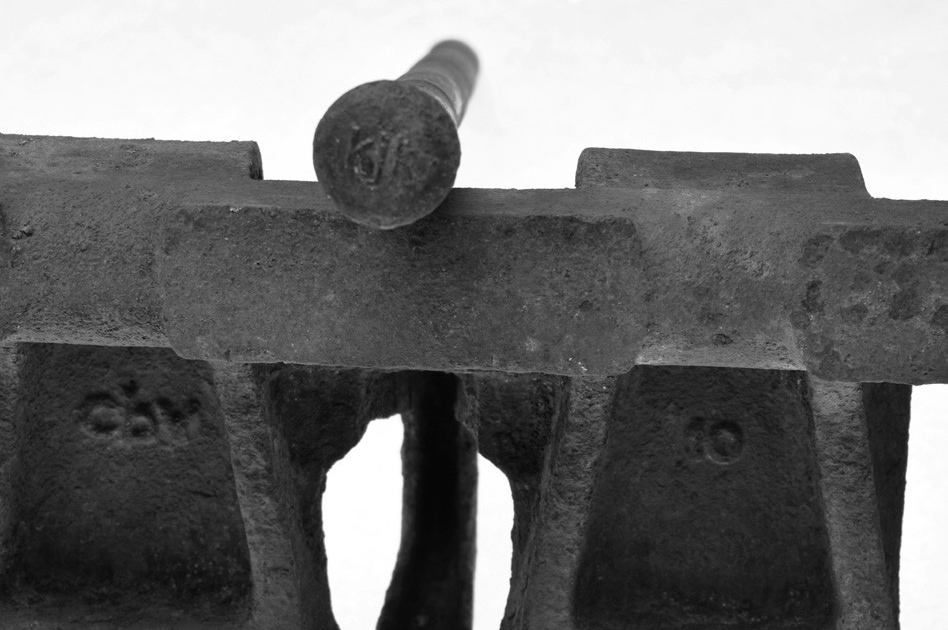
Track link with connecting pin (photo: L. van Midden)
THE TRACK
The editors do not yet know what will happen to the recovered track. Since the release of the previous issue, the track link has been cleaned and letter codes have become visible. On the link pins that connect the track segments, wear can be seen from the many kilometers the vehicle traveled to the end point next to the Camiz. – Leo van Midden With thanks to Eugène Wijnhoud and Bob Gerritsen for their help with this article.
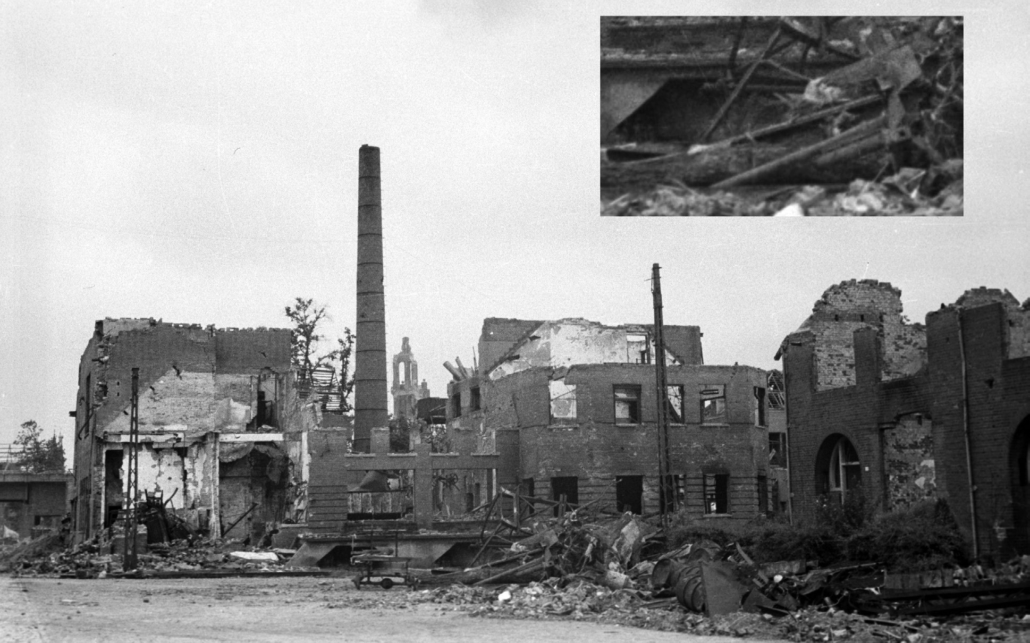
Westervoortsedijk. An antitank gun is visible among the rubble along the Westervoortsedijk: the Bravado II? (source: GA1584-745 Westervoortsedijk Camiz- Nico Kramer)
FIGHTING THE BRITISH AT ARNHEM
THE SSUNTERFÜHRERSCHULE ARNHEIM R.M. (BOB) GERRITSEN
On 21 September 2018 Fighting the British at Arnhem was presented at the Oosterbeek bookshop Meijer & Siegers. Bob Gerritsen previously published Arnhem, a Few Vital Hours, Retake Arnhem Bridge and Arnhem Bridge, Target MIKE ONE, in collaboration with Scott Revell, Niall Cherry, David Truesdale and Martijn Cornelissen. With Fighting the British at Arnhem he now has an important and very relevant book in his own name.
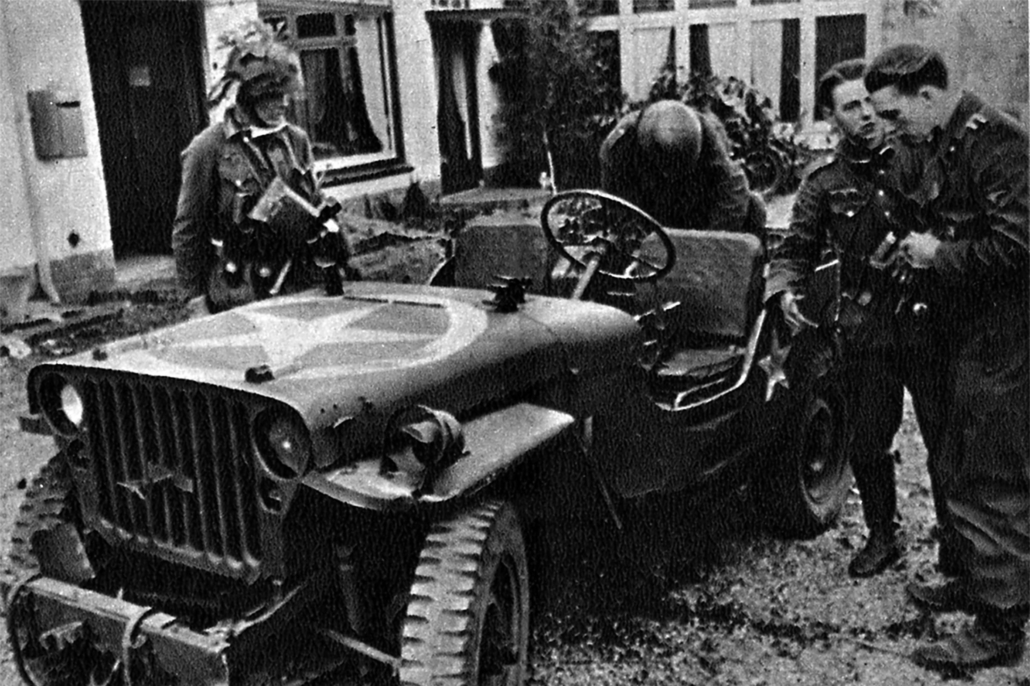
A jeep captured by the Germans is investigated (source: B. Gerritsen)
The book places in great detail, the combat actions of the SSUnterführerschule Arnheim within the performance of the Kampfgruppe Von Tettau during the Battle of Arnhem. This makes the cohesion of the battles clear for the first time in postwar his
tory, and sheds new light on the often underexposed performance of Von Tettau’s troops. The fact that Von Tettau’s share has never received much attention is due to the fact that until recently hardly any extensive archival research has been done into this unit. Bob Gerritsen fills up that gap with Fighting the British at Arnhem. Partly because of his large network he has been able to make surprising finds.
The SSUnterführerschule Arnheim was founded in 1943 to train executives for the WaffenSS. Four companies were stationed in barracks in Arnhem.
For me it was surprising to see that SS officers were photographed at the Saxony Weimar barracks, in front of the building and my desk where I myself was a company commander in 1990. The description of the locations that the SS-Unterführerschule in Arnhem has had will be familiar to many readers.
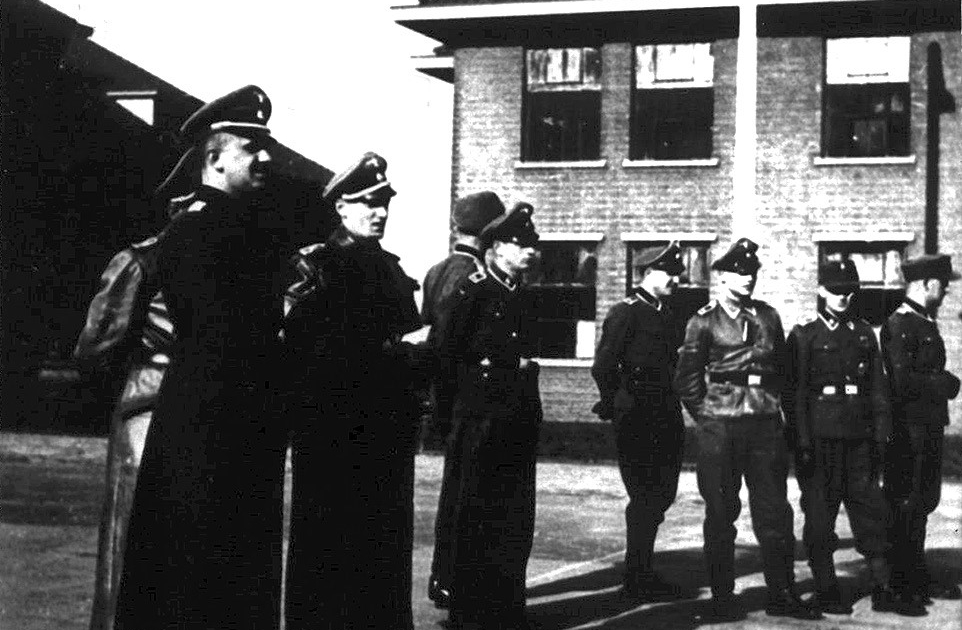
August 1944 in the Saxony Weimar barracks: the framework of SSUnterführerschule Arnheim for one of the alloy buildings. LR: SSHauptsturmführer Hermann Meyer, SSObersturmführer Heinrich Oelkers, SSUntersturmführer Friedrich Voigt and SSOberscharführer Wimmer. (source: B. Gerritsen)
In August 1944 the school was moved to the Dutch coast, in defense of the sector The HagueKatwijk aan Zee. In addition to duties in coastal defense, the training of executives continued. In September 1944 the school was moved again, this time to the socalled Waalstelling. For example, the bridge at Zaltbommel had to be set up for defense.
On September 17 1944, the SS Unterführerschule came under the command of the Kampfgruppe von Tettau and the units were deployed against the British who fought on the western side, roughly the 1st Battalion The Border Regiment.
The SS Unterführerschule Arnheim, led by SSStandartenführer Lippert, consisted of two units of battalion size: Bataillon Schulz and Bataillon Eberwein. Bob Gerritsen makes clear how these units moved from Wageningen, towards Renkum and Heelsum. Bataillon Schulz was strengthened with 10.Schiffsstammabteilung, naval soldiers whom encounter afterwards in the battles with B Coy 1st Borders at Renkum. Later this unit will be relieved at the Westerbouwing by German air force soldiers. With a description of the actions of Bataillon Wossowski, supported by Panzerkompanie 224, who reached the battlefield from Naaldwijk with seventeen captured French flamethrower tanks, Gerritsen added new insights to the battle on this hill.
It goes too far to describe these battles in detail, but it is a relief to read now which units of Kampfgruppe Von Tettau where exactly fought on the west side of the British perimeter. Bob also describes in detail which units of Von Tettau were erected from Ede over the Ginkelse Heide until finally reaching the Sonneberg area, just north of the Utrechtseweg near Hartenstein.
The book does not end, as is often the case, in the evacuation of the British over the Rhine on 26 September, but also discusses the role played by the SS Unterführerschule in the formation of German bridge heads south of the Rhine, at the brickworks De Korevaar and Terwindt.
It is the merit of Bob Gerritsen that he has linked the action of SSUnterführerschule to the actions of Von Tettau, a part of the struggle of which many have heard the clapper. Gerritsen now shows us the clock for the first time. – Erik Jellema R.M. Gerritsen, Fighting the British at Arnhem, SSUnterführerschule Arnheim (RN Sigmond Publishing 2018), 224 pages, English, hundreds of annotated blackandwhite photos, clear maps, appendices, acknowledgment and index, ISBN 9789081270397.
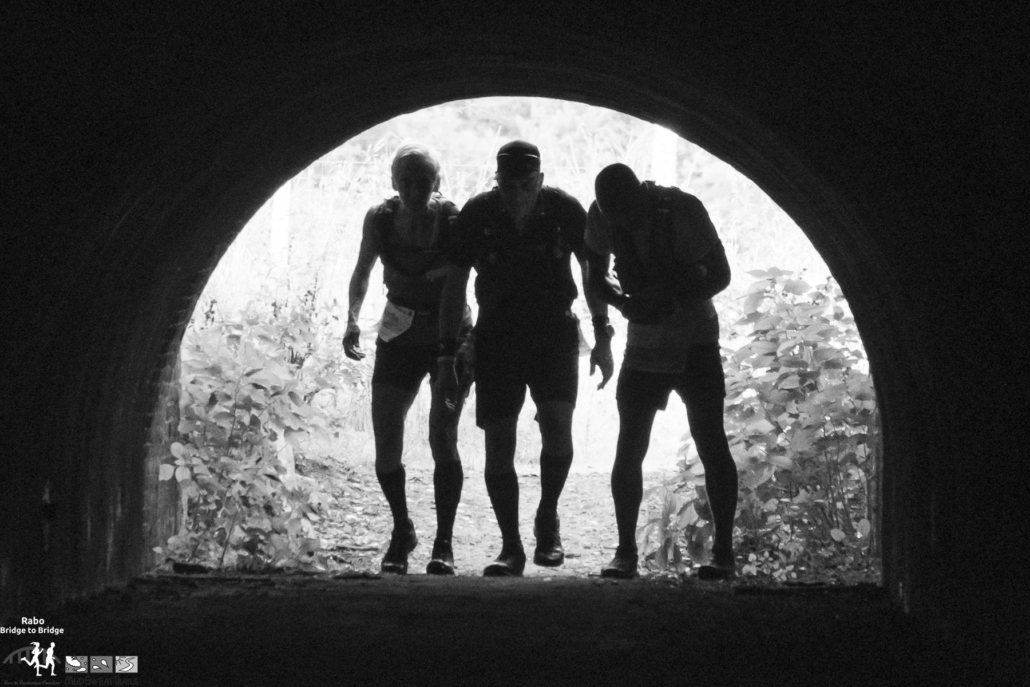
“FAR MORE IMPORTANT TO ME THAN ANY TOP ATHLETE EVER” A TALK WITH THE MAN BEHIND THE AIRBORNE FREEDOM TRAIL
Running In the footsteps of John Frost. Over unpaved paths, through streams, over obstacles, and past famous locations from the Battle of Arnhem. The Airborne Freedom Trail, a trail run which saw its first edition on September 8th combines endurance sports with a deeply felt historical awareness of the events around Arnhem in September ‘ 44. “You could call it a modern form of commemorating”, initiators Bart Koopmans and Richard Kaper say.
”Imagine: it is September 1944. The ground below you is still far away. Above the roar of the aircraft engines, you hear the heart beat of your comrades. Or is it your own heart that thumps in your throat? You go over your equipment once more, looking down to the country that is not your own. One more time: recheck your stuff. This country is not a safe place. You swallow. And then you jump. No, you fall down with dizzying speed, to an unknown fate.
Your parachute pops open and the world becomes quieter. You look around you, amazed. Curious, a little scared, but ready to execute the tasks you were given. You don’t think of tomorrow, you don’t know anything about tomorrow. For many there is no tomorrow. Welcome to the Bridge To Bridge. Run. To Remember Freedom.” (source: Studio Halfvol)
These probing words started the trial edition of the Airborne Freedom Trail for a handful of people in 2017. “It is a ‘fire baptism’ to which all participants are subjected, played in a darkened army tent on Ginkel Heath, moments before the start of the off road running competition. “Although competition is not really the right word,” says Bart Koopmans (1988) of Oosterbeek, a trail runner himself, an army reservist and one of the two organizers. “It’s not a contest in the sense that it’s about who reaches Arnhem Bridge first. It is the combination of the individual achievement and the historical setting that makes this run so special and sets it quite apart from other runs.
Before you go on your way, you sit on a bench in an army tent and you are ‘charged’ with the realization that you are in a unique historical place. With that we will send you off, and that is also the reason why most of the runners participate: to get connected with the past and the historic events that took place here.”
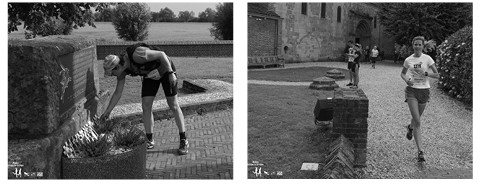
BLENDING IN
Trail runs were called ‘forest runs’ just fifteen years ago. Over the years this extreme endurance sport has been given a professional character. One look at the site of MudSweatTrails, thé Dutch site on the internet for trail runners and trail running, or the Airborne Freedom Trailaftermovie on YouTube is enough. Koopmans: “The organization of Bridge To Bridge was looking for an event on Saturday, the day before the big event on Sunday. That’s how Richard and I got in touch. We soon came to the area west of Arnhem. The three advance routes to Arnhem from the battle have been taken as a base for setting up three trails. Participants get sent a route book in advance with detailed information about the routes to the bridge, and about the events that took place 74 years ago. Along the way you’ll pass photo screens with images from the battle. You don’t just run over the DZ’s and LZ’s, but you’ll also visit the cemetery and the old church in Oosterbeek while running. Afterwards we’ll send an aftermovie to every runner.
For next year we are already thinking of giving the routes appropriate names, naming them after prominent people from the battle perhaps, and of adding more information on the battle, to give the run even more depth. In this way we try to blend in the historic facts with personal experiences.”
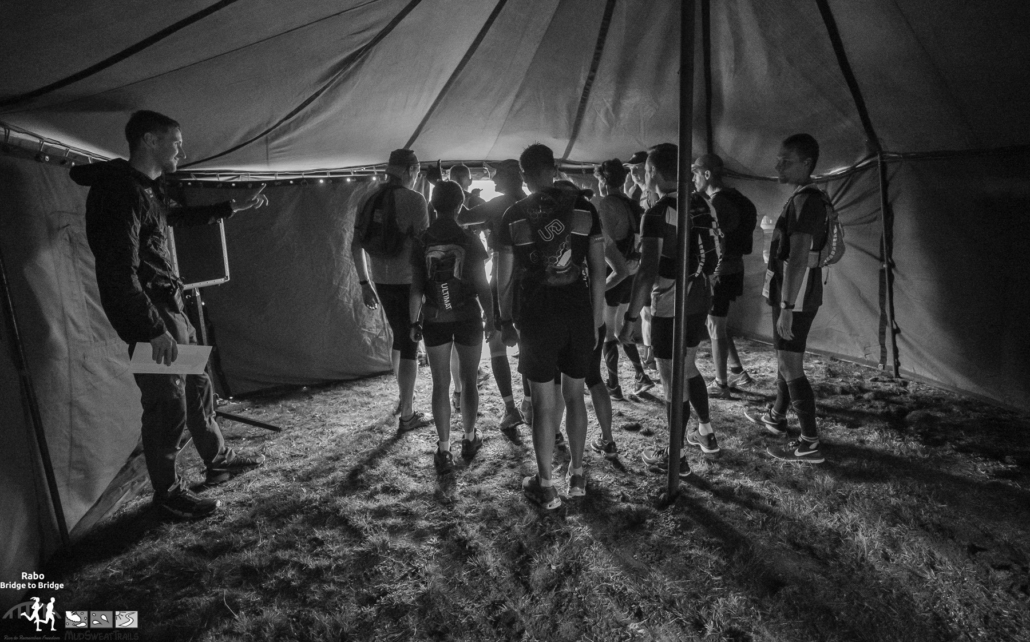
DEEP PASSION
The 2018 Freedom Trail proved that the latest addition to the wide range of Airborne commemorations appeals to a large audience: some 800 runners participated. “Our goal for next year is 1250, with 250 English participants, if possible”, Richard Kaper (1973) adds. Richard is head of sport participation at NOC*NSF that is based on Papendal. Richard is from Arnhem and is an active trail runner. “I have been running far too little recently.
What binds all trail runners in any case is a deep passion for nature and the environment in which we practice our sport. And trail running is meditative. Participants in the Freedom Trail often have their own gripping story, a personal motivation to take part in this particular event. What is striking is that, for example, we have had a rather large group of Srebrenica veterans at the start. If I may say so, Dutch people generally have a somewhat volatile way of commemorating. In this trail run you experience quite a different thing: people really taking the time on the Airborne cemetery to find a place for the wooden Remembrance Cross that we provide them with, people who get completely silent when they run the old church at the Benedendorpsweg… When we started this trail run, we thought: ‘ How do we let runners stand still at certain points, how do we make sure that they actually get a feel of the events od September ‘44?’ But that proved no problem whatsoever. Participants are totally ‘switched on’ during the run, without a doubt. I think this has to a large extent to do with the fact that this sport revolves around the individual achievement.
When you arrive at the cemetery, you have already had time to think about things. Such a feat makes you even more aware of what the men had to endure at the time.” Kaper’s observations cannot be better illustrated than with Thomas Dunkerbeck’s words. Thomas is one of the best endurance athletes in the Netherlands. In the Aftermovie from 2017 he says about his greatest examples, two veterans he got acquainted with at a young age: “They are far more important to me than any top athlete ever”. While standing in his running kit between the headstones on the cemetery, he lets his tears run freely. You don’t get closer to the past as a sportsman. – Alexander Heusschen
The Airborne Freedom Trail consists of three different routes: the 44 km route, which starts on Ginkel Heath, a 28km one and 18 km trail, starting at the Papendal training centre. The finish is near the Airborne at the Bridge visitors’ centre in Arnhem. In 2019, the Freedom Trail will take place on September 14th. For more information: bridgetobridge.nl or mudsweattrails.nl
TRACES AND FINDS OF THE FIGHTING AROUND WESTERBOUWING
Since the 1990s an organized and appropriately authorized group of volunteers has searched for the remains of soldiers missing in the Arnhem area. In the course of their activities, they often unearth objects that are in some way related to the Battle of Arnhem. This group examined the field between Westerbouwing heights and Veerweg, the southwestern part of the Perimeter in november 2005. In a separate development, the regional Archeologisch Werkgemeenschap Nederland (Volunteer Archaeological Society Netherlands, AWN) started a World War 2 taskgroup which focuses on traces of military conflict in the landscape. This group made an inventory of the foxholes at the nearby Oorsprongbeek in 2017. Before discussing the remaining traces and finds from this area, we need to look at the events of 1944.
21 SEPTEMBER 1944
On and around the mentioned field heavy fighting took place in september 1944. I’ll specifically look at the events on Wednesday September 21st. At this time, the Westerbouwing heights were still occupied by B Company, 1st Battalion The Border Regiment, though they were under pressure from the Heveadorp area. They fiercely resisted the attacks by 10. Schiffsstammabteilung, a training unit of the Kriegsmarine. In the night of 20 on 21 September, this unit was replaced by another. This 3. Kompanie of the Ersatz und AusbildungsRegiment ‘Hermann Göring’ (another training unit, this time belon-
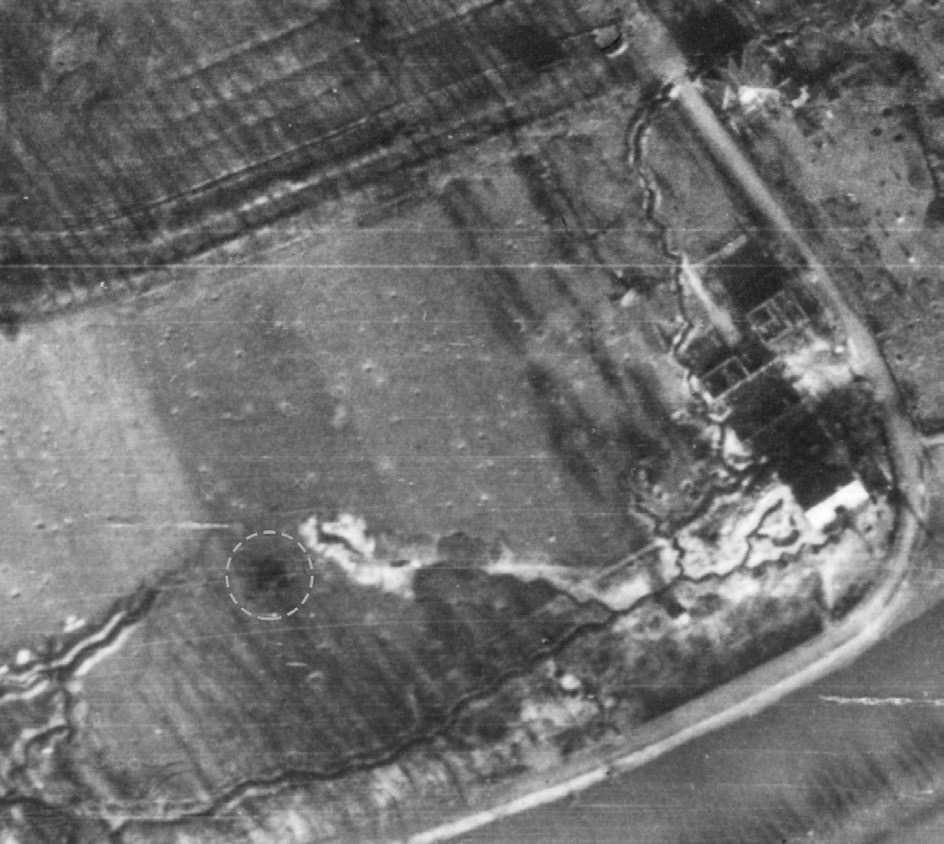
The spot of the destroyed Renault Char B of Leutnant Höser and the findspot of the exploded shell cartridges (within the white circle) shown on an Allied aerial reconnaissance photo. The photo combines multiple chronological moments: the tank is a relic of the attack in september 1944 from Westerbouwing in the direction of the Perimeter to the east. On this photo from February 14 1945, the vehicle is almost entirely surrounded by new trenches. These were part of a new defense line, set up áfter the Battle of Arnhem. The section of the socalled PantherStellung shown here used the nearby Rhine as a natural tankditch and was aimed to the South. The trench system at this time was not yet complete. Photos taken at a later date show that further trenches and positions had been dug. (collection: Wageningen University & Research, Special Collections).

Objects found in the field between Westerbouwing and Veerweg include a variety of brass shell cartridges for both the 4.7 and the 7.5 gun from the French tank of Leutnant Höser. This tank was disabled on September 21st, 1944, the ammuniation subsequently exploded. A small sign with French text was found as well. The text suggests the sign indicated the location of the spare parts and accessories (“accessoires & rechanges”) of (the carriage of) the 4.7cm gun. All these items were found at the location where the tank was destroyed, shown circled in white on the photo on page 12.
ging to the Luftwaffe) is also called the Wossowski Bataillon, after its commander.
In the early morning of the 21st, they were able to push the Borderers off the Westerbouwing, all the way back to the crossroads of Veerweg and Van Borsselenweg. For the situation that pertained henceforth, see the elevation map on page 15.
Wossowski itself took the strategic heights, but the infantry was supported by four tanks of Panzer Kompanie 224. This unit comparised a total of 18 French battleready tanks, most of them of the Renault Char B2type. These tanks had been captured much earlier in the war and had been repurposed by the German army.
THE FRENCH TANKS AND THEIR FATE
Much is already known about this unit and its vehicles from earlier publications. We know, for instance, that in most tanks the 7.5cm hull gun had been replaced with a flamethrower. This horrible weapon was deployed in and around
Oosterbeek against the British. It should be noted that apart from the hullmounted flamethrower or 7.5cm gun, each tank also had a 4.7cm gun in a turret.
Most of these tanks met a sticky end. That goes for the attack by the Wossowski Bataillon and its French tanks as well. They moved east from the area of the Valkeniersbossen and Westerbouwing, both straight through the woods and across the Veerweg and Benedendorpsweg. The tank in front was put out of action on the field mentioned before. It was hit by the portable antitank weapon (PIAT) fired by Private George Everington (12 Platoon, B Coy, 1 Border), which forced it to a stop. Its commander, Leutnant Heinrich Höser was killed by British MG fire while trying to escape from the tank turret.
The tank remained right in the middle of the field.
All in all three of the four tanks deployed during this attack were quickly destroyed, two by Private Everington. The fourth tank withdrew soon after. The attack by Wossowski’s infantry went equally badly, suffering heavy casualties and Oberleutnant Artur Wossowski himself was killed.
FINDS IN THE FIELD
Some of the finds that have come to light at the spot the tank was stopped in the field are quite interesting in the light of this history: exploded cartridge cases of both 4.7 and 7.5cm shells manufactured in France. These archaeological finds of cartridges in both calibers strongly suggest that the tank in the field was not a socalled Flammpanzer, as the tank still had both its original guns of 4.7 and 7.5cm. It also offers something to consider: was it a conscious decision to deploy this variant of the tank with both its guns instead of a flamethrower version? And if so, who made that decision? Did the open terrain in the field play a role, in constrast to the wooded area around it?
The condition of the finds also proves that the ammunition in the tank exploded after it was hit by British fire. The cartridge head has been torn loose from the rest of the cartridge and has curled up: obviously the shells exploded violently after the tank had caught fire. This object isn’t just a testimonial for the Germans’ use of unusual weaponry in their arsenal, but its condition also attests to the destructive force of a tank destroyed by British weaponry.

One of the elongated traces along Oorsprongbeek. Together with some other dips in the terrain, this trace has been interpreted for decades as a group of British foxholes from the Battle of Arnhem, even though recorded sources do not mention this location. (photo: Leo van Midden, Archeologische Werkgroep WO2 AWN17).
TRACES ALONG OORSPRONGBEEK
After much effort the Germans did succeed in capturing the VeerwegVan Borsselenweg crossroads. The remaining soldiers of B Coy 1 Border had already retreated in a (north) easterly direction. The positions of these units have been drawn on the map (see elevation map), but it is certainly possible that the written sources are incomplete.
With this in mind, it’s important to point to the foxholes still visible along Oorsprongbeek (again, see the elevation map). These foxholes have been known for decades and are often pointed out during Battlefield Tours. The (new) owner of the area, Geldersch Landschap & Kasteelen (The Gelderland Landscape heritage & Castles foundation), however, only recently requested the WW2 Archaeological taskforce of the AWN to write a report on these foxholes, so the foundation is better able to take these traces into account. This better enables the foundation to maintain these traces for the future.
It is generally supposed that the British foxholes date no later than September 22nd, 1944. The positions are elevated in relation to VeerwegVan Borsselenweg crossroads, the defended objective,
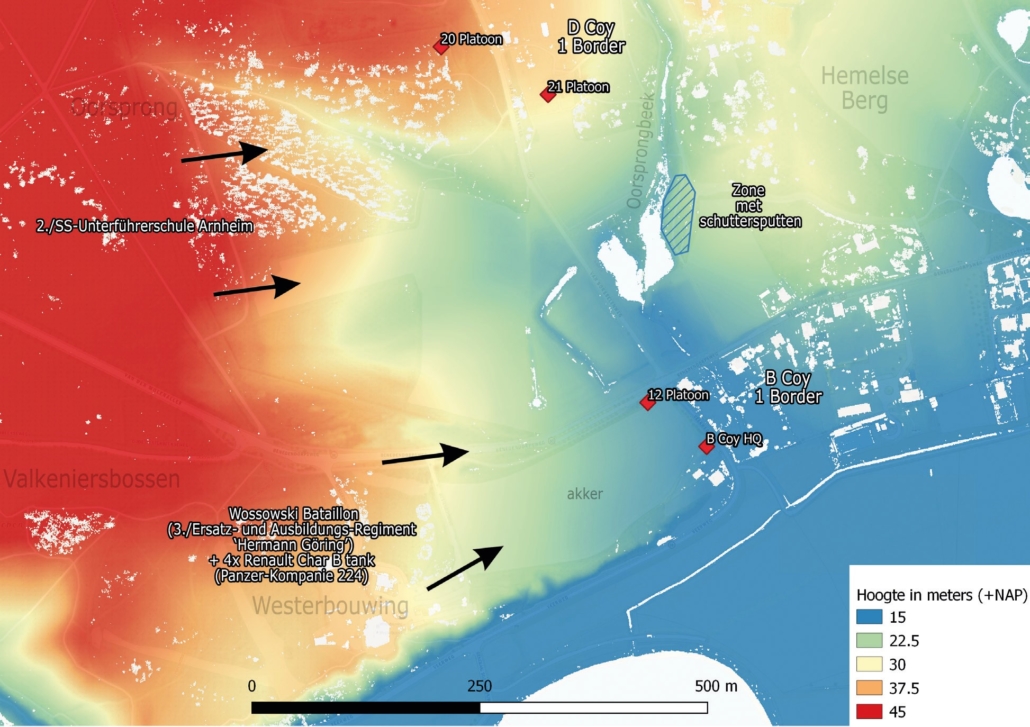
Elevation map of the area around Westerbouwing on the western edge of the Perimeter. British platoons belonging to B Company 1 Border were dug in here. The Wossowski Bataillon was under orders of Kampfgruppe ‘Von Tettau’. The map shows the situation of the attacks on September 21st 1944. It is easily visible that the Westerbouwing heights provide an important strategic advantage compared to the valley formed by the Oorsprongbeek brook, which ends at the crossroads. (source: AHN2, modified by the author).
and behind Oosprongbeek which acts as a sort of natural barrier. During the examination of these traces, it struck the researchers that the locations of these positions do not match the recorded deployment of units of 1 Border.
The registration of the traces along Oorsprongbeek and the finds in the field across from it are a great example of how traces of combat in the archaeological record and landscape can provide additional information to the wellknown written sources. – Martijn Reinders With thanks to Hans Timmerman, David van Buggenum and Leo van Midden.
FURTHER READING
• S. Eastwood, C. Gray en A. Green, When dragons flew; An illustrated history of 1st Battalion The Border Regiment 193945 (1994) • B. Gerritsen, Fighting the British at Arnhem; The SSUnterführerschule Arnheim, Its origins and operations against the 1st British Airborne Division September 1944 (2018) • Ph. Reinders, Panzer Kompanie C (No) 224 in the Netherlands 19431945 (2010) • M. Zwarts, German Armoured Units at Arnhem, September 1944 (2001)
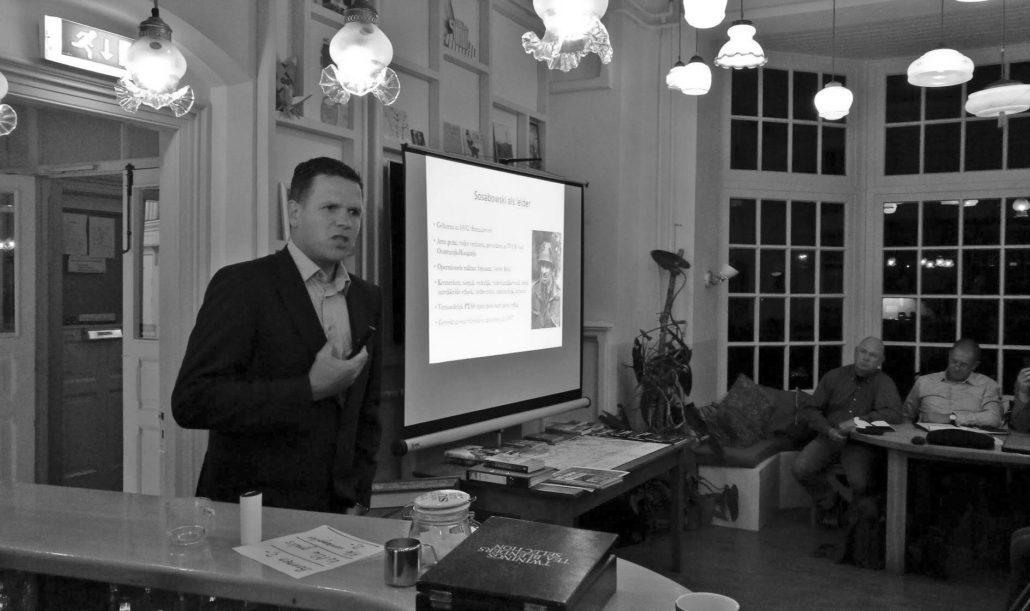
Guestspeaker Florian Huiskamp on the role of Sosabowski before and during the battle.
THE 1ST INDEPENDENT POLISH PARACHUTE BRIGADE IN OPERATION MARKET GARDEN
On Friday evening the 19th of October the SFAM organised its second Airborne themeevening. The theme for this evening was the 1st Polish Independent Parachute Brigade during Operation Market Garden. Dr. Florian Huiskamp was our main speaker for this event. He was promoted on the subject of‘ Polish soldiers in western Europe during World War 2’ in 2015 and turned out to be a real subject matter expert. In the presence of 42 attendees he went back in time to the September days in 1944 and zoomedin on the combat operations north and south of the river Rijn.
Anyone who wants to understand the Polish military presence in western Europe during World War 2, will find its prelude in the Interbellum; the years between the First and Second World War. Dr. Huiskamp briefly elaborated on the consequences of the founding of a renewed Polish state in 1918, the importance of a militarised society and the meaning
of Polish patriotism. A society in which young men were prepared to serve in the Armia Krajowa, the Polish Army in Poland. Most attendees were, besides the role of the Polish Parachute Brigade, undoubtedly aware of the contribution to the liberation of southern Netherlands by the Polish Armoured Division. The size of these, and other Polish forces however turned out to be a surprise. After the release of Polish soldiers from Russian imprisonment, as a consequence of the SikorskyMaisky treaty in July 1942, more than 150.000 of them found their way to the West. An additional 200.000 fought, whether or not under pressure of the Russians, in the Red Army against the Germans.
With regard to this theme it is important to understand that it has been stipulated by the Polish government in exile that the newly created Polish Parachute Brigade primarily was to participate in the liberation of Poland. For that reason they didn’t take part in the operations in Normandy in the summer of 1944. The Brigade solely was to be used in smaller operations and would have been extracted in case it suffered more than a 15% casualty rate. This prerequisite might explain MajorGeneral Sosabowski’s sceptical attitude towards Operation Market Garden’s feasibility. We have to take into account that the Polish paratroopers presumably considered the developments with regard tot the Warsaw uprising more important than their contribution to the liberation of Holland. The uprising in Warsaw started at the 1st of August. For a long time the Polish paratroopers to play a role in this uprising.
The meaning of MajorGeneral Sosabowski as the commander of the Polish Parachute Brigade, and his attitude towards his British superiors didn’t remain unmentioned. Dr. Huiskamp portrayed MajorGeneral Sosabowski as a patriotic, social and paternal leader who, with a strong developed sense of ethics, really took care of his soldiers. It’s true that Sosabowski was critical on the initial plan of Market Garden and its underestimation of the German military strength, but he was determined as well.
Field Marshall Montgomery’s critics after the operation, and his accusation that ‘The Poles fought very badly’, as a consequence of Sosabowski poor leadership, also is completely unjustified.
FINALLY LANDED
In his presentation Dr. Huiskamp clarified the challenges and setbacks the Polish Brigade was confronted with. According to the initial plan the Polish paratroopers were supposed to land on Tuesday 19th of September just south of the bridge at Arnhem. Due to bad weather conditions in England the drop was postponed until the planned drop south of Arnhem bridge was no longer an option. An alternative Dropping Zone was allocated close to the village of Driel. From there the Polish paratroopers were supposed to cross the river Rhine making use of the ferry and reinforce Major General Urquhart’s beleaguered troops at Oosterbeek. Major General Sosabowski was forced to make this new plan while waiting at the airstrip of Saltby airfield. He shared this plan with his battalion and company commanders on Wednesday the 20th. But the departure was again postponed, just after the engines of the aircraft were started.
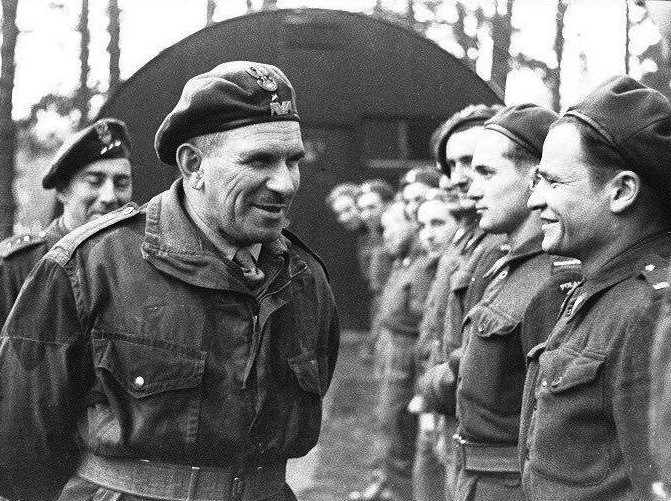
Maj.-Gen. Sosabowski inspects his troops.
Another day later, the Poles departed for Holland on Thursday the 21th of September. Of the original 114 aircraft, just 72 arrived at Dropping Zone K at the end of the afternoon. The remaining 42 aircraft were ordered to return to England during their flight due to bad weather conditions. Instead of the 1568 departed Polish paratroopers just 1003 reached Dropping Zone K. They belonged to 2nd and 3rd Battalion. The casualties during the landing were limited despite the fact that the Germans were able to bring effective machine gun and mortar fire at the Dropping Zone. Immediately after the landing the Poles were heading towards the southern river banks
only to find out that the ferry is not present anymore and the opposite side of the river in German hands.
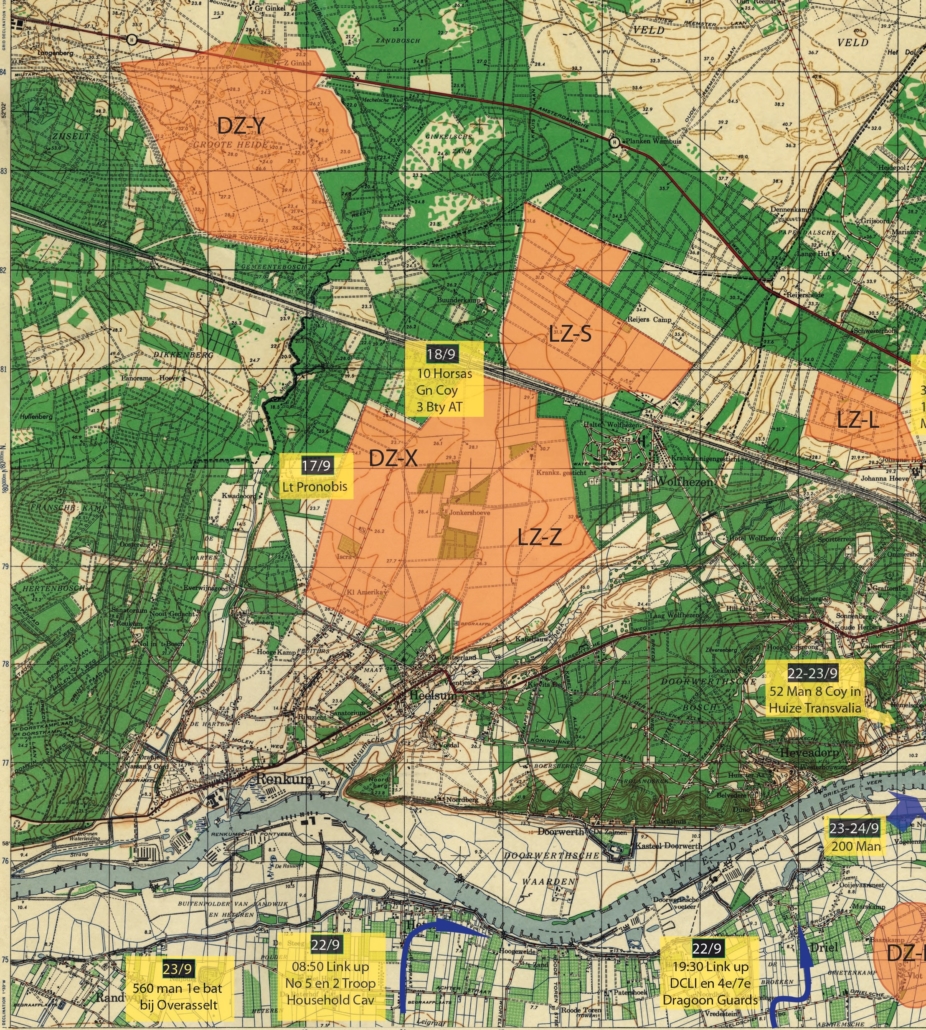 On 2230 hours in the evening Captain Ludwik Zwolanski reports to Major General Sosabowski. Zwolanski is the Polish Brigade’s liaison officer at 1st Airborne Division HQ. He has swum across the river and is carrying a message from Major General Urquhart. His urgent request is to cross the river this night using im provised rafts. These rafts will be ready at 0100 hours. Anxiously the Poles wait until 0300 hours. When no rafts show up, Major General Sosabowski is forced to withdraw his soldiers to the village of Driel.
On 2230 hours in the evening Captain Ludwik Zwolanski reports to Major General Sosabowski. Zwolanski is the Polish Brigade’s liaison officer at 1st Airborne Division HQ. He has swum across the river and is carrying a message from Major General Urquhart. His urgent request is to cross the river this night using im provised rafts. These rafts will be ready at 0100 hours. Anxiously the Poles wait until 0300 hours. When no rafts show up, Major General Sosabowski is forced to withdraw his soldiers to the village of Driel.
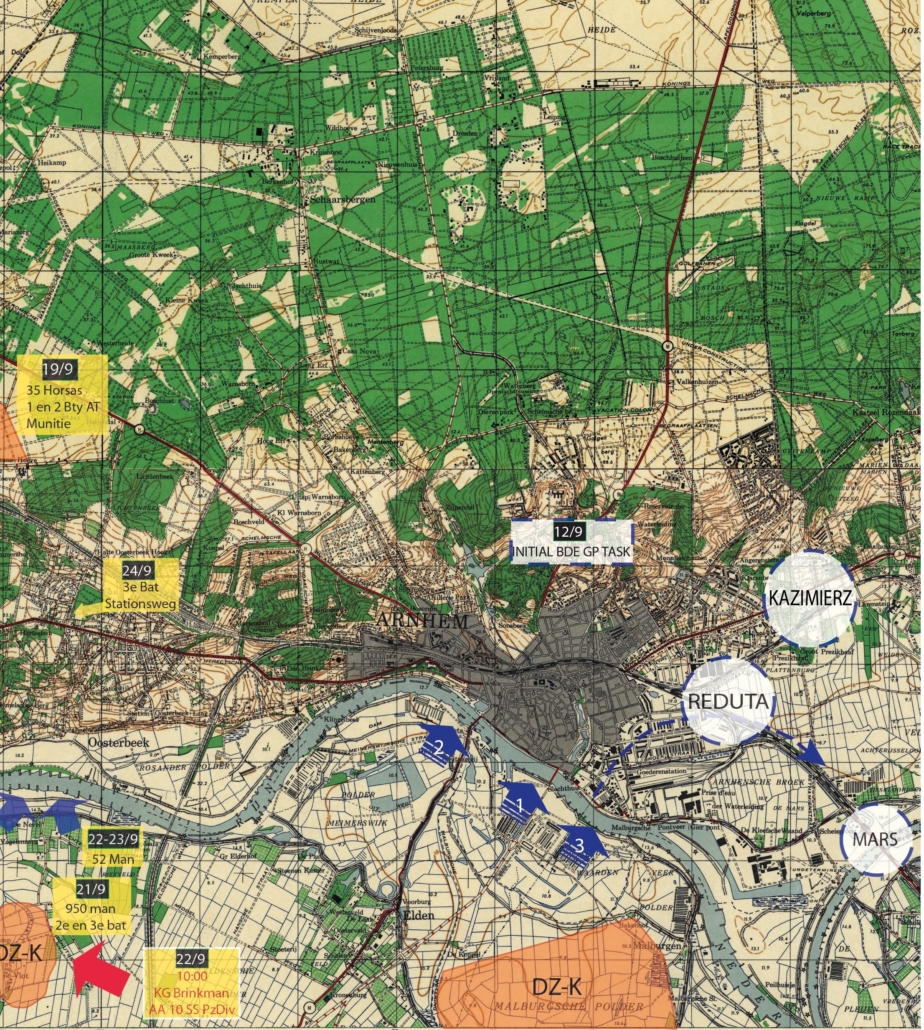
In the early morning of Friday the 22th of September, the first elements of 30 Army Corps’ reconnaissance unit, the Household Cavalry Regiment, arrive at Driel. Two platoons commanded by Captain Wrottesley were able to make use of the dense morning fog and arrive at Driel via Valburg and Heteren. Later that day they are followed by a battalion of the Duke of Cornwall’s Light Infantry reinforced by a squadron of tanks of the Dragoon Guards.
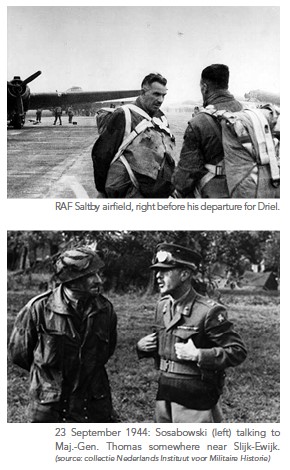
In the evening a second attempt is made to ferry troops to the northern bank of the river. This time 8th Parachute Company is tasked to do so. Unfortunately only 5 small inflatable boats are available. With these boat 52 Polish paratroopers are ferried across the river. Saturday the 23rd of September is used to plan a collaborative effort to bring more Polish paratroopers and infantry units of 130th Infantry Brigade across the river. Sosabowski’s Chief of Staff is assured that more boats will be made available and that the crossing will be supported by 30 Army Corps’ artillery. In the afternoon the remaining Polish paratroopers, who were called back at Thursday, finally arrive in Holland. They land by parachute close to Grave and march on foot to Driel were they arrive on Sunday.
The third attempt to cross the river is made in the night from Saturday to Sunday. In the end only a limited amount of boats is made available. This results in an additional 153 Polish paratroopers reinforcing the defensive positions in Oosterbeek.
PROVOCATIONS
On Sunday morning the 24th of September Lieutenant General Horrocks, commander 30 Army Corps, visits Driel. To Major General Sosabowski’s surprise he is not accompanied by Lieutenant General Browning, commander of 1st Airborne Corps.
From the church tower Sosabowski informs Horrocks about the current situation. Horrocks is listening but doesn’t react. After the update he orders Sosabowski to report that afternoon at the HQ of 43 Wessex Infantry Division at Valburg. It turns out to be an inconvenient meeting. Besides Lieutenant Generals Horrocks and Browning, the commander of the 43 Wessex Division, Major General Thomas, is present. Initially Sosabowski’s translator Lieutenant Dyrda is not given permission to be present during the meeting. Only after some Polish urging does Browning agree. Major General Thomas opens the meeting by informing Sosabowski that his brigade is now under his command. He continues by announcing this night’s upcoming crossing operation. An operation to be executed by 130th Infantry Brigade with its 4th Battalion The Dorset Regiment and 1st Polish Parachute Battalion. The operation will be lead by Brigadier Walton, 130th Infantry Brigade’s commander. It’s an overt provocation. Not just because Thomas is deciding which Polish battalion is to take part in the operation. But specifically because the crossing operation is to be executed by a general lower in rank than Major General Sosabowski. It results in a serious disagreement after which furiously Horrocks reacts at Sosabowski that ‘you are under my command and you have to do as ordered’.
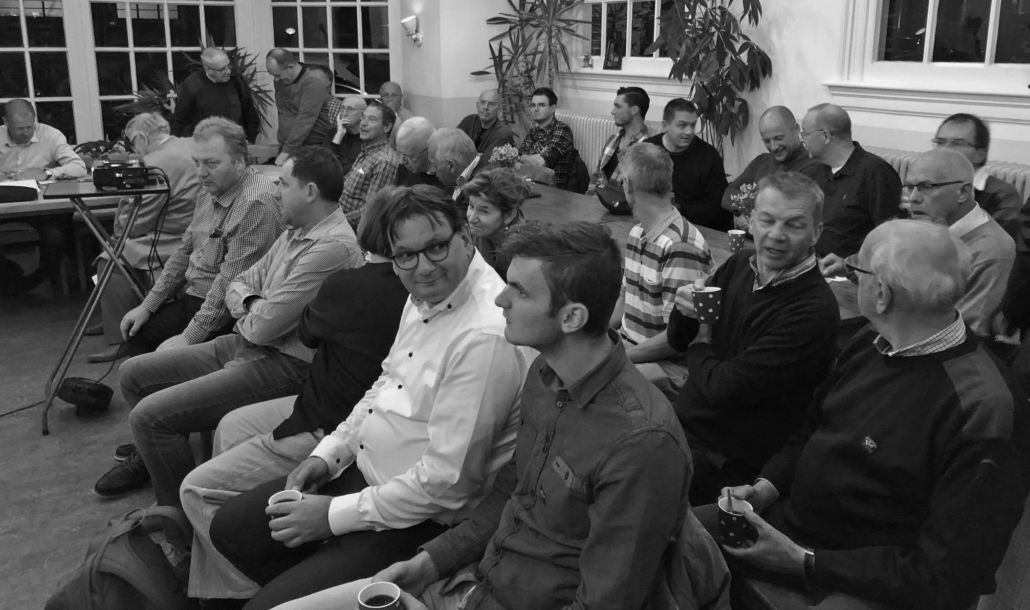
Intermission during the theme evening at ‘t Huukske.
In the end the operation is carried out that night. Not with the purpose to reinforce the existing bridgehead of 1st Airborne Division, but to hold the perimeter in own hands and to facilitate 1st Airborne Division’s retreat. With just 9 inflatable boats the Dorsets are the first to cross. Their mission is to seize the Westerbouwing heights. Just half of the battalion succeeds in crossing the river. Most of them are taken prisoner when they reach the opposite bank. This last attempt to bring forces to the northern bank turns out to be an additional failure.
In the afternoon of the 25th of September the decision is made to retreat the remaining elements of 1st Airborne Division to the southern bank of the river. This operation will take place the same night.
Under cover of darkness and artillery support Urquhart’s men silently move in the direction of the river. The soldiers of 8 Parachute Company are among the forces to act as rearguard. Just 2323 soldiers of 1st Airborne Division reach the southern bank of the river. Amongst them 160 paratroopers of the Polish Parachute Brigade. Approximately 120 Polish paratroopers get captured. That same day the Polish Parachute Brigade leaves Driel on foot. They march from Driel to Nijmegen. On the 6th of October the Polish Brigade is transferred to a British base close to the Belgian Canal coast. From Oostende harbour they return to England by boat on the 10th and 11th of October. – Otto van Wiggen
Dr. Florian Huiskamp’s thesis ’Without fear and without reproach’ (‘Zonder vrees en zonder verwijt’) can be viewed and downloaded for free on www.polishsoldier.nl
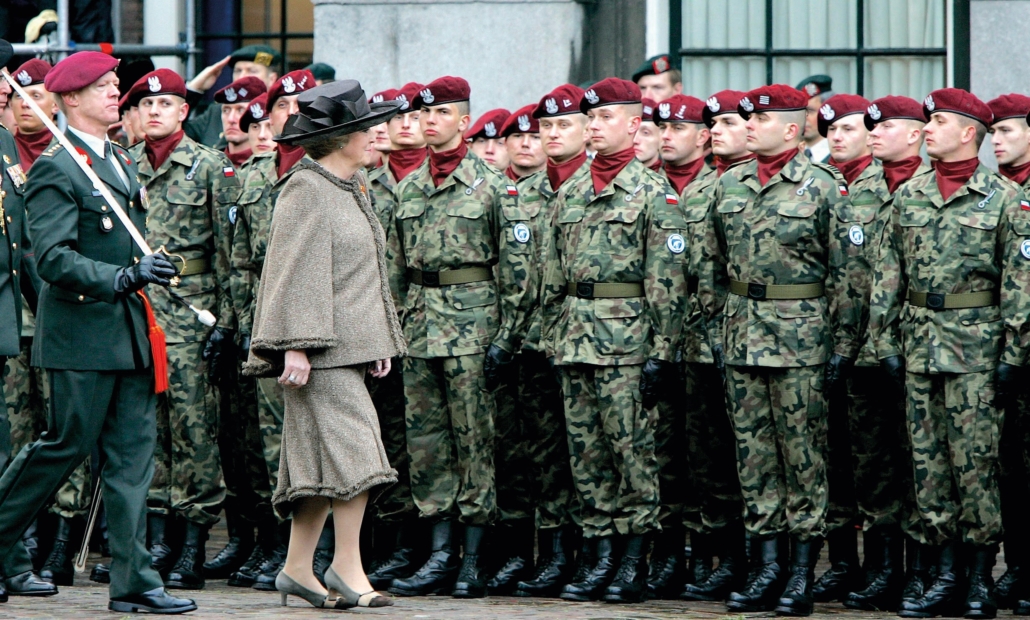
The Hague 2006: Queen Beatrix awards the Order of William to members of the 6 Brygada Powietrznodesantowa (the 6th Polish Parachute Brigade from Krakau), the successors of the 1st Brigade.
A LETTER THAT WAS LAID ASIDE HOW THE POLES AT DRIEL COULD HAVE BEEN RECOGNIZED EARLIER
The Polish paratroopers who fought in Holland in September 1944 had to wait 62 years before their rehabilitation. This postponed rehabilitation came too late for most of them. Just one official action could have initiated the formal award for the Polish Parachute Brigade already during the sixties of the previous century.
It’s late in the afternoon of the 21th of September when the first Polish paratroopers land by parachute south of the Rhine near the village of Driel.
At that moment Operation Market Garden is in its fifth day. The situation on the British side at Arnhem is severe. The Arnhem bridge has been retaken by the Germans and the 1st Airborne Division is surrounded in a small perimeter in Oosterbeek. Polish suport is much needed. In the days to follow Polish paratroopers are ferried across the
Rhine to support their besieged comrades. Despite these attempts the 1st Airborne Division is forced to retreat on the 26th of September. As a result of the combat operations more than 100 Polish paratroopers are killed in action. In the aftermath of the operation British army command blames the Poles for ‘not having being combat ready’ and ‘not having fought bravely’. As a result the British command forces the brigade commander, Major General Sosabowski, to resign on the 9th of December.
BATTLE ON PAPER
55 Years after the battle, Dutch student journalism, Geertjan Lassche, is in the process of making a documentary for the Evangelical Broadcasting about a Dutch nurse from Driel, Cora Baltussen, and a Polish veteran: Corporal Wladislaw Korob. The movie describes their experiences in the vicinity of Driel during the Battle of Arnhem. When Lassche learns about the fact that the Polish paratroopers have never been awarded for their contribution, he commits himself to produce a television documentary about the Polish participation in the battle.
In January 2004 Lassche is given permission and a budget from the Evangelical Broadcasting to start the production. In the following months he is able to interview a large number of veterans, eye witnesses and previous commanders about the case. Bit by bit Lassche discovers that various efforts have been tried in the past to honour the Polish Parachute Brigade. In the summer of 2004 he opens up a document in the archives of the Ministry of Defence in which Queen Wilhelmina approves a presentation to award 10 Polish paratroopers for bravery. Additional to this, a letter written in 1961 by Cora Baltussen is found in which she requests the Queen to award the Polish Brigade. It turns out that Queen Wilhelmina’s approval has been sent forward to the Ministry, but that it has been pushed aside because it concerned ‘a political sensitive issue’.
Lassche thereafter tries to contact Prince Bernhard. The Prince is willing to cooperate. At that moment he is unaware of Queen Wilhelmina’s approval. In September television channel Netwerk informs the Ministry of Defence about the existence of these documents. They request an interview with Henk Kamp, the Minister for Defence. Henk Kamp responds that a Ministerial Decision, originating from 1952, prevents him to reward acts of bravery committed during World War 2. Prince Bernhard calls upon the Dutch Parliament to reward the Polish Parachute Brigade and their commander posthumously with the highest Dutch award, the Military Order of William.
Television Channel programme broadcasts an condensed version of Geertjan Lassche’s documentary ‘God bless Montgomery’, ‘the forgotten Poles in the Battle of Arnhem’ on the 14th of September. This is followed by an interview with Prince Bernhard. Additional new facts emerge about the Polish contributions demonstrated during the Battle of Arnhem. After the broadcast questions are raised in Parliament by Frans Timmermans (Socialist Party) and Hans van Baalen (Liberal Party). The formal reaction of Henk Kamp is that the Ministerial Decision from 1952 precludes an official award. Timmermans and van Baalen are tenacious. They submit a resolution in which they request the Parliament to task the Capittel of the Military Order of William to investigate options to reward posthumously. This resolution is accepted unanimously.
One year later, on the 9th of December, sufficient evidence has been collected to demonstrate that soldiers of the Polish Parachute Brigade fought bravely indeed. Their contribution was more than important during the entire operation. The investigation team lays hands on an encrypted message of Field Marshall Montgomery in which he accuses the Polish soldiers of not fighting well.
This statement is the most important evidence of the British humiliation of the Poles.
On the 31st of May 2006, Queen Beatrix, reaches out the Order of William to the 1st Polish Independent Parachute Brigade. Major General Sosabowski’s relatives receive the Bronze Lion, in the name of the deceased General. – Otto van Wiggen
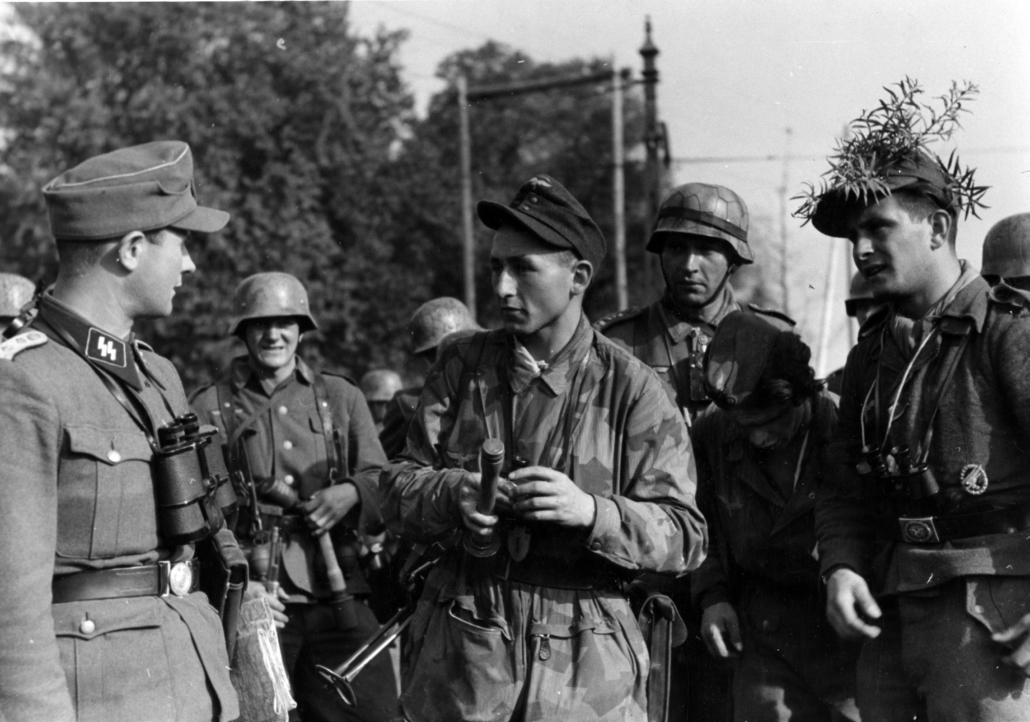
Photo 1: German soldiers from various units (photograph: Kriegsberichter Pospesch. Source: Bundesarchiv)
MINISTORY 129: LOCATION OF FAMOUS PHOTO FOUND (3)
For the time being this will be the last photo in the series ‘discovery of an unknown location’ of a photograph taken during the battle of Arnhem. It’s not sure if this picture was taken at the time. The official caption only reads: “Schlacht um Arnheim (…) Zu den rasch zusammengefasste deutsche Kräften, die gegen die gelandeten Truppen eingesetzt werden, gehören Grenadiere des Heeres, Männer der Polizei, Fallschirmjäger und SSPanzergrenadiere.”
The location was unknown. The photo is much used in books on the battle because it illustrates the diversity of German troops quite well, and thus the German improvisational abilities. A Waffen SS officer, Fallschirmjäger, Luftwaffe soldiers and regular Wehrmacht soldiers can be seen. The details in the background have often led to wrong conclusions. The scene was often wrongly placed at the railway yard in Arnhem, because of the visible overhead lines. It turns out that it is not Arnhem, but a city further south: the photo was taken in the Keizer Lodewijkplein (nowadays the Trajanusplein) in Nijmegen! The trees in the background are in the Hunnerpark. We are looking northwest, the Waal bridge is behind the trees. The SS Hauptsturmführer, identifiable by the rank insignia, is most likely Karl Heinz Euling, the commander of the German positions in that area. The pylons and other posts can be seen on several photos from 1944-45 (see pictures 2 to 4).
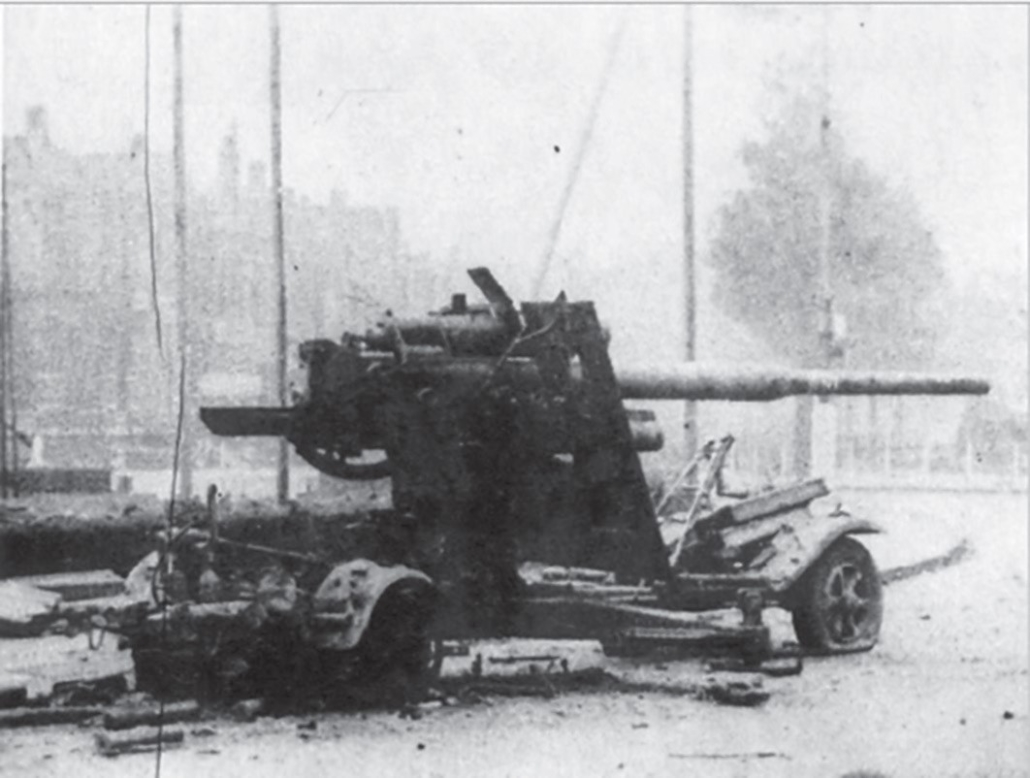
Photo 2: A German 88mm gun in Keizer Lodewijkplein, looking south to the Meester Franckenstraat. (source: collection of the Regional Archive, Nijmegen)
Aerial photos show there were six roads leading into the square and two tram lines across it. Both tram lines came from the St. Jorisstraat on the southern border of the Hunnerpark, a double line led to the Meester Franckenstraat, and the other single line ran down Ubbergseweg, along the back of Huize Belvoir. The dark pylon right in the middle of the Pospesch photo belongs to the Ubbergseweg tram line. The curved crossbar on which the overhead line hangs is situated on the left of the tram. The other white poles and the ‘portal’ only appear on photos from 194445. Perhaps it is a kind of emergency suspension for the overhead line of the other tram line. Finding a location like this is like looking for a pin in a haystack. The trick is to make the haystack smaller. In addition, you have to be lucky. This time part of the solution, after a couple of unsuccessful attempts, was photographer Pospesch. Only a handful of photos are known of him during Market Garden, including a few from the battle around the Pannerden ferry. He was attached to the Frundsberg division and made photographs of the units crossing there. In these photos in Market Garden then and now from Karel Margry (p. 359) you immediately encounter a Hauptsturmführer in the description: Euling. His unit was one of the first to cross and would eventually arrive in Nijmegen around noon on the 18th.
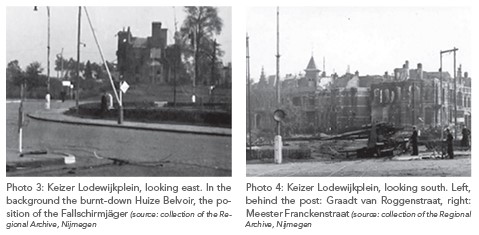
Photo 3: Keizer Lodewijkplein, looking east. In the background the burntdown Huize Belvoir, the position of the Fallschirmjäger (source: collection of the Regional Archive, Nijmegen. Photo 4: Keizer Lodewijkplein, looking south. Left, behind the post: Graadt van Roggenstraat, right: Meester Franckenstraat (source: collection of the Regional Archive, Nijmegen
Euling took command of the position that protected the southern ramp of the Waal bridge, in the Hunnerpark and around the Keizer Lodewijkplein. Searching on photos from 1944/1945 then yielded the result of photos 2 to 4.
With that, all the pieces of the puzzle fell into place. It is known that Kampfgruppe Euling consisted, among other things, of units of Fallshirmjäger, Luftwaffe (Hermann Göring) and WaffenSS. This is exactly the same as the soldiers depicted in Pospesch’s photo (1). We also know that Pospesch was in Nijmegen because of the statement from miss C. Omboo from Lent: “On Sunday evening, September 17th, a German press photographer came to ask us for quartering. The photographer said: “Ich mache das Sie nicht mehr Soldaten bekommen! The name of the photographer was Carl Pospesch. He came back from Nijmegen with holes in his trousers, from the shooting at the Valkhof’.”
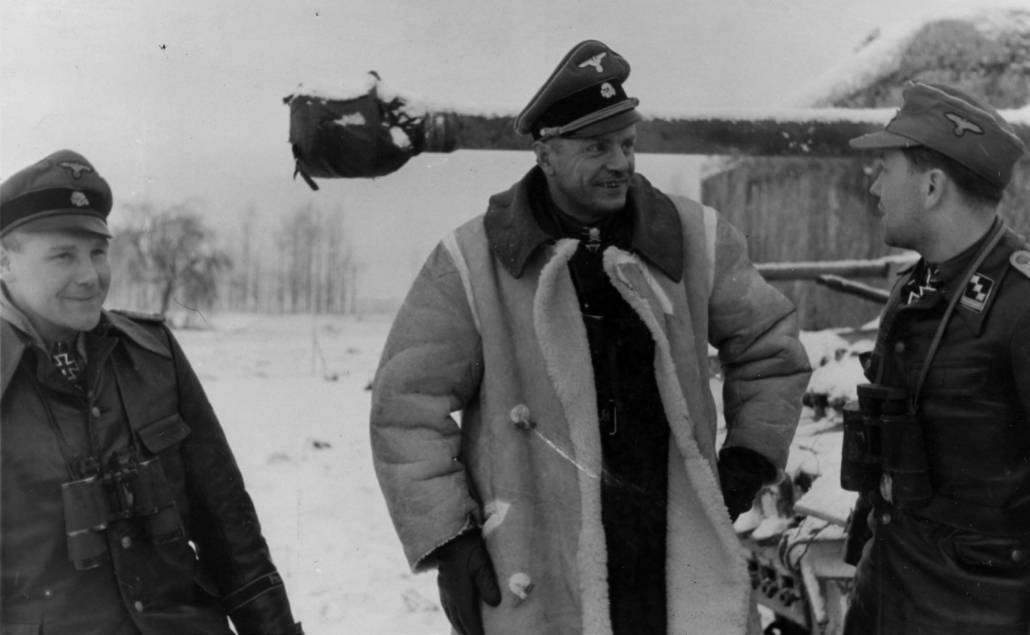
Photo 5: Obersturmbannfuhrer Otto Paetsch (who also fought in Arnhem), Brigadeführer Heinz Harmel and Euling. The photo was taken in February of 1945. (Source for photo 6: Bundesarchiv, 18320060819500)
If September 18th is correct, then the photo must have been taken on the afternoon of the 18th, because Euling was not there before that date. And then about the identification of Euling: on famous photographs of him from the war he almost always wears a field cap. That was not very common, but it was also not exceptional (see photo 5). There is certainly a similarity in the Hauptsturmführer of photos 1 and 5. That, added to the time and location, makes it almost certain that our man is Euling. A few years earlier and we could have asked him; he passed away in 2014.
– Paul Meiboom With thanks to Karel Margry for the original caption (photo 1) and Bob Gerritsen for the quote from Mrs. Omboo from Lent.
Comments: pemeiboom@gmail.com
TEEROSEN OP DE VELUWE – W.H. TIEMENS
Teerosen op de Veluwe by Willem Tiemens, a book that was published over 30 years ago, is still something special. Not only because it is about the then new Ylevel system of the Luftwaffe, but also because it relates extensively about the daily life of the women and men who where billeted on Terlet and the Zijpenberg (a ridge of hills in the province of Gelderland) during the Second World War. Both positions were codenamed Teerosen T for Terlet.
Before Teerosen on the Veluwe came out Tiemens had already published another book: Facetten van de Slag om Arnhem (1984): it contains a number of subjects that deal with the Battle of Arnhem, such as the alleged betrayal of double spy Christiaan Lindemans, aka King Kong. But it also carried a story about Diogenes and Teerosen, the German Luftwaffe command bunker of the 3. JagdDivision on the Koningsweg in Schaarsbergen and both Teerosen radio traffic interception units, where hardly anyone knew anything about it at that moment.
The most interesting chapter of this book is the translation of a diary of a noncommissioned officer of Teerosen 2, under the title ‘I like it here …’.
This diary was found shortly after the war in one of the vacant barracks at the huge Diogenes command bunker. Tiemens later managed to trace the family of the author in question and was given permission to publish the diary notes from 17 February to 23 July 1943 in translated and anonymized form. This story gives a special insight into the daily life of the men and women on the Zijpenberg and Terlet and has undoubtedly been the reason for Tiemens to find out more about the two Teerosen positions, through the contacts with the Interessengemeinschaft Luftnachrichten Regiment 201. During the annual meetings of this veteran club Tiemens spoke with the elderly men and women, and he got access to unique photo material from private collections.
In the end these stories and photographs formed the basis of what we now know as the Teerosen book, a publication of which, to my knowledge, there is no equivalent worldwide.
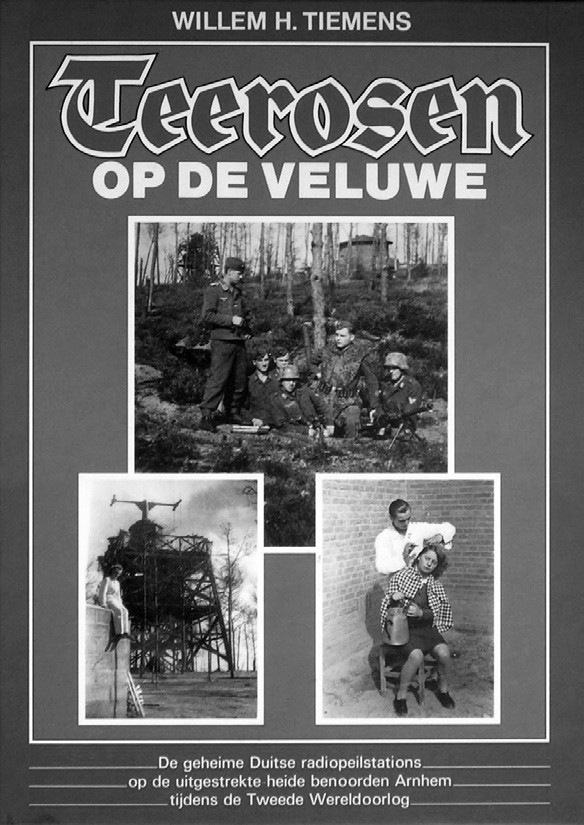
Teerosen op de Veluwe Written by: W.H. Tiemens Publisher: Lunet, Naarden 1986 ISBN: 9071743012 Format: 125 pages
Usually this type of publications deal with military actions, the tactics used and the technical background, but they are not the main focus of attention in this book. Teerosen op de Veluwe is mainly about how the boys and girls of the Luftnachrichtendienst in the two new Teerosen positions on the heath near Arnhem tried to get through the war as pleasant as possible. It will came as no surprise that amorous encounters happened between the soldiers, the conscripted men and female volunteers of the Luftnachrichtendienst. It all can be read extensively in this book and in Facetten van de slag om Arnhem. Marriages and possibly also Teerosen children have occurred.
For some of the Teerosen men the war ended less peacefully: about 50 of them were deployed at the battle in Elden and Elst from 20 September 1944, under the leadership of Hauptmann Willi Weber.
In Teerosen op de Veluwe it is stated that Weber was ‘mainly interested in an award’, which he was told by his former colleagues after the war. Interesting in the context of the historiography surrounding the Battle of Arnhem is also the correspondence that Tiemens had with FliegerHauptingenieur Wolfgang Fricke, a civilian DiplomEngineer with the military rank ‘auf Kriegsdauer’,
who together with his chief Oberleutnant dr. J.A. Schaeder was responsible for the technical development and tests under war conditions of, among other things, the new Ysystem. This technical staff was housed in Arnhem in the Christelijk Lyceum on the Utrechtseweg. Fricke describes in his letters exactly what happened on 17 September 1944 in the city and how they had to leave the battle front.
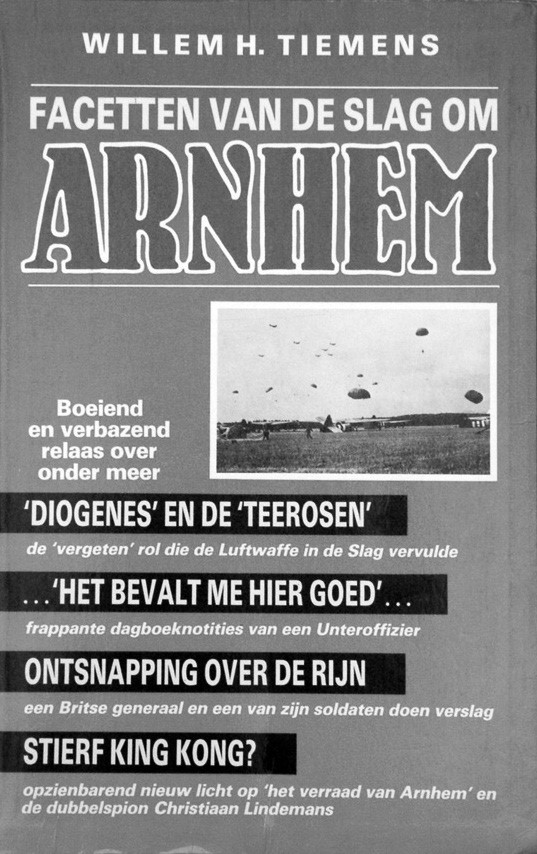
Facetten van de Slag om Arnhem Written by: W.H. Tiemens Publisher: De Gooise Uitgeverij Weesp 1984 ISBN: 9026945701 Format: 192 pages
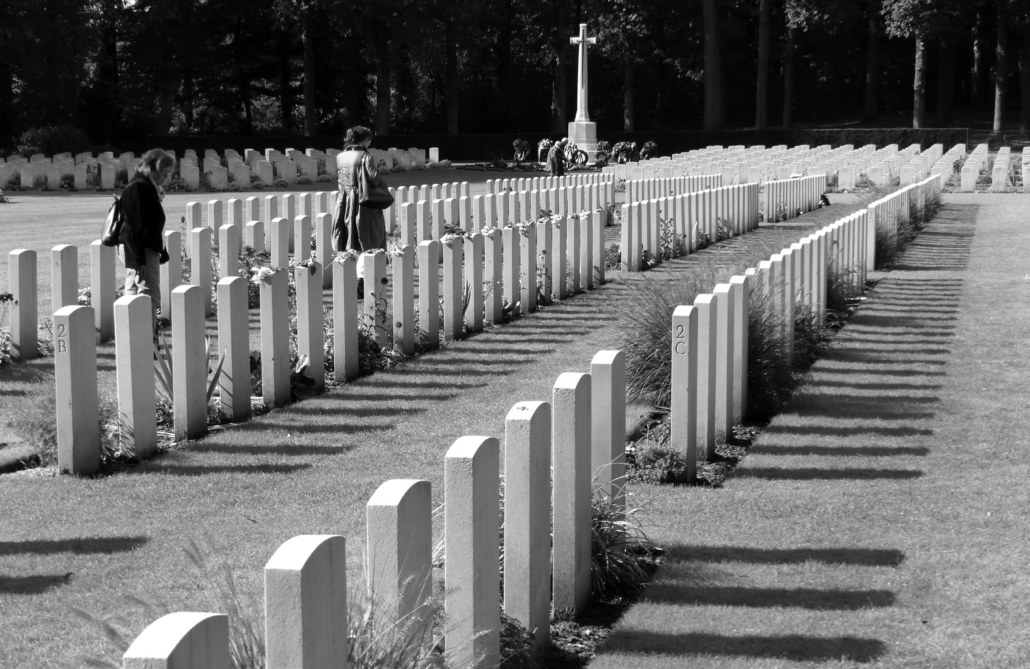
Visitors at the Airborne Cemetery in Oosterbeek.
That the technical and tactical information written down by Tiemens about the Ylevel system is incomplete and is now somewhat outdated here and there, is easily said with hindsight. Tiemens did not have a medium like the internet at that time, forty years after the end of the war. All information had to be recorded from existing publications, where available, correspondence and conversations with eyewitnesses. That all interviewed exservicemen and women did not exactly know what happened and when, after 40 years had passed, is even less surprising; the Ysystem was top secret after all and information was provided purely on a ‘needtoknow’ basis. Willem Tiemens, who passed away in 2005, cannot be condemned for that. It is his merit that he has taken the trouble to speak and write to the people who where there and who lived through the days, and thus to record an important piece of Arnhem war history. It is only right and proper that the Teerosen book is still wanted today. Years ago I bought my copy at De Slegte for a few Guilders. Mint copies are worth at least ten times that amount in Euros now. – Willem Kleijn More: www.airbornearnhem.nl/WillemTiemens
In this new section Forgotten work we highlight publications that have withstood the test of time well, and which for that reason are still important for a broader understanding of the military operations in the east of the Netherlands during World War Two.
PERSONAL STORIES AT THE OOSTERBEEK CEMETERY
Every year in September, when the streets of Oosterbeek are marked by maroon flags, the fallen airbornes are commemorated. Increasingly this is done by personal messages and stories which are left close to the graves on Oosterbeek cemetery. What do these messages tell us?
In the leafy northern edge of Oosterbeek, the Airborne cemetery is situated, fringed by oak trees which hardly tend to autumn on this beautiful day. In the silence, acorns can be heard plumping down. High in the blue sky the thin cry of a buzzard can occasionally be heard. On the sundrenched cemetery, flowers attract the attention: on the white natural stones with the inscription ‘Stone of Remembrance’ and to the lawn in front of the tombstones. The flowers disturb the tight rhythm of white and green. The asters, golden daisies, sunflowers, white roses and little bouquets in red, white and blue have been laid down here a week ago by local school children; on each of the 1754 graves. A tradition started in 1954.
Messages have been placed on many graves, attached to flowers or wreaths or just on a piece of paper. Quite often it is a personal message directed at the deceased, like ‘My darling Dad, Love and miss you always’. A wooden memorial is inscribed ‘from your grandsons who never knew you, from your son who never forgot you’. Not just family members come to Oosterbeek to commemorate their dead, but other relatives as well. On behalf of the cadets and students of St. Mary’s College Crosby plastic poppy wreaths are placed at two graves of former pupils of this school in the vicinity of Liverpool.
Often the framed and laminated messages are addressed to the visitors. Some concise, others more lengthy. The stories illuminate the military career and explain where and when the one died. Corporal Henry Large’s family narrates that he reenlisted voluntarily after he got wounded in June 1944 at Caen in Normandy. He fought with the 5th Battalion the Duke of Cornwall Light Infantry and ‘was killed in action at Driel, Holland, we think’.
SOME COMMENTS
Other messages go beyond just the personal level.
They comment on historiography such as at Canadian Sapper McKee’s grave. McKee is one of the seven Canadian soldiers who perished during Operation Berlin, the evacuation and crossing of 1st Airborne Division to the southern bank of the river Rhine.
The author notes that most reports about the Battle of Arnhem don’t pay attention to the evacuation and often even ignore the Canadian contribution to the operation. ‘Buck’ McKee was hit by shrapnel, while he was engaged in dragging the canvas boats from the trucks to the bank of the river.
Some texts go one step further yet, by commenting on the identification of a few Polish graves. They show portraits with an explanation attached in English and Polish, and are accompanied by email addresses. On a tombstone of an unknown Polish soldier, with just the rank and the indication ‘September 1944’ on it, a note is placed that reveals the name and unit, but also where, when and how the soldier was killed in action. At the graves of two unknown Polish soldiers, an attached piece of paper explains which person is buried in one of them. This Polish soldier was shot shortly after the landing, after he surrendered to the Germans. Three additions can be found, on one of them at a named tombstone.
Spread around Oosterbeek cemetery one can witness the report of one Pole’s passionate search for the identity of his killed compatriots. A noble aspiration, but you have to be absolutely certain to argue who the unknown dead are at a cemetery, and even more so to report a wrong name on tombstone. Try to imagine what Polish relatives must feel who find such a text on the grave of their loved one.
FAMOUS WAR PICTURES
Except through the written notes, the memory of the dead is kept alive by pictures. Many graves are decorated with individual portraits, often posed, some in uniform, mostly black and white and some coloured. Some pictures, made during the battle, stand out. One shows private William Preen of the Parachute Regiment. A famous war time photo is stuck in the ground in front of his grave. It shows some airbornes defending a trench along the Van Lennepweg in Oosterbeek. Preen turns out to be the most left soldier, equipped with a Stengun. The text refers to a Market Garden website of a Dutch teenager. At sergeant Turl’s grave, a Glider Pilot, lies another well known picture, hidden behind a vase of roses. A picture revealing two glider pilots cautiously entering the burntout school along the Kneppelhoutweg.
John Turl is the man in the back armed with a Lee Enfield rifle, according to the handwritten note. The picture was made on the 21st of September, just four days before Turl was killed. It’s jarring to see these pictures not in a book, but on the grave of the man in the photograph.
COMMEMORATION TOUR
Messages are left on war memorials as well. In fact, I came across the same message in different places.
It creates the impression of family members conducting a commemoration tour. A framed message at the grave of Sergeant George Edward Thomas tells us how he commanded a 17pounder antitank gun positioned in the flood plains nearby the Old Church in Oosterbeek. There he was fatally injured. The message mentions how his wife’s ashes have been scattered over his grave, 62 years after his own death. His family visited the Old Church at Oostbeek as the identical framed text placed at the memorial behind the church tells us.
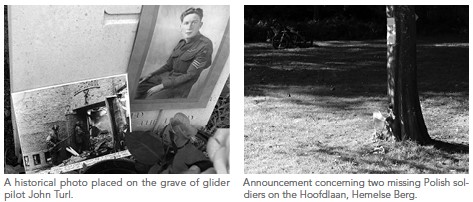
Even after the war deceased veterans were commemorated in various locations around Arnhem and Oosterbeek. Even veterans who were buried elsewhere, like Ken Fleet, B company 156 Parachute Battalion. His friends commemorate him with flowers at lieutenantcolonel Des Voeux’s, his Commanding Officer, grave. Flowers have been laid for him on locations where this battalion fought. Such as the battlefield markers at the Dreyenseweg and at Hackett’s Hollow close to Valkenburglaan. Fleet died in 2005 at the age of 89. Signaller George Wray, 2nd Parachute Battalion, survived the war. He was able to reach Arnhem bridge, got injured and was taken prisoner. The signaller managed to escape, married after the war and got two children, according to the text which is illustrated with pictures of Wray. Pictures where he is behind the wheel of a jeep, posing in front of a Dakota airplane and drinking beer with his comrades. Messages about George Wray can be found on Oosterbeek cemetery in front of the ‘Cross of Sacrifice’, but at the Airborne Memorial in front of Hartenstein and at the Old Church in Oosterbeek as well.
The Polish researcher who is investigating the missing persons also made a tour along the battlefields. He attached a written note to a tree at the Hemelse Berg. Two additional Polish soldiers are thought to be buried in a field grave close by. They died the day after they successfully crossed the river Rhine and reached Oosterbeek. Two bouquets, a red rose and a small Polish flag turn this tree into a memorial place. Through these messages left behind, some soldiers get a face. We get a glimpse of their fortunes and feel how they are missed. They are just a few of the 1754 buried dead. The ones without a name, a face or a story are not missed less. This realization speaks from the contemplation laid down at some unnamed graves by a visitor. Every name is a face Every face is a human Every human an empty place Every empty place sadness Every face a unique sadness. – Ruurd Kok Thanks to Geert Maassen commenting previous versions of this article.
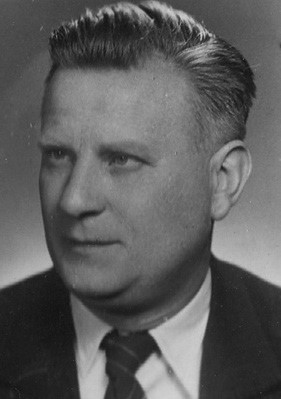
Albin Krzysik
ALBIN’S ENIGMA
Objects that have a relationship with the Battle of Arnhem can ben found not only at the Airborne Museum in Oosterbeek, but also at various museums in the Netherlands and abroad. The collection of the Overloon War Museum holds a service dress of a Polish parachutist that raises some intriguing questions.
In the nineties, the Airborne Museum was notified by the Polish embassy that a Polish veteran wanted to donate his service dress to the museum. The Polish military attaché at the time felt, however, that the uniform was a better fit for the War and Resistance Museum in Overloon (now: Overloon War Museum). The Airborne Museum already had a number of Polish uniforms and Overloon gladly added the desired item to the collection.
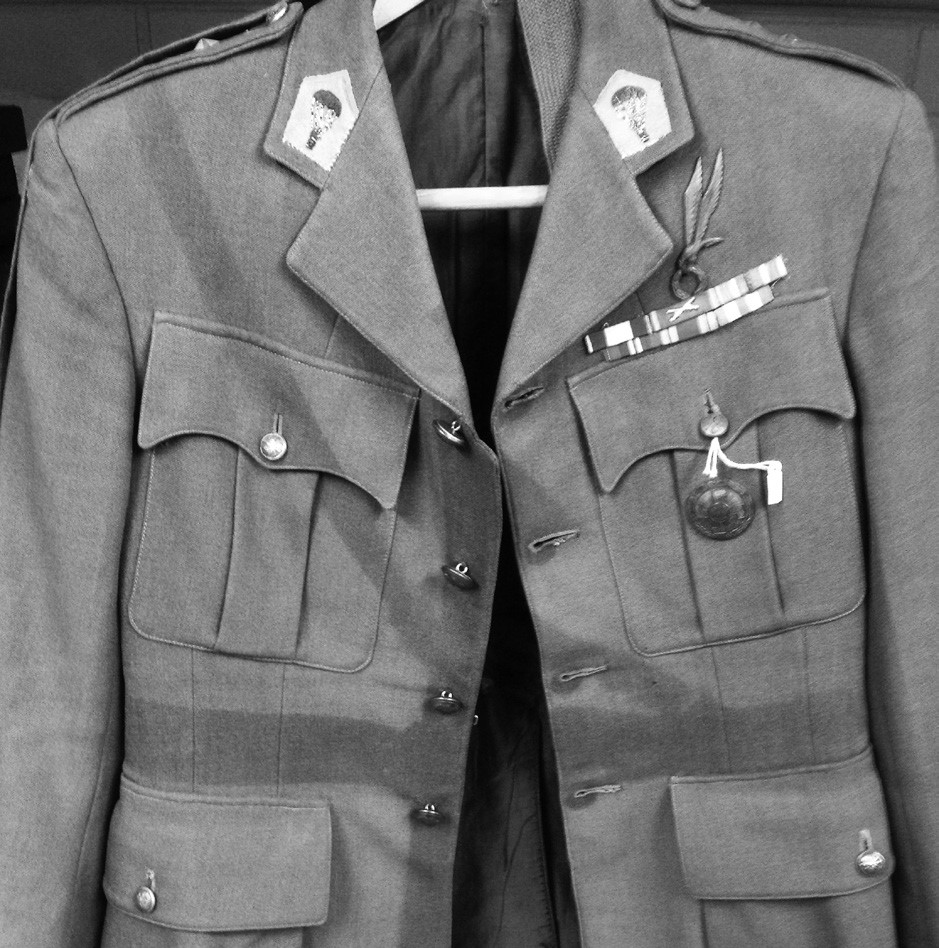
Krzysik carried the following batons:: Top row: Krzyz Walecznych 19391940 (‘Cross for bravery’), Krzyz NA POLU CHWALY 1944 (Cross ‘On the field of honour’), Medal WOJSKA with buckle for the 2nd award (Army Medal) Bottom row: The War Medal; The Africa Star; The France and Germany Star. On the left chest pocket we see the badge of the prewar Polish Highland Rifle Brigade.
PARACHUTE OR GLIDER?
The service dress was worn by 2/Lt. Albin Krzysik. Albin was, according to tradition, part of
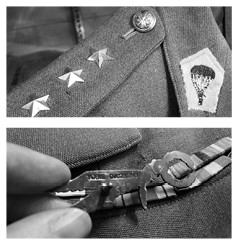
On the uniform we see his parachutist badge with laurel wreath. The wings are numbered 553, the number of the laurel wreath for combat jumps is 26. The current uniform has the rank of a captain. For his dedication, Krzysik received the Cross for courage. The right and left collar bears the emblem of the Polish parachutists. These are embroidered and are probably a private purchase.
the Polish front detachment and landed, so the story continues, north of the Lower Rhine during the Battle of Arnhem. This is not very likely, according to Jan Lorys’ 1st Polish Independent Parachute Brigade Group: Polish Airborne Forces at World War II at ArnhemDriel 1944: list of participants. On page 66 I read that Krzysik belonged to brigade headquarters and landed on an unknown date. And by glider.
But how did Albin get the laurel wreath for his battle jumps? The only jump he could have made during Market Garden was on Driel. Unless he landed with the main force of 1st Airborne on September 17th. I once again picked
up a book. In George Cholewczynski’s The Poles of Driel I read that on that day only one Polish parachutist jumped, namely: Alphons Pronobis, 1st Lieutenant, wing number 1353, Battle Jump No. 14. Alphons was a scout for the brigade. Interestingly, according to the Polish Institute and Sikorski Museum, Alphons did not land on 17 September, but on 18 September 1944. Also by glider. One of these ten Polish gliders transported a detachment of the brigade headquarters.
That Cholewczynski is wrong is not very likely. The name and date are too specific for that.
But how the laurel wreath ended up on Krzysik’s uniform probably only Albin knew. – Wybo Boersma
TAXI’S, TSHIRTS, AND MORE – HOW THE MARKET GARDEN FOUNDATION MAKES ITSELF HEARD
At the start in 1993 the website www.marketgarden.com was one of the first websites on the Dutch internet. The globally operating Market Garden Foundation (MGF) now has quite a track record that goes far beyond running a site. A brief history of the foundation from the 60th commemoration of the battle onwards.
2004: Unveiling of the Digital Monument, officially launched during the 60th anniversary with a live broadcast on television. The Digital Monument contains files with data and photographs of more than 3,363 airborne troops, support units and 640 civilians who died during Operation Market Garden.
Many files contain information about the circumstances in which or where the person has been killed.
The Digital Monument is still being expanded. In 2004, the MGF also launched a tshirt campaign for the school children of Oosterbeek. The shirts, with the famous quote “I am a child of freedom” on them, are now a collector’s item.
2005: Publication of the book All men are brothers, containing the roll of honour of the 1st (Polish) Independent Parachute Brigade
2006: Unveiling of the Aircrew monument, at the back of the Airborne Museum. Since 2006 a commemoration has taken place every year. 2006 was also the year of the rehabilitation of the Poles; MGF is supervisor of the Bronze Lion of the Sosabowski family.
2012: Taxi crossing from England: 86 London cabs carrying 160 WW2 veterans to attend the Dutch May 4th commemorations and the celebration of Liberation Day on the 5th.
2013: Creation of the RECCE monument, behind the ‘needle’ opposite the museum.
2015: 4 and 5 May: the last big ‘taxiaction’ of British WW2 veterans, including a large number of Market Garden and Arnhem veterans.
2016-2018: Organization of a guest of honour event for the 70th Airborne Walking Tour: five Arnhem veterans who also came by taxi.
2018: Unveiling the monument for Dakota 626 at the Bakenbergseweg in Arnhem, in collaboration with The Royal British Legion Holland Branch. For further details see: https://www.fz626.com. More about this monument in the next issue of Airborne Magazine.
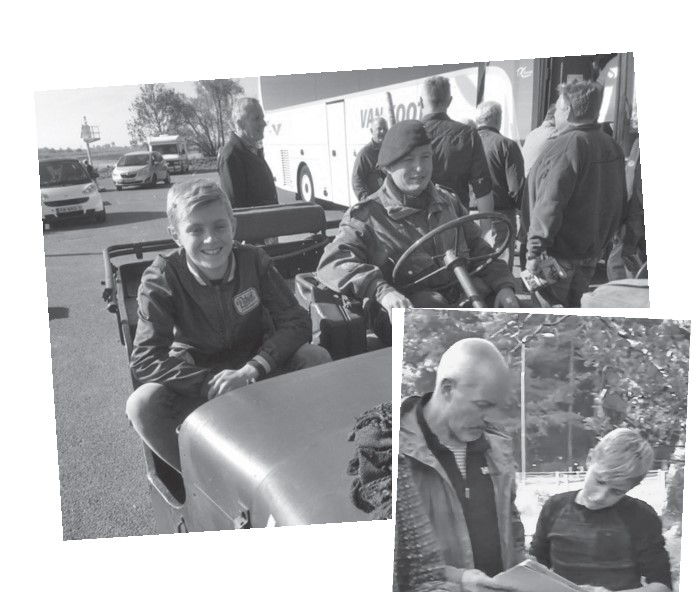
REACTIONS: “I PROBABLY LEARNED MORE FROM THE TOUR THAN FROM AN ENTIRE BOOK”
Why, ‘battlefield tours only for middleaged men, clad in polo shirts with regimental badges?’ Teun van Ingen, a teenager with a keen interest in military history, proves otherwise. He wrote to our magazine about the Border Regiment trip he went on in October.
Hello, my name is Teun van Ingen, I am thirteen years old and I live in Rhenen. On 6 October I went on a battlefield tour with my father. It was about the 1st battalion of the Border Regiment. I knew almost nothing about this battalion beforehand, so at first it was a bit difficult to understand which company landed and in what direction they were going.
I take an interest in the Second World War and I already did a presentation at school about the Grebbeberg. I take part in the Airborne walking tour every year and have been to the museum a few times, but I never really thought about the battle of Arnhem. By the way, I am a Vitesse fan and I know that Vitesse plays a game in the Airborne shirt every September. But I did not know that much about Market Garden.
Because I wanted to know more about the battle, I joined a battlefield tour of the VVAM. I really liked it! I was amazed by what had happened everywhere, not just by the movements of the troops, but also by a lot of personal stories of soldiers and civilians. The break was very nice; the reenactors made the whole story very special. They did several mockups of what had happened on the very spot where it all took place in 1944, and they showed how certain actions had developed.
I learned a lot about the landing zones and the various units that landed around Oosterbeek. But I learned a lot from the Allies also, even from the German side and what happened there. I have now been to a number of places where I often pass during the walking tour and where something very important has happened.
For me the best thing of the tour were the guides: Erik and Luuk. They were so attentive. And the further we came the more I felt I had to know more about the battle. If I ever have the chance to go on a tour again, I would definitely do so. I may have learned more from this tour than from an entire book. To sum it up in one word: great!!!
Best wishes, Teun van Ingen
PROPOSED PROGRAM 2019
SPRING
15 February: Theme night ‘Antitank during the Battle of Arnhem’
16 March: General members meeting with a lecture on the Landstorm
13 April: Book fair
27 April: Battlefield tour: 156 Parachute Bn 1216 May: Battlefield tour: Normandy
18 May: Halfday theme ‘The Glider Pilot Regiment’
June: Theme night (to be decided)
FALL
7 September: Battlefield tour: Lombok (Arnhem) September: Battlefield tour: Market Garden (to be decided)
5 October: Battlefield tour: Pegasus 2
16 November: Airborne Day
13 December: Theme night (to be decided)
For further information concerning the various activities, to sign up for events, or to make changes to reservations, please visit www.vriendenairbornemuseum.nl or send an email to: activiteiten@vriendenairbornemuseum.nl
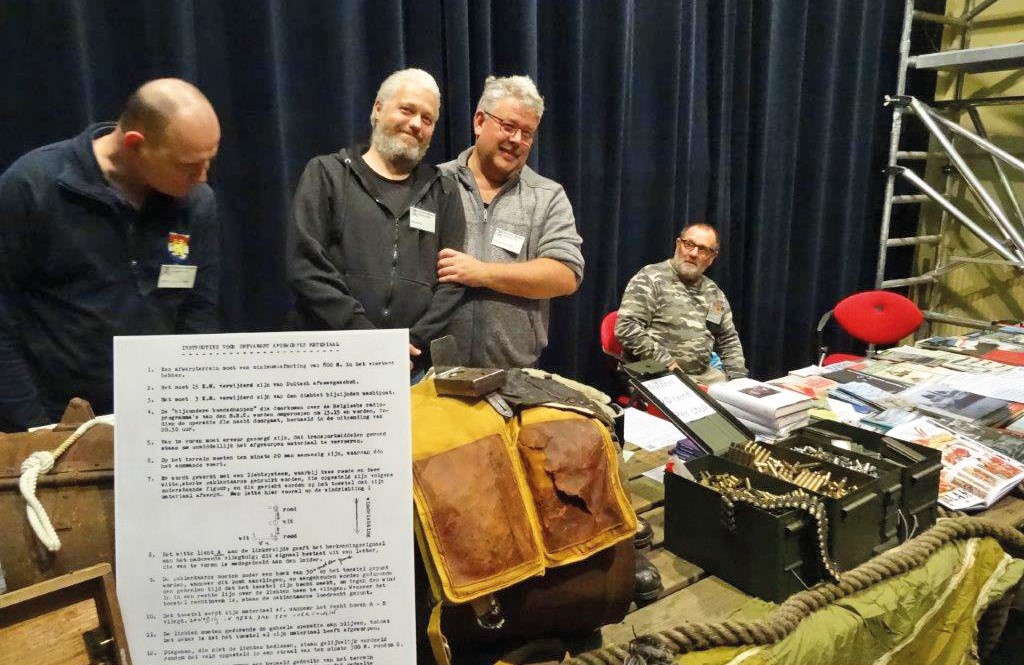
Member displays at Airborne Day 2018.
UPCOMING MAGAZINE ISSUES
NUMBER 14 APRIL 2019
NUMBER 15 AUGUST 2019
NUMBER 16 DECEMBER 2019
CONTRIBUTE TO THE MAGAZINE
The editors are eager to hear your comments and suggestions, and welcome any articles you may want to send in. For an efficient process, please request the submission guidelines via: magazine@vriendenairbornemuseum.nl
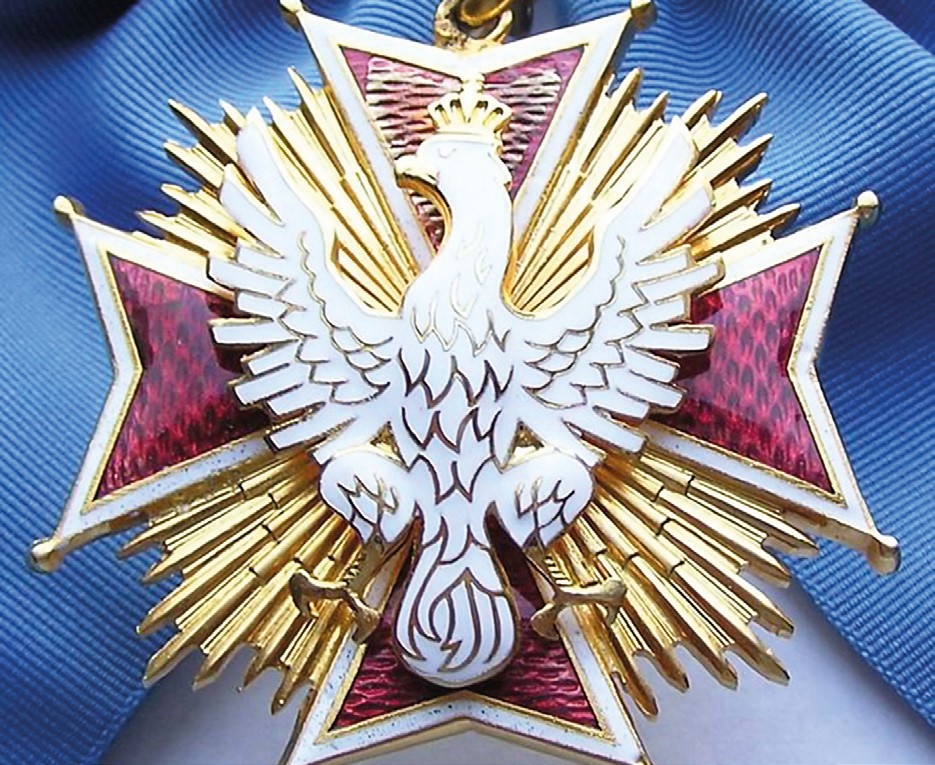
THE BACK COVER: On 11 November 2018, Independence Day in Poland, president Andrzej Duda handed out posthumously the Order of the White Eagle to Stanislaw Sosabowski (18921967). This year it is 100 years since Poland regained its independence. The Order of the White Eagle, Order Orła Białego in Polish, is the highest award of Poland awarded to both citizens and soldiers for their great earnings. The order has been posthumously awarded to 24 other famous Poles.
The Airborne Magazine is a publication by the Society Friends of the Airborne Muse-um, Oosterbeek and is released three times a year. The purpose of the magazine is to promote the Airborne Museum, the activities of the Society of Friends, and the general history surrounding the Battle of Arnhem.
Editorial staff:
Alexander Heusschen (magazine@vriendenair-bornemuseum.nl), Jasper Oorthuys, Otto van Wiggen
Contributions by: Wybo Boersma, Alexander Heusschen, Teun van Ingen, Erik Jellema, Willem Kleijn, Ruurd Kok, Paul Meiboom, Leo van Midden, Martijn Reinders, Otto van Wiggen
Archive and magazine back issues:info@vriendenairbornemuseum.nl
Design and layout: Christy Beall
Printing: Grafi Advies, Zwolle
SFAM Email address: info@vriendenairbornemuseum.nl SFAM telephone number: +31 06 510 824 03.
Mailing address: VVAM, Wissenkerkepad 22, 6845 BW, Arnhem.
Website:www.vriendenairbornemuseum.nl
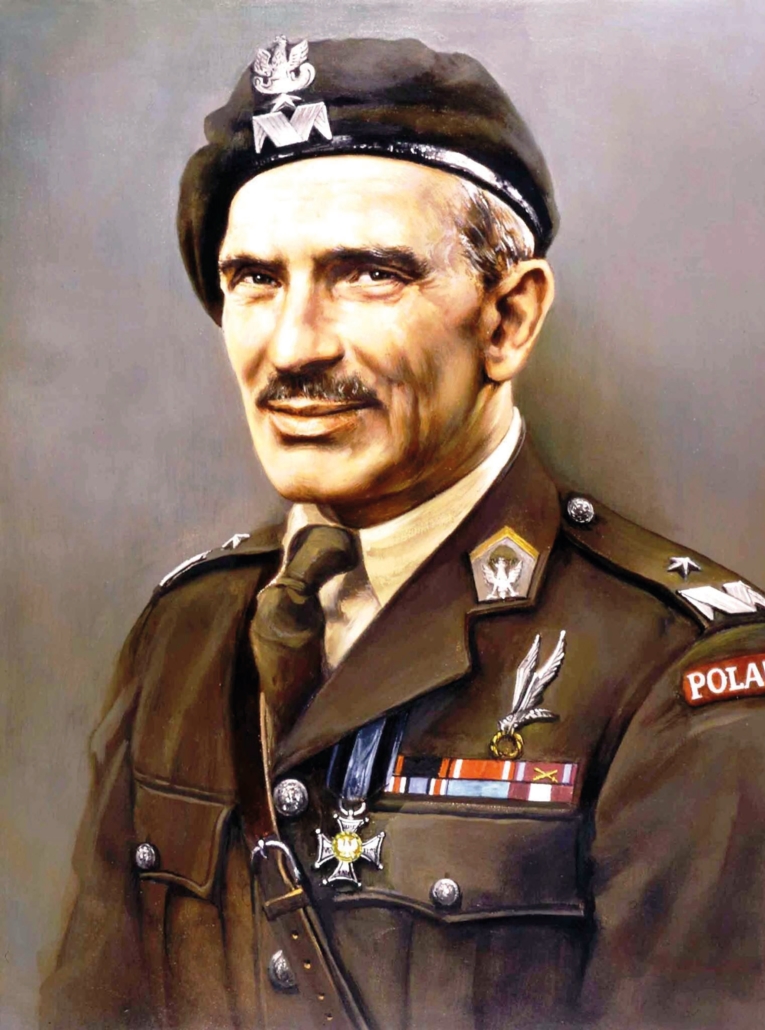
Oil painting of Maj. Gen Stanislaw Sosabowski at the Muzeum Wojska Polskiego, Warsaw Poland. (see also page 35)
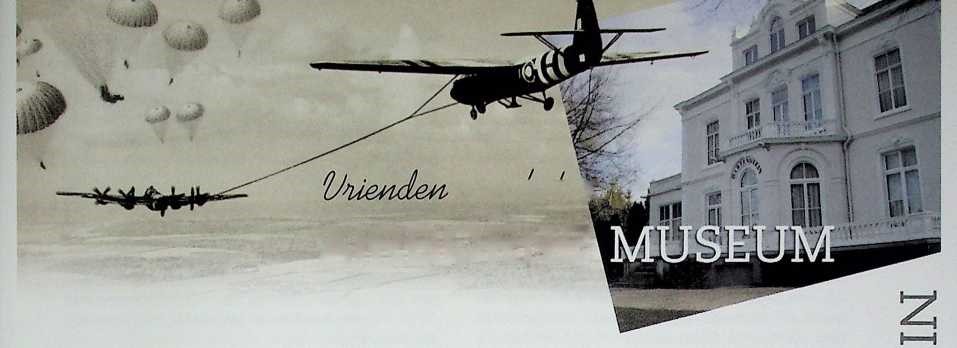
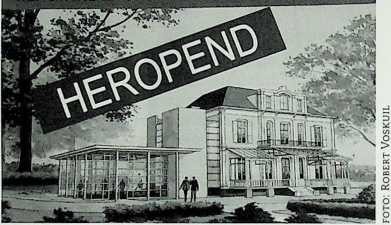
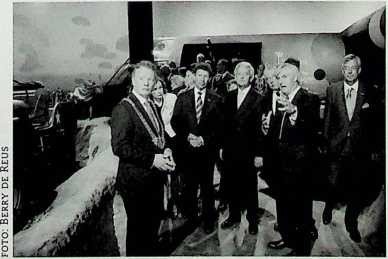
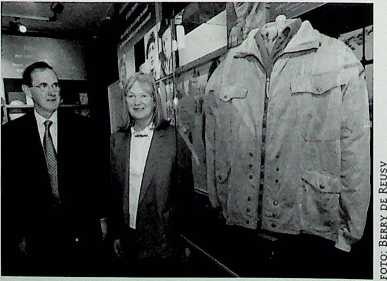
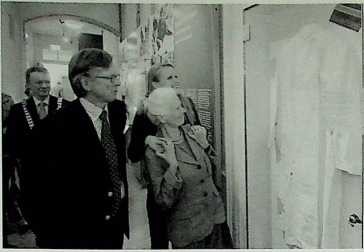
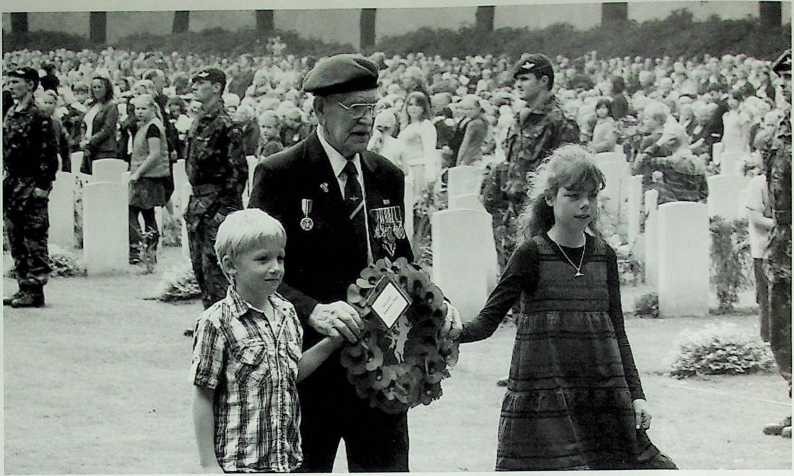
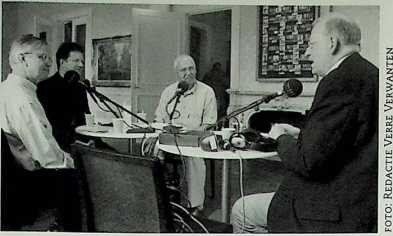
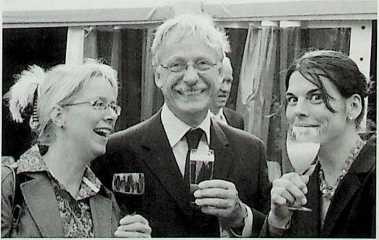
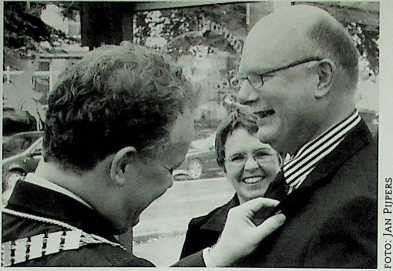
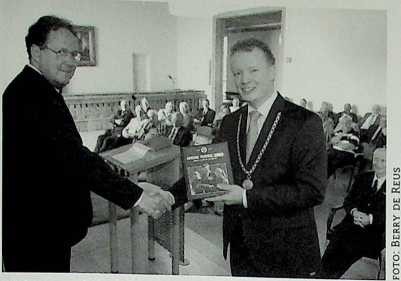
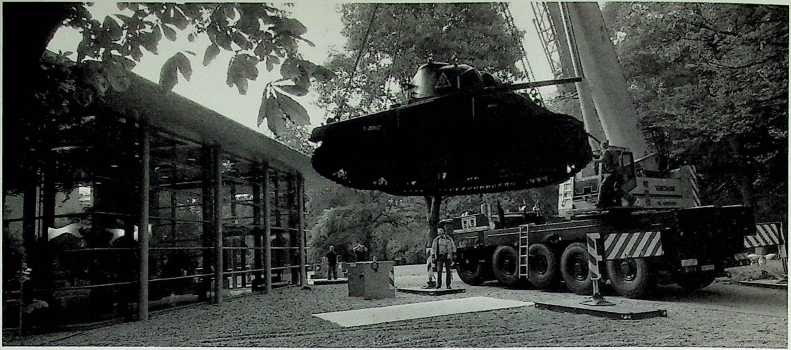

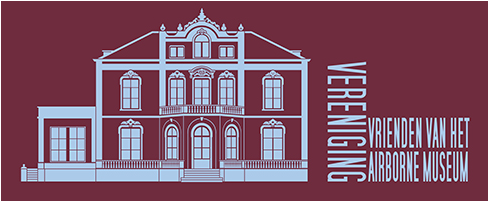
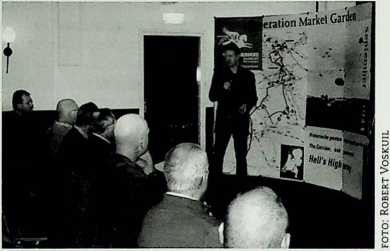

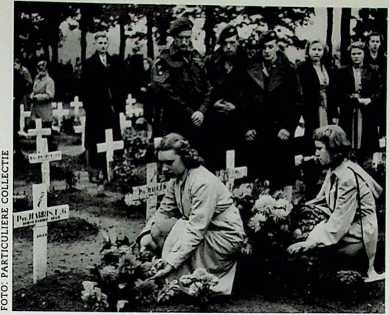
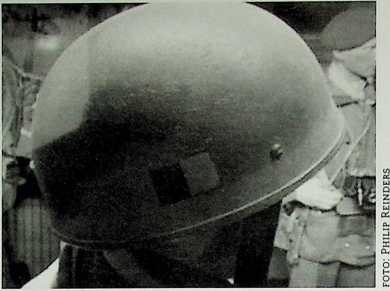
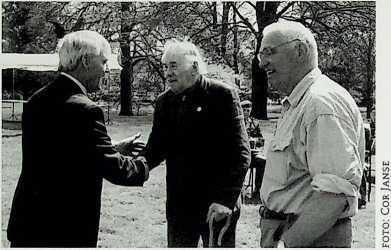
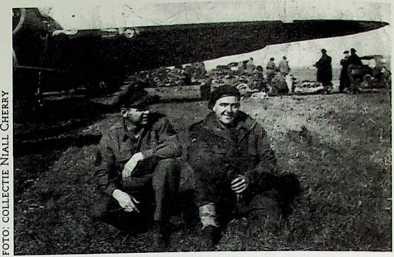
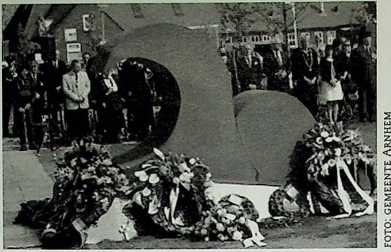
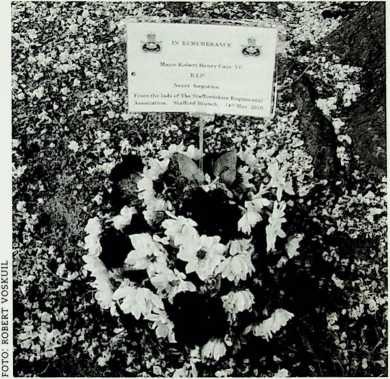
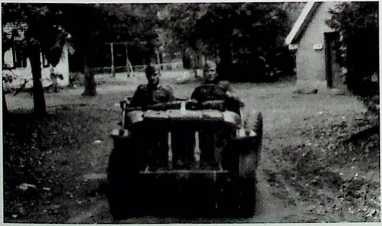

















 On 2230 hours in the evening Captain Ludwik Zwolanski reports to Major General Sosabowski. Zwolanski is the Polish Brigade’s liaison officer at 1st Airborne Division HQ. He has swum across the river and is carrying a message from Major General Urquhart. His urgent request is to cross the river this night using im provised rafts. These rafts will be ready at 0100 hours. Anxiously the Poles wait until 0300 hours. When no rafts show up, Major General Sosabowski is forced to withdraw his soldiers to the village of Driel.
On 2230 hours in the evening Captain Ludwik Zwolanski reports to Major General Sosabowski. Zwolanski is the Polish Brigade’s liaison officer at 1st Airborne Division HQ. He has swum across the river and is carrying a message from Major General Urquhart. His urgent request is to cross the river this night using im provised rafts. These rafts will be ready at 0100 hours. Anxiously the Poles wait until 0300 hours. When no rafts show up, Major General Sosabowski is forced to withdraw his soldiers to the village of Driel.


















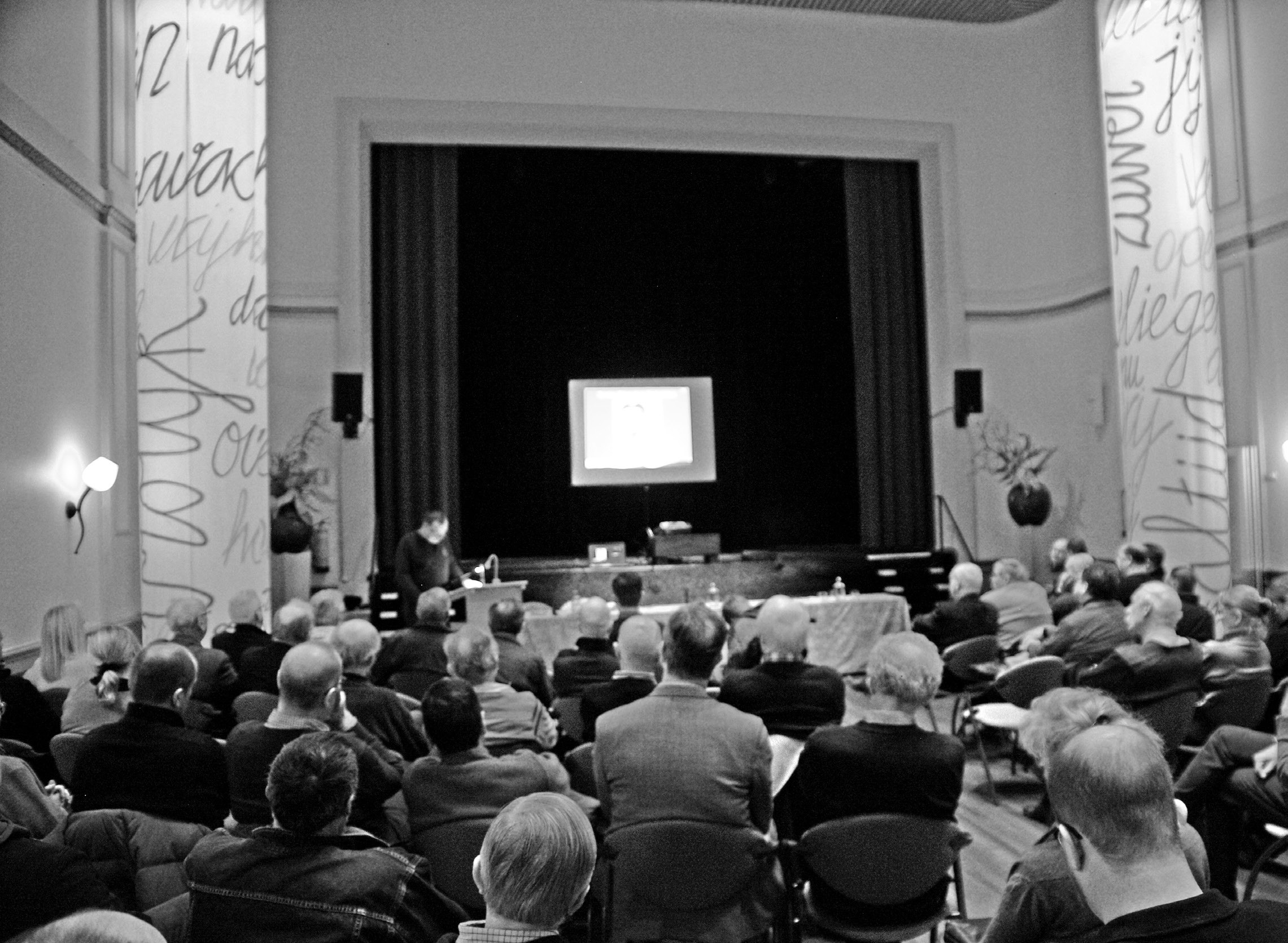
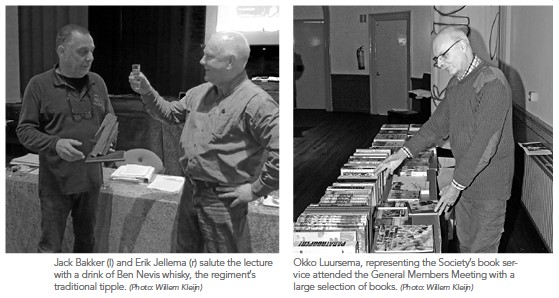 English membership. The number of English members has decreased substantially over the last few years. In part this is the result of a lack of communication due to the, necessary, inward focus of the SFAM. Moreover, the long delays between the publication of the Dutch and Eng-lish-language versions of this magazine under-standably caused considerably irritation.
English membership. The number of English members has decreased substantially over the last few years. In part this is the result of a lack of communication due to the, necessary, inward focus of the SFAM. Moreover, the long delays between the publication of the Dutch and Eng-lish-language versions of this magazine under-standably caused considerably irritation.